Nombre:
Jaipur
Otro:
Localización:
Tipo: Urbanismo
Categoría:
Foto:

Voto:
Continente: Asia
País: India
Localización: Estado de Rayastán
Año: 1727
Estado: Terminado
Descripción:Jaipur, capital de Rajastán
Publicado el 26 mayo, 2011 por Eduardo

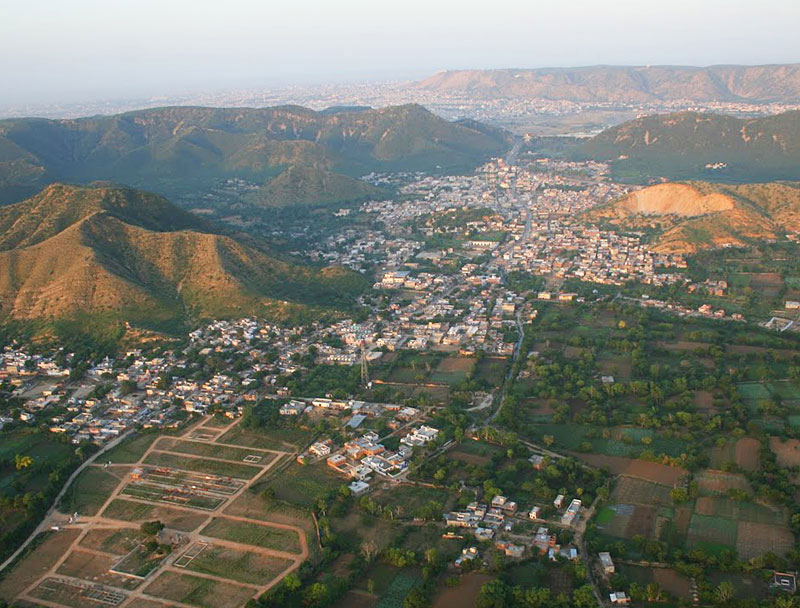
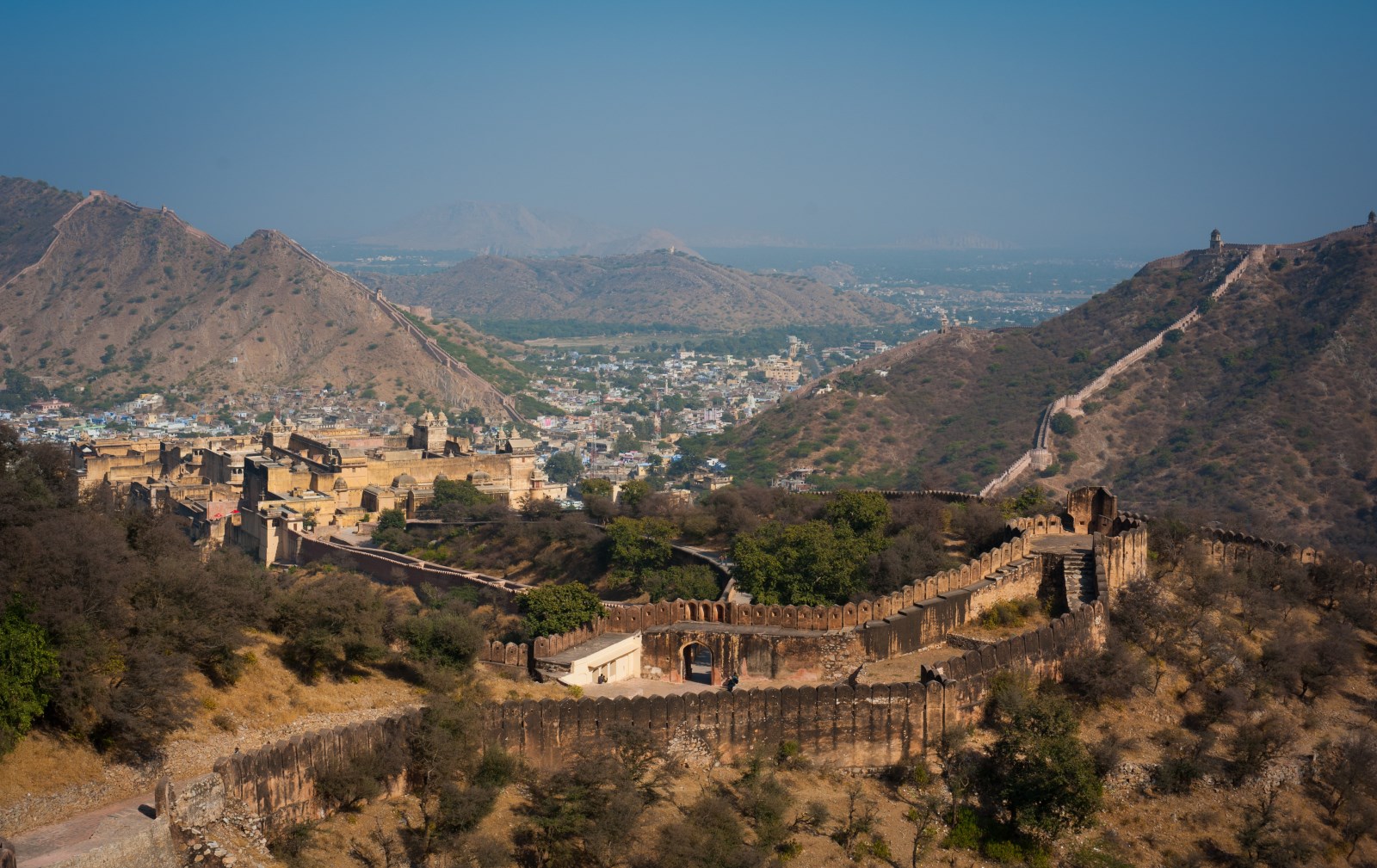
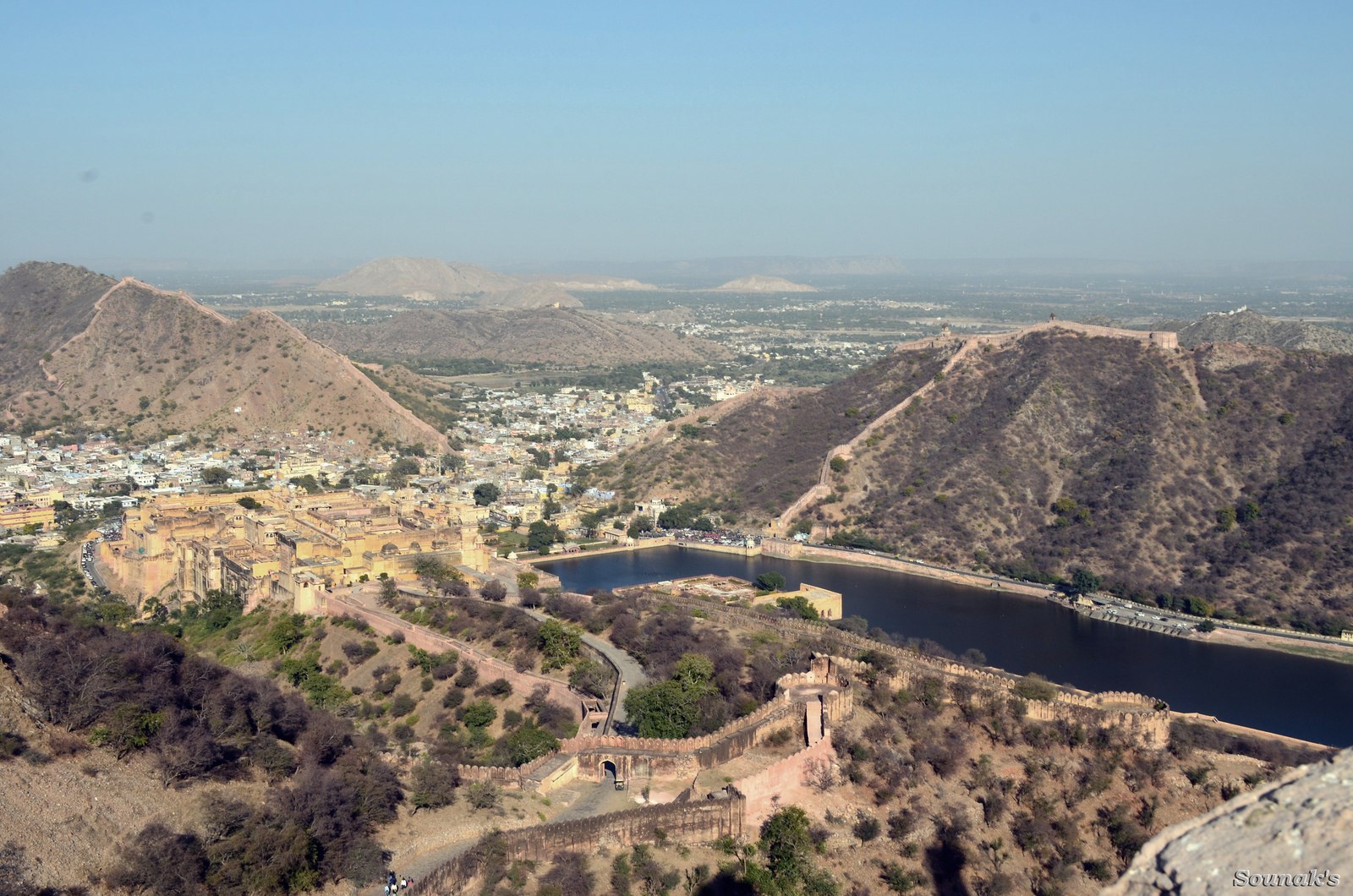
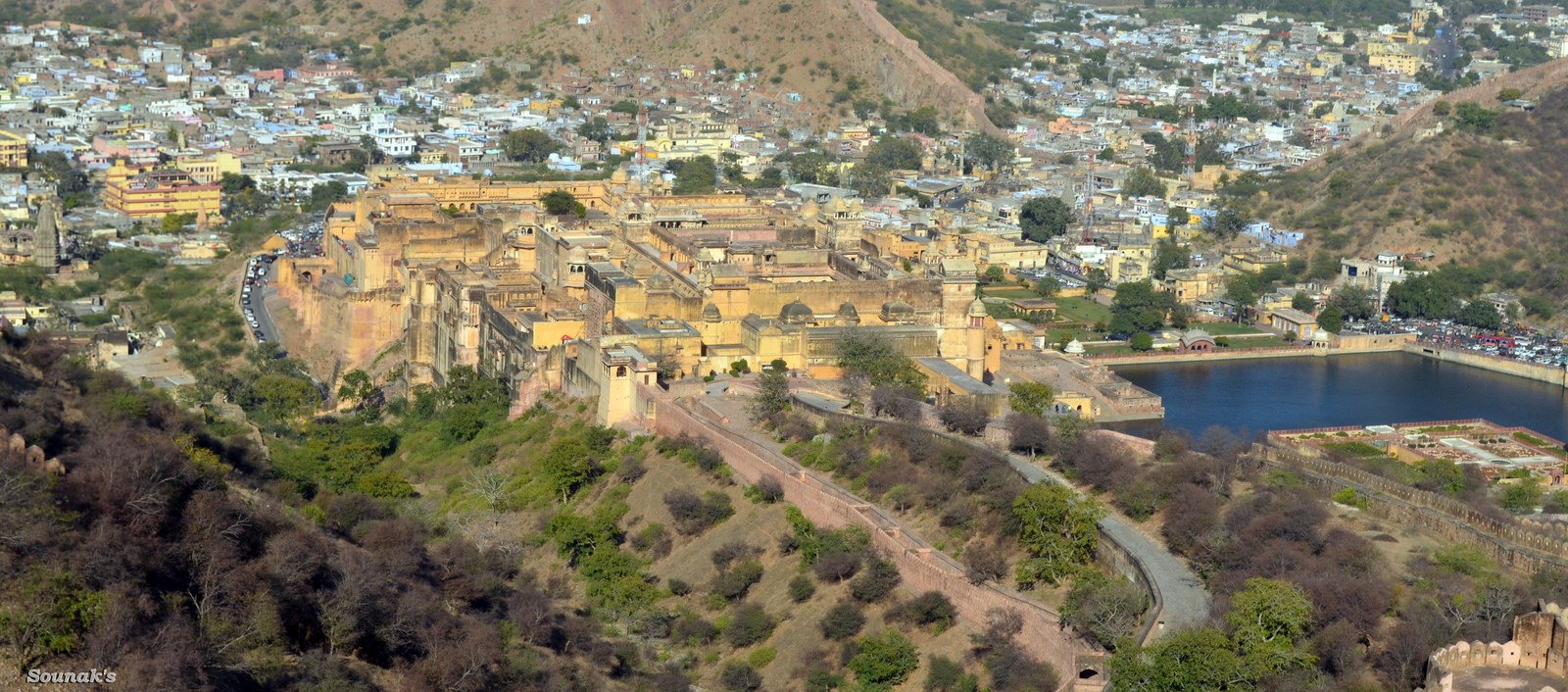
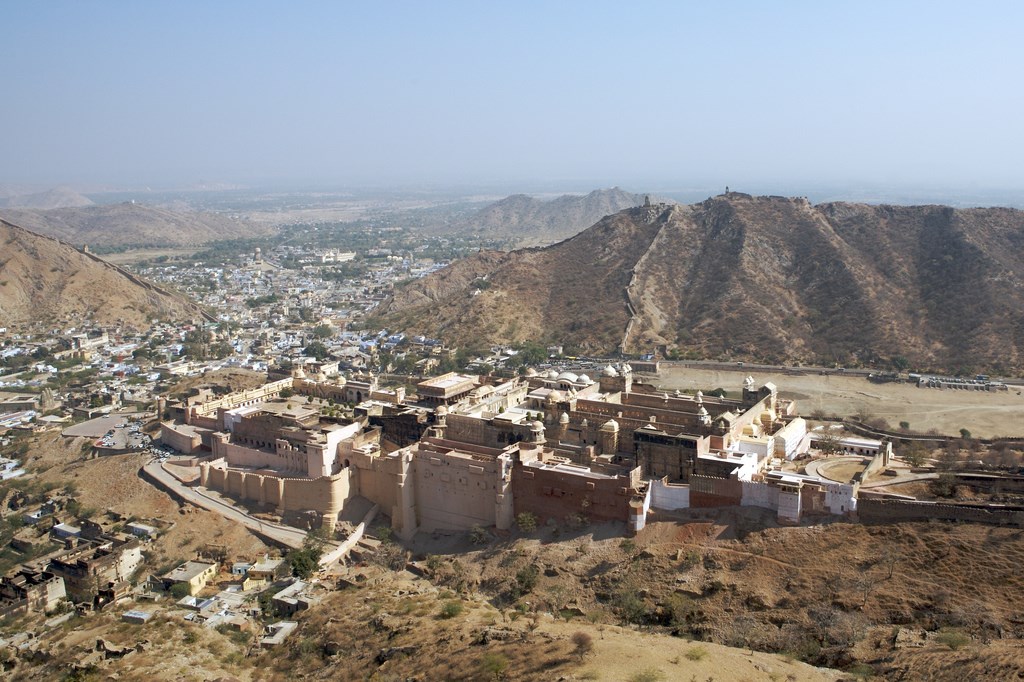
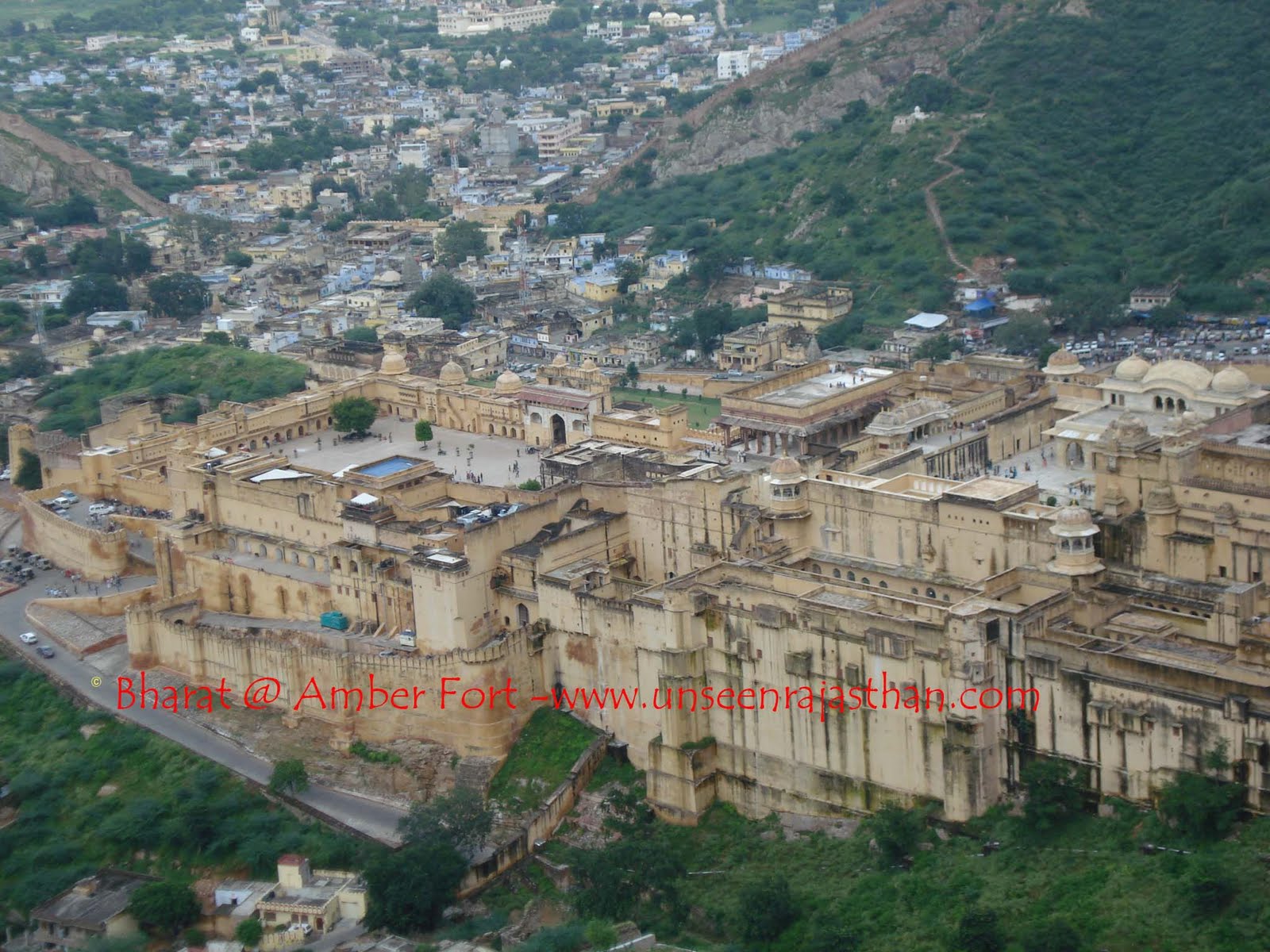
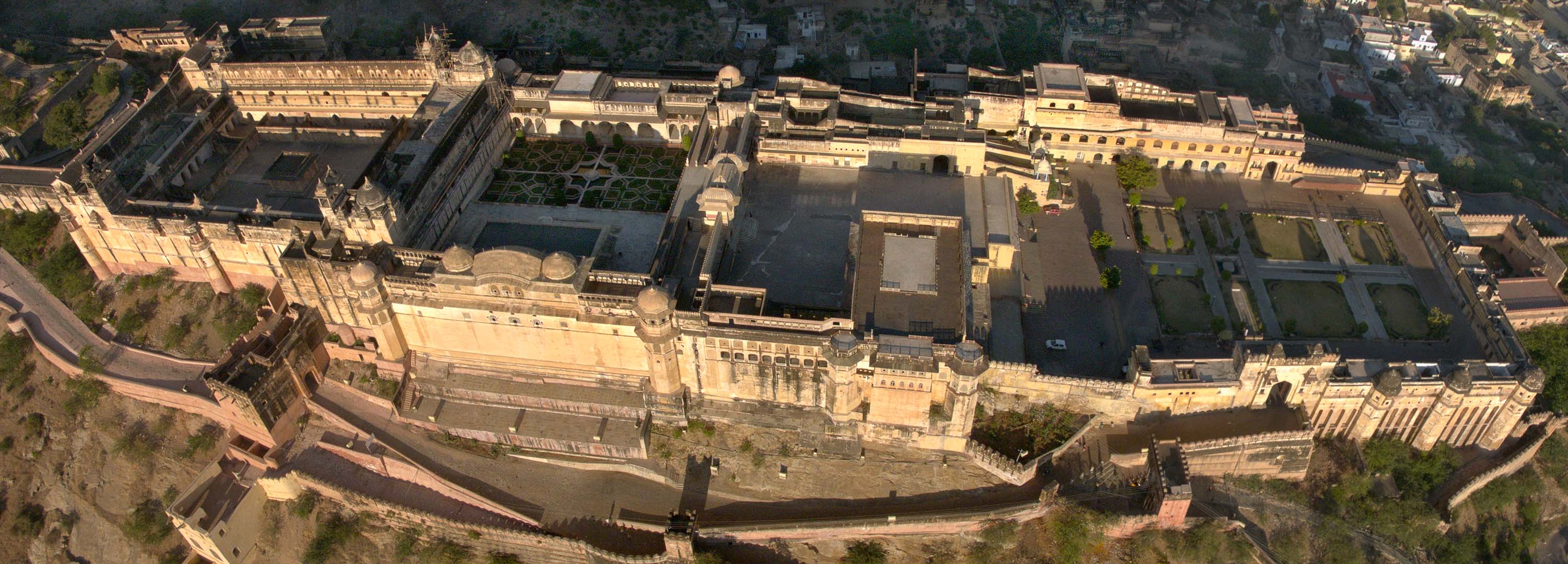
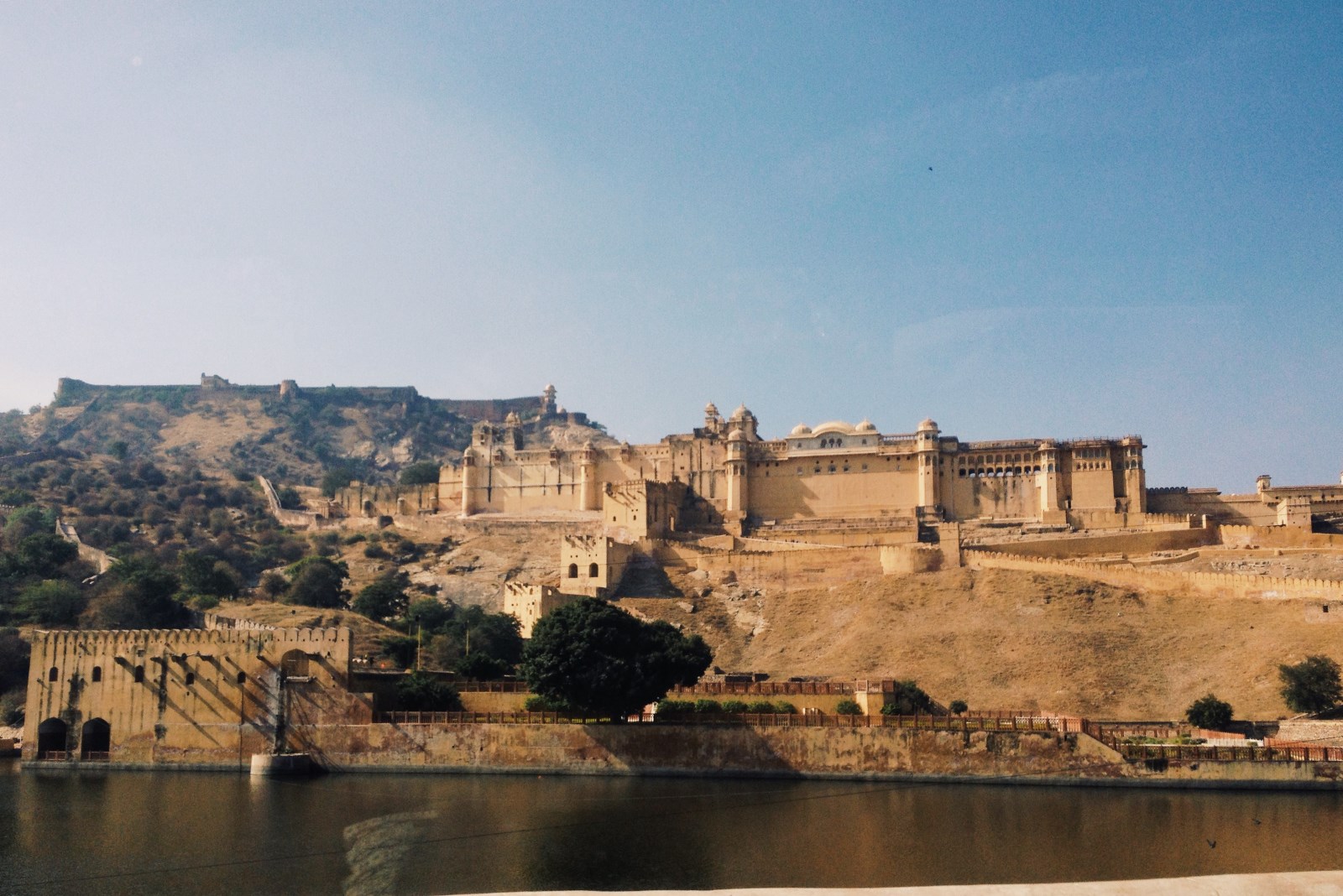
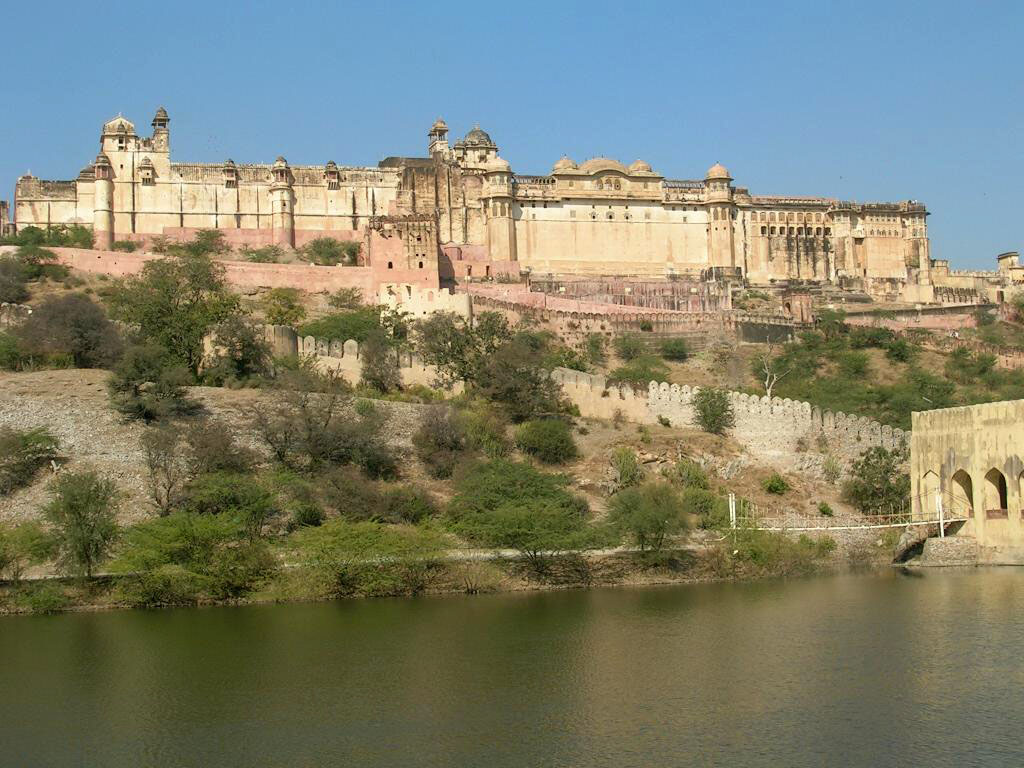
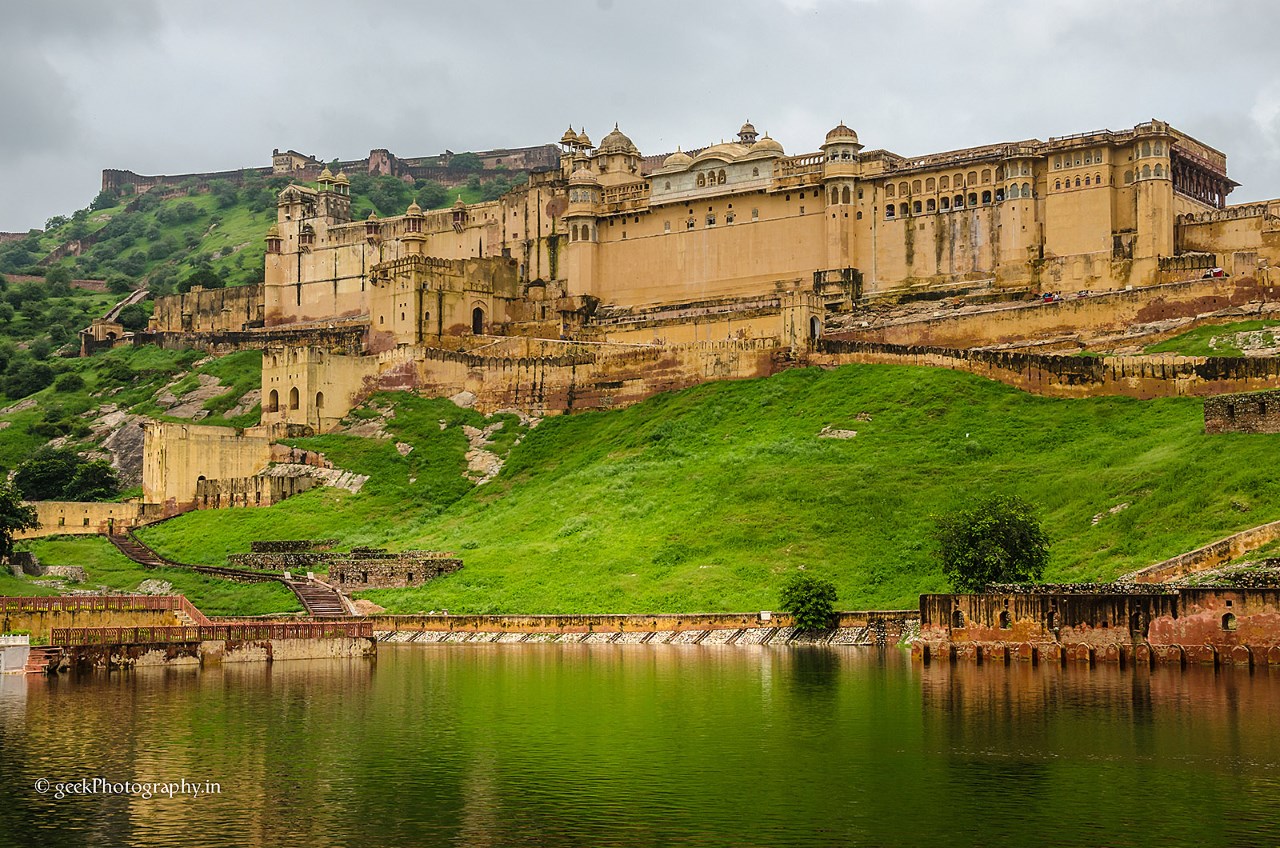
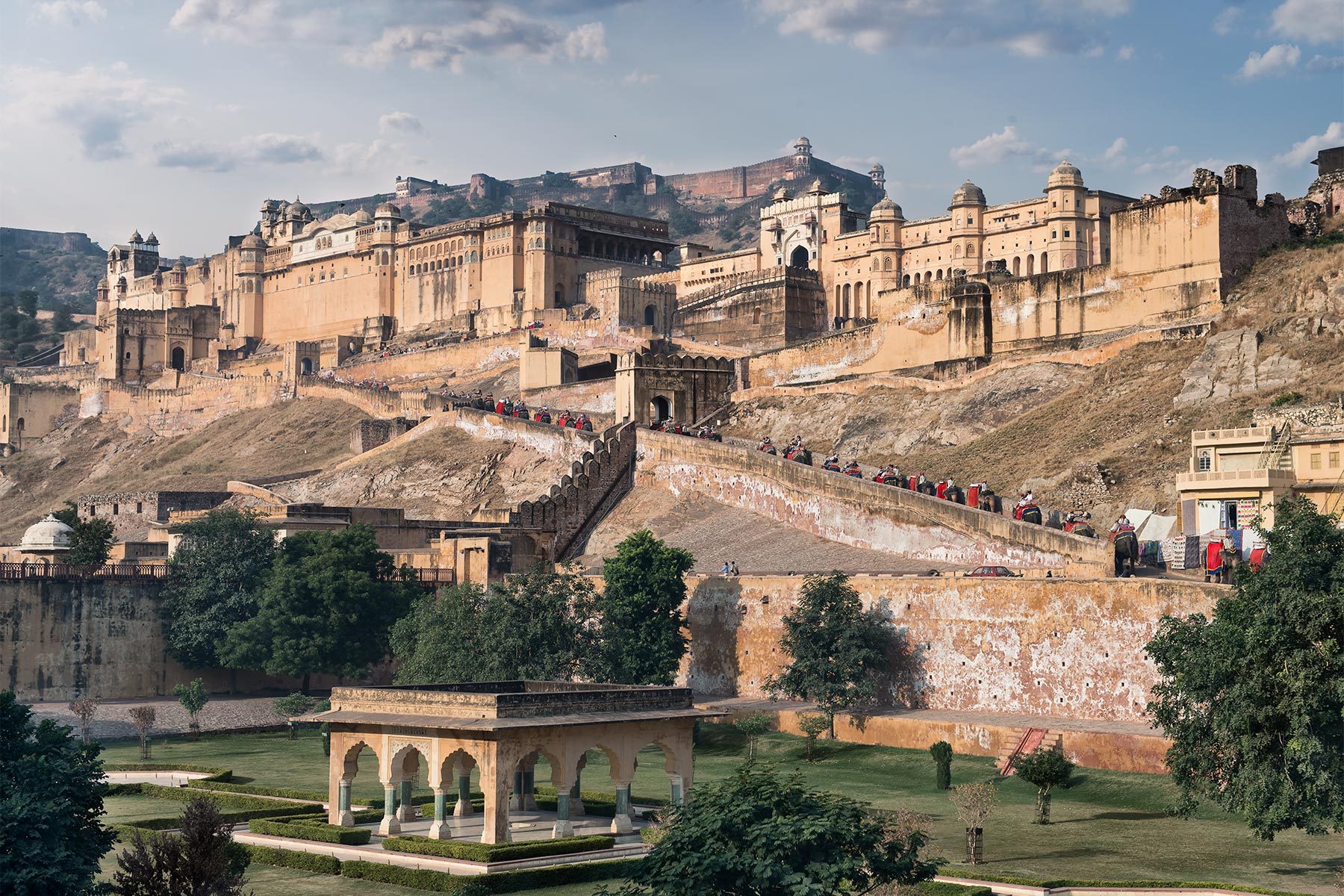
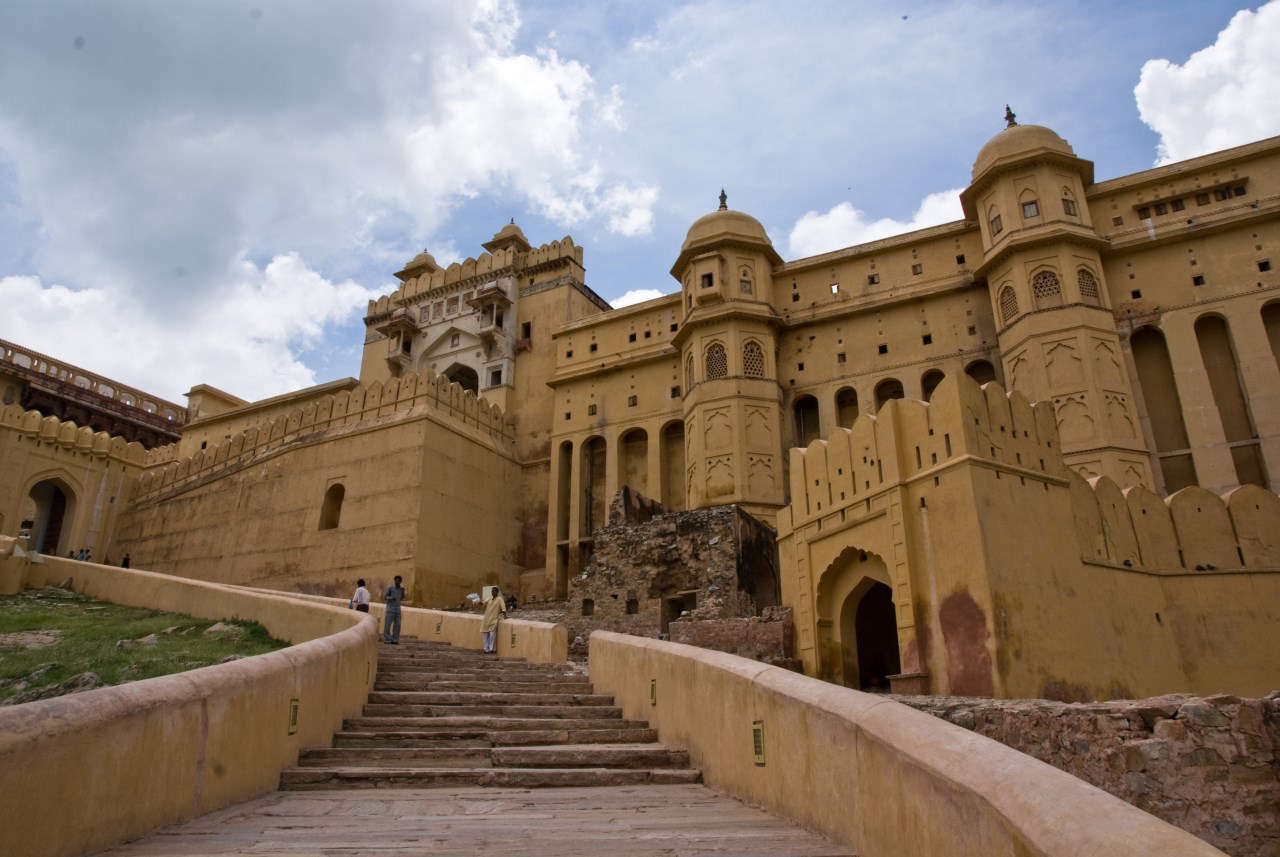
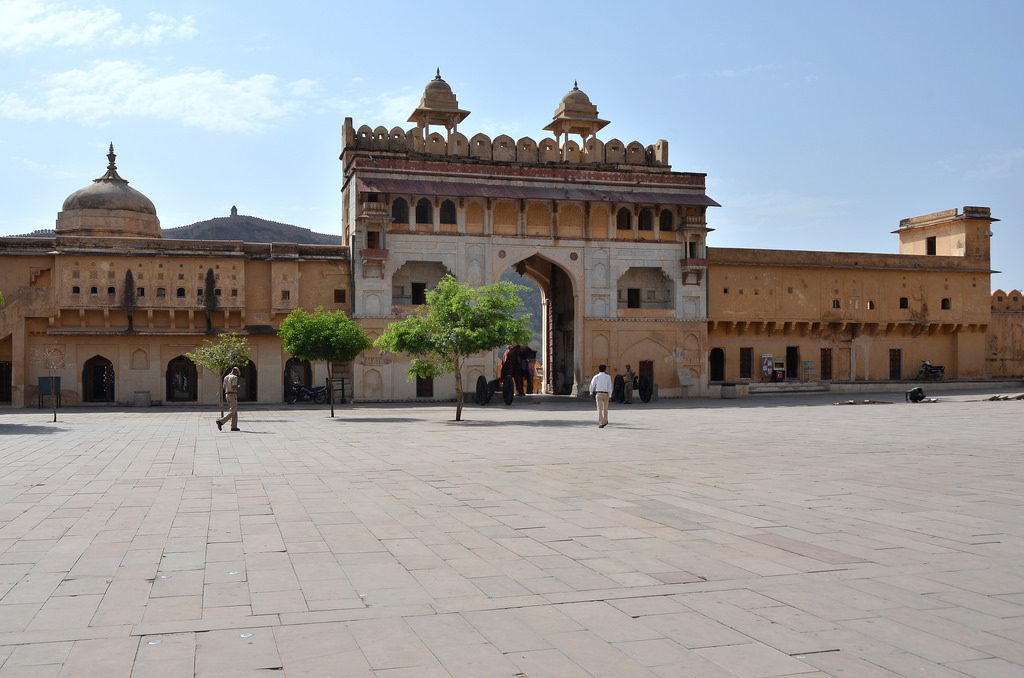
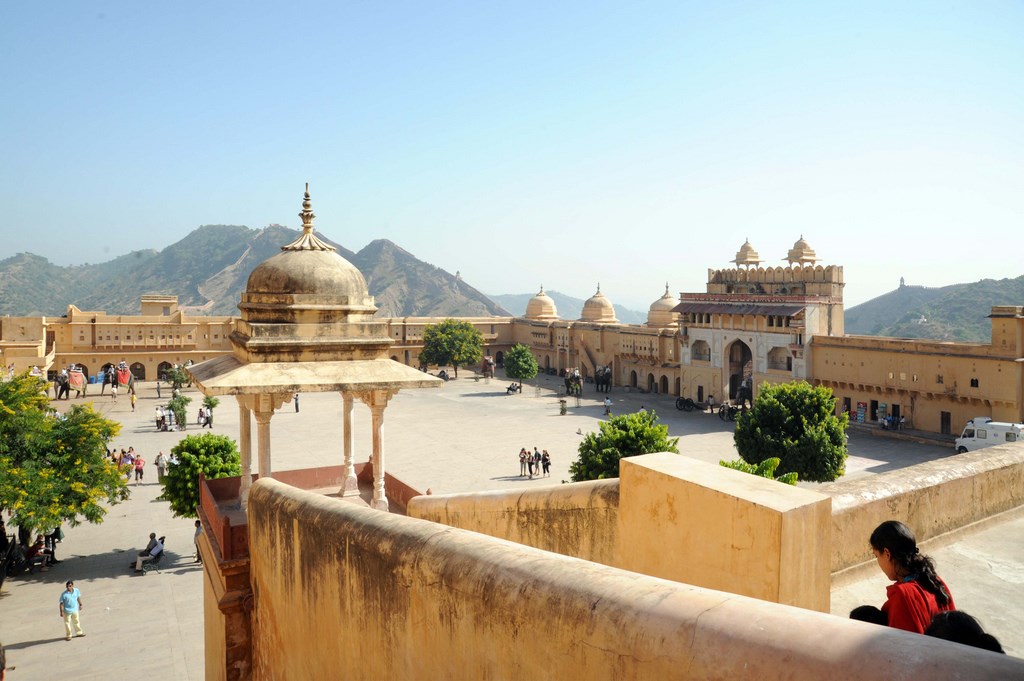
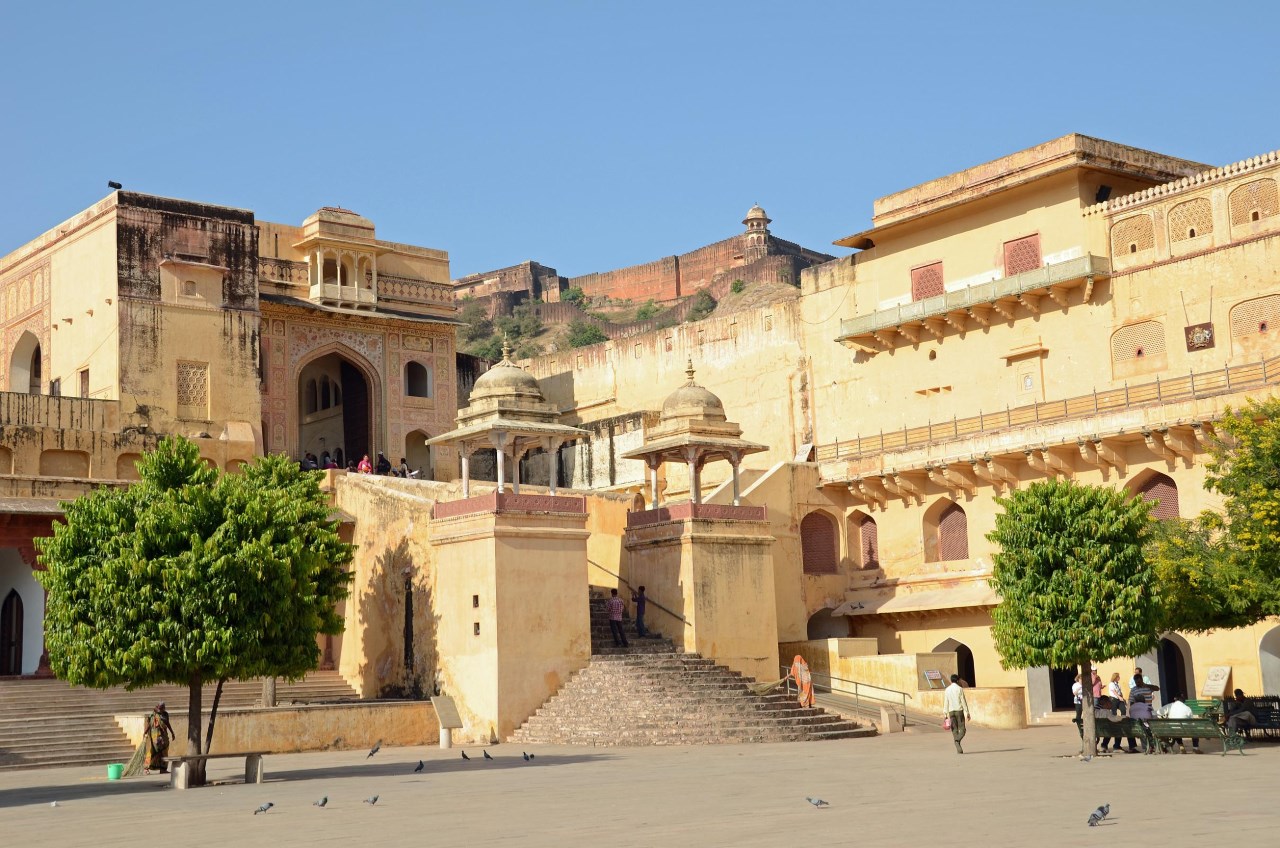
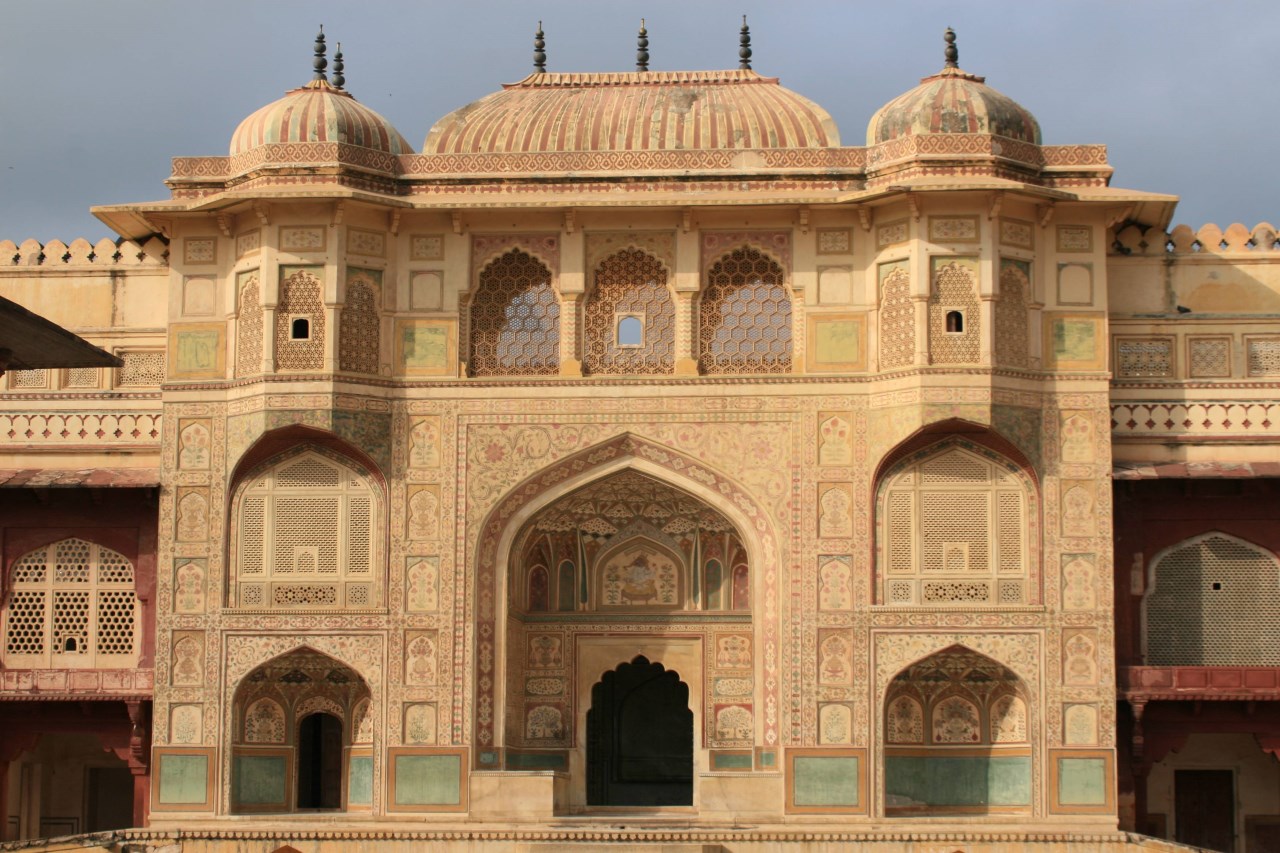
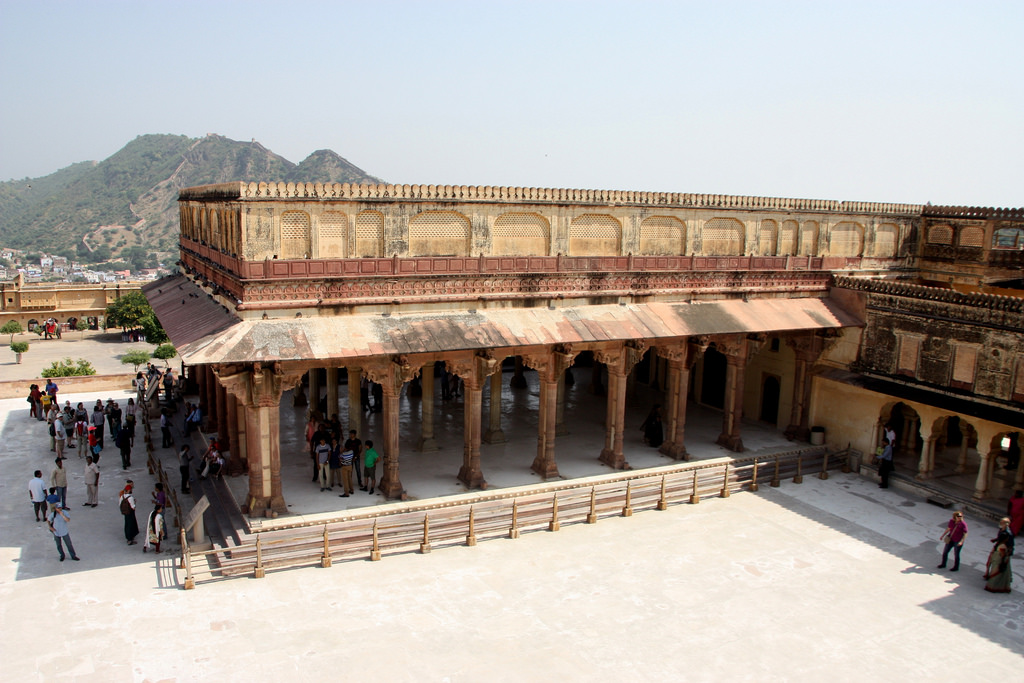
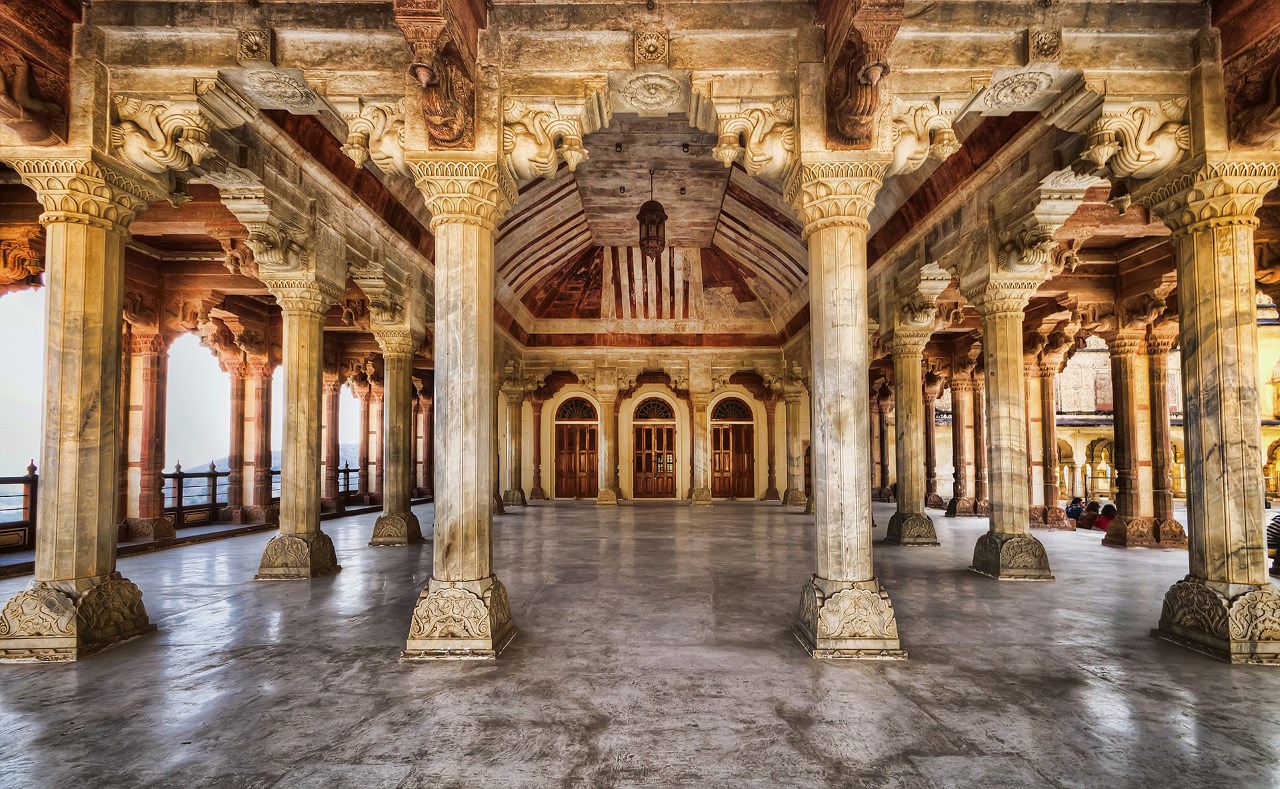
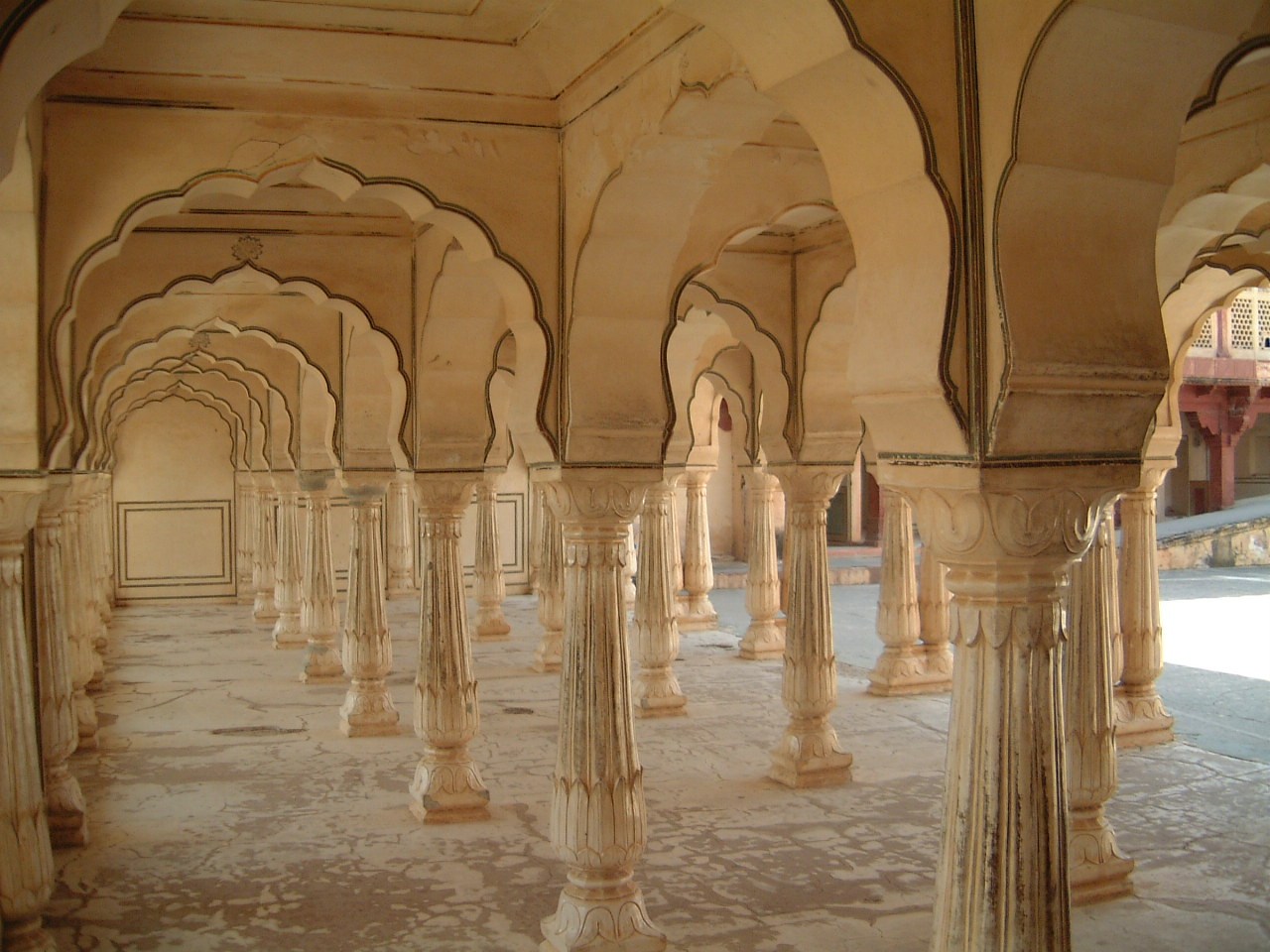
Jaipur es la capital de Rajastán y posee una población superior a los 2.300.000 habitantes. La “ciudad rosa” no deja de sorprender al viajero, bien sea por sus palacios y fuertes, o el inmeso tráfico de automóviles, motos, carros y autobuses. El viajero debe de estar preparado una vez mas para la multitud de personas que se acercaran hasta el preguntándole incesantemente por si busca alojamiento, un restaurante o comprar algo. Y como siempre sucede en India, todos ellos tendrán un amigo o primo que puede ayudarnos. Toca por tanto, armarse de paciencia y esquivar a los comisionistas. El sobre nombre de “ciudad rosa” nos remonta al año 1876, cuando Ram Singht, el marajá del momento, ante la visita del Príncipe de Gales, mandó pintar todas las viviendas de color rosa, tono que tradicionalmente sugería hospitalidad.
Podemos dividir la ciudad en dos partes. La ciudad antigua amurallada, se ubica al nordeste y es aquí donde encontraremos la mayoría de mercados, comercios y demás lugares de visita obligada para el turista. En el oeste y el sur, se ubica la parte mas moderna de la ciudad y por tanto gran parte de los hoteles mas turísticos. Al igual que sucede en otras ciudades del Rajastán, Jaipur es un excelente lugar para las compras. Su artesanía goza de merecida fama, al igual que los comercios de piedras preciosas o semipreciosas. Las principales joyerías las encontraremos en el bazar Siredeori o en el bazar Johari. Si buscamos telas o saris, lo mejor será ir al bazar Bapu o al bazar Kishanpol. En todos estos bazares será imprescindible regatear los precios, que para el turista suelen llegar a doblarse. Muchos de los hoteles disponen de servicio de envío de las compras a nuestro pais de origen.
Que ver Jaipur:
Ciudad Antigua: La ciudad rosa esta rodeada por las antiguas murallas y cuenta con diversas puertas de entrada, algunas de ellas son Ajmer y Chandpol. En su interior las calles dividen la zona en partes rectangulares, es decir en manzanas, que antiguamente se dedicaban a los distintos oficios o gremios. Dentro de la ciudad también podremos disfrutar de varios bazares muy recomendables y del magnífico Iswari Minar Swarga Sal, un edificio edificado por el hijo del marajá y al cual accedemos desde el bazar de Chandpol.
Palacio de la Ciudad: La entrada tiene un coste de 180 INR para los extranjeros, es válida para dos días y permite la entrada también al fuerte de Jaigarh. Merece la pena pasear y admirar sus patios, jardines y edificios de diferentes épocas. Lamentablemente la residencia del marajá no puede visitarse. Resulta muy cultural dedicar un tiempo a su colección de arte.
Palacio de los Vientos o Hawa Mahal: Si pensamos en un edificio que sea la imagen de Jaipur, sin dudas es este. La entrada a este magnifico palacio de piedra caliza rosa, nos traslada en el tiempo a finales del siglo XVIII. Imprescindible ascender a la azotea y deleitarse con las vistas.
Como llegar a Jaipur:
En avión: Indian Airlines y Jet Airways vuelan a Delhi, Mumbai, Udaipur, Jodhpur, Calcuta y Ahmedabad. Por su parte, Air Decan y Jagson Airlines vuelan solamente a Delhi.
En autobús: RSTC dispone de lineas a las siguientes ciudades: Delhi, Jodhpur, Kota, Ajmer, Agra, Udaipur, Bikaner, Bharatpur, Bundi, Monte Abu, Jaisalmer, Chittor, Jhunjhunu, Nawalgarh y Sawai. Consultar en la estación principal de autobuses.
En tren: Podemos viajar hasta o desde Agra, Ahmedabah, Ajmer, Bikaner, Delhi, Jaisalmer, Jodhpur, Sikar y Udaipur. La oficina de reservas esta a la salida de la estación de tren.
Hasta o desde el aeropuerto: No hay servicio de autobús. Así que para recorrer los 15 km hasta Jaipur podemos optar por un autorickshaw por 150 INR o un taxi por 250 INR.
http://blog.infoviajero.es/india/jaipur/
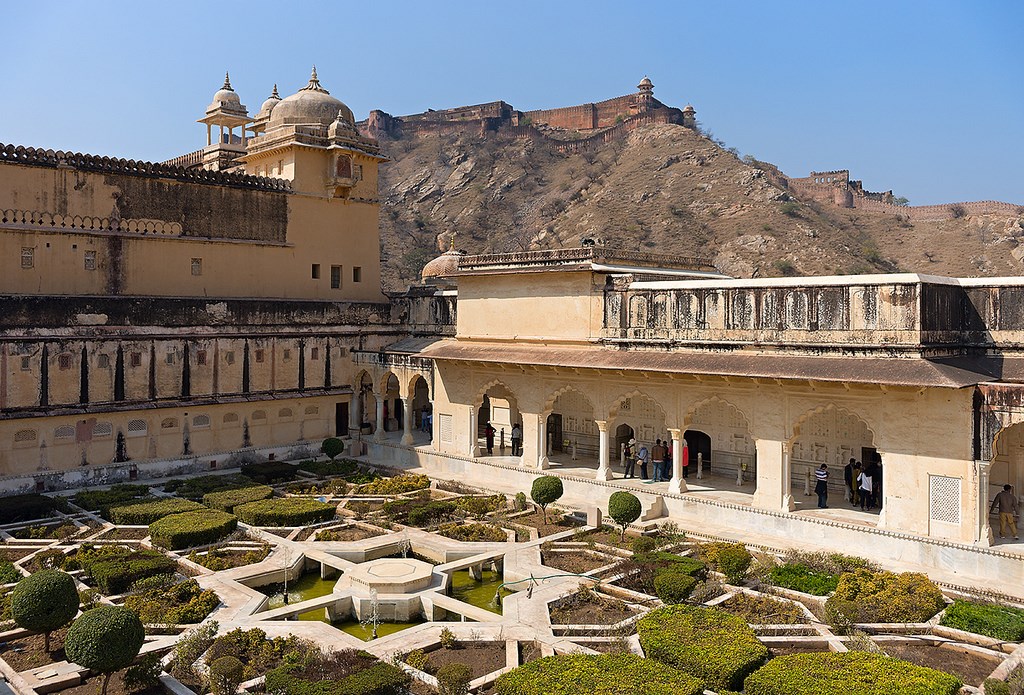
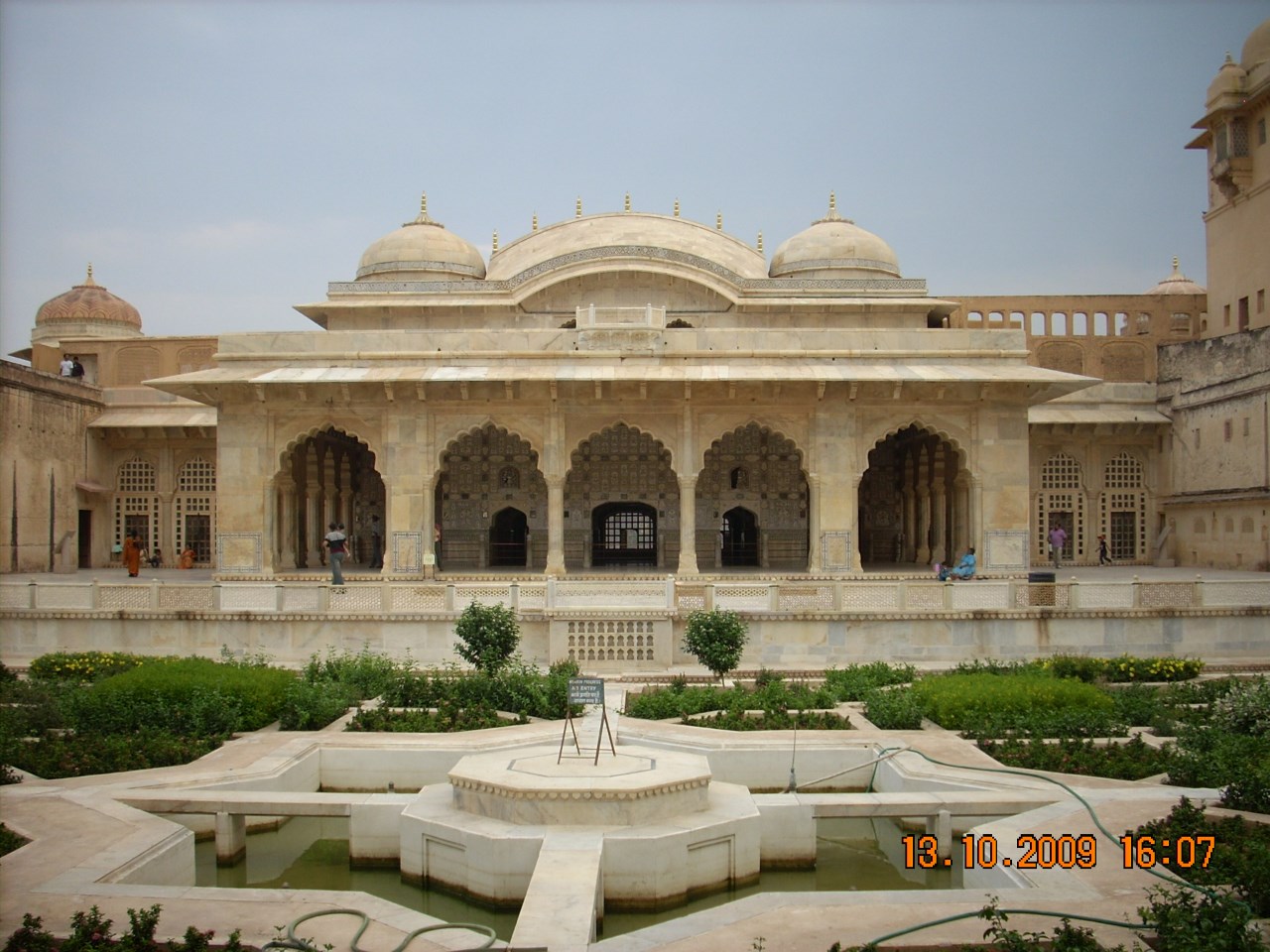
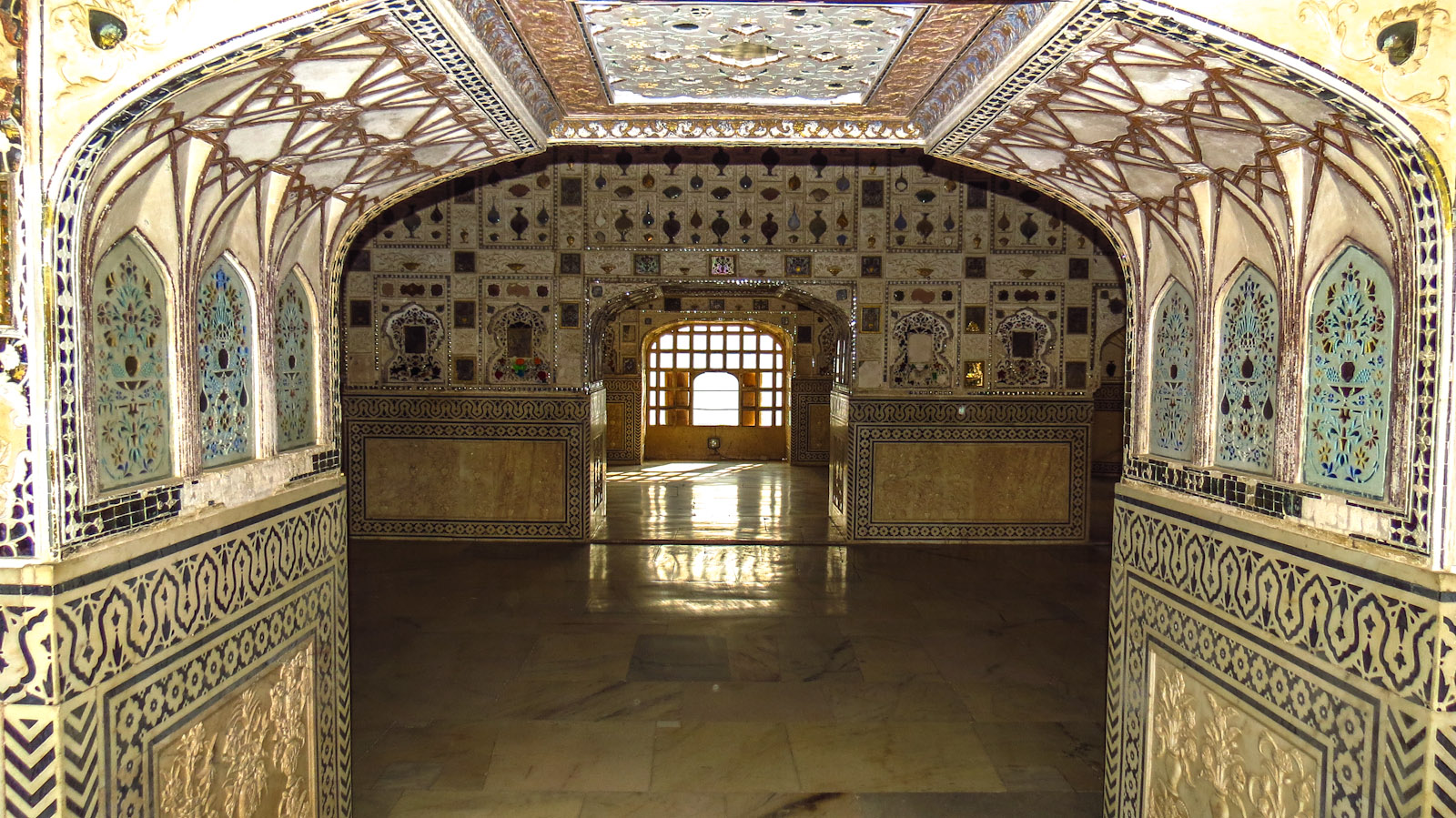
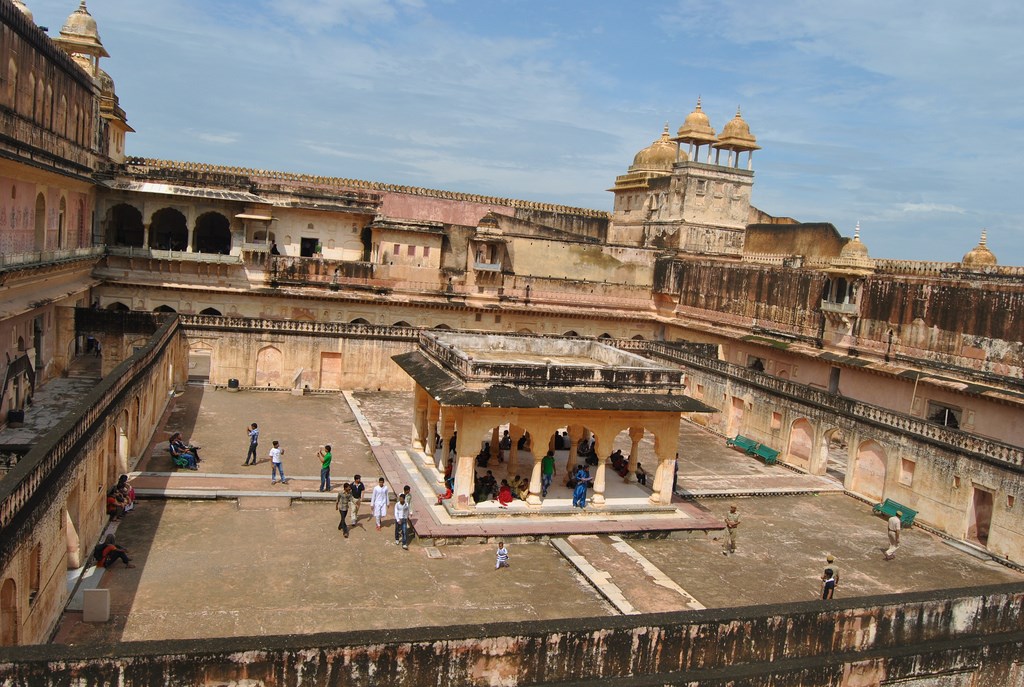
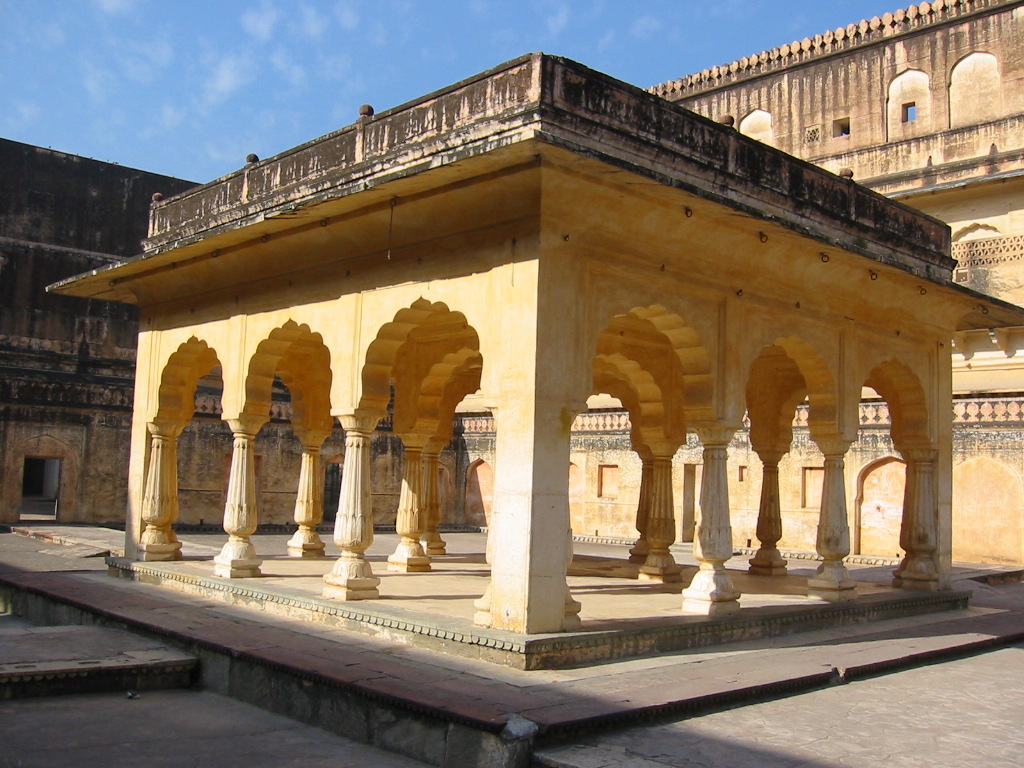
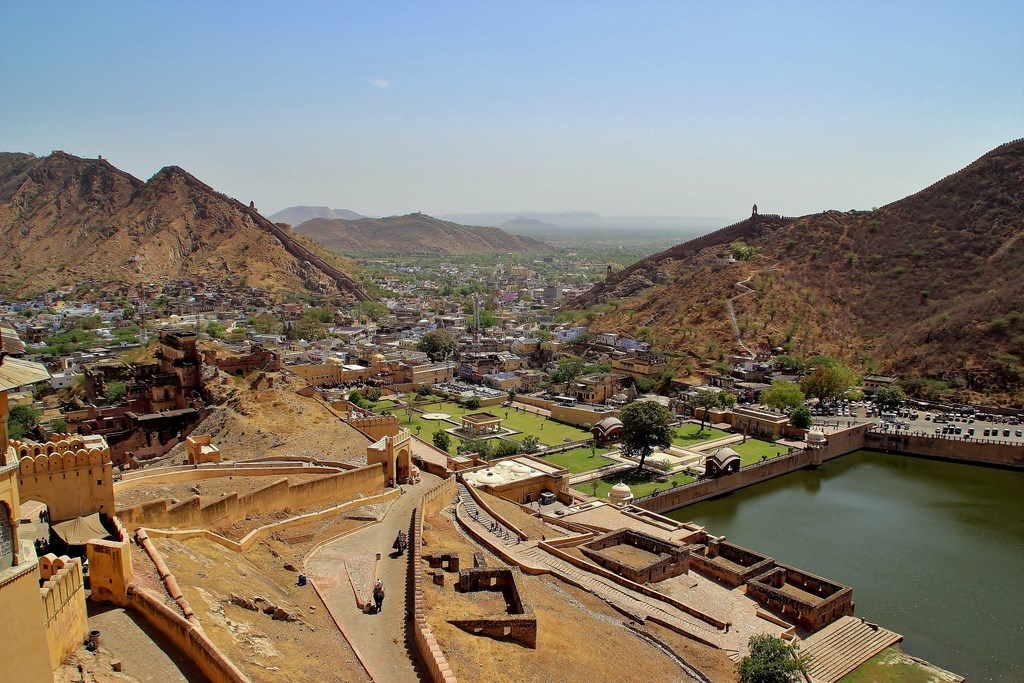
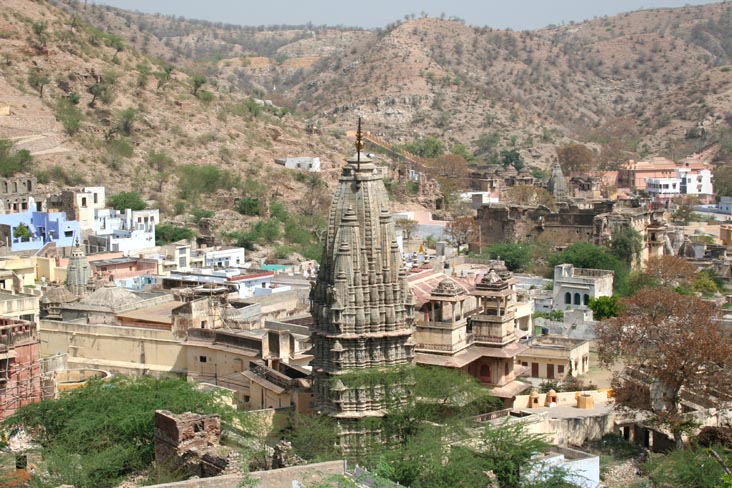
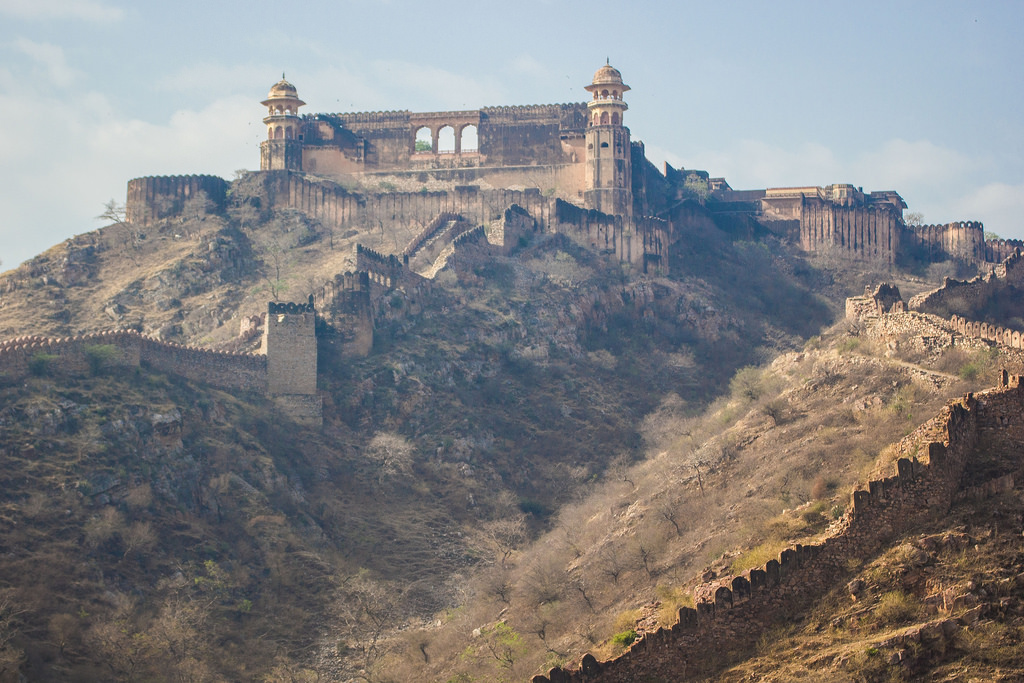
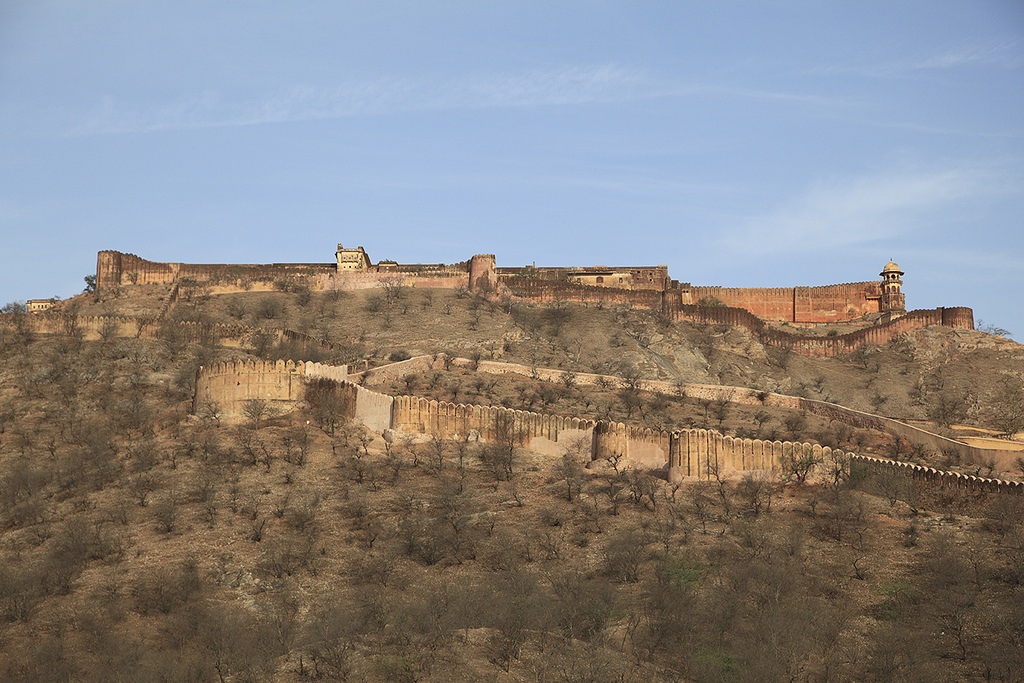
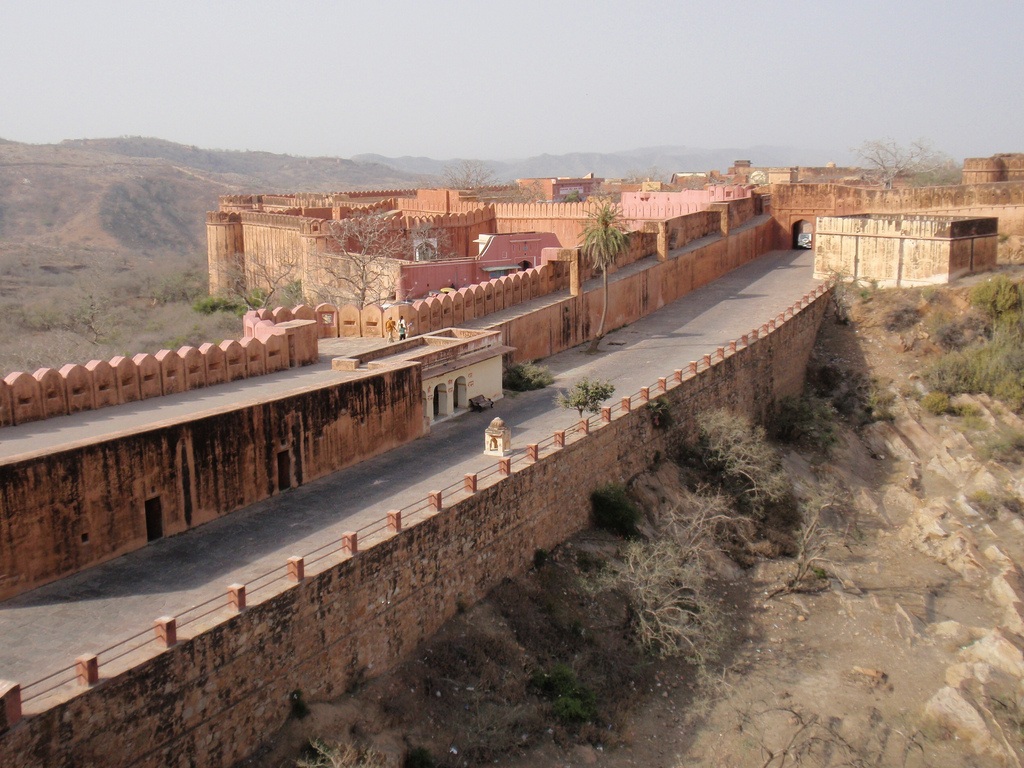

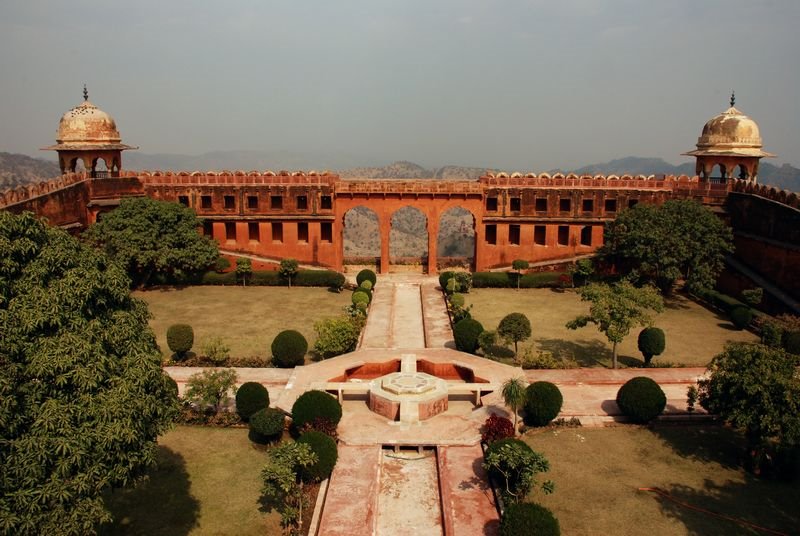
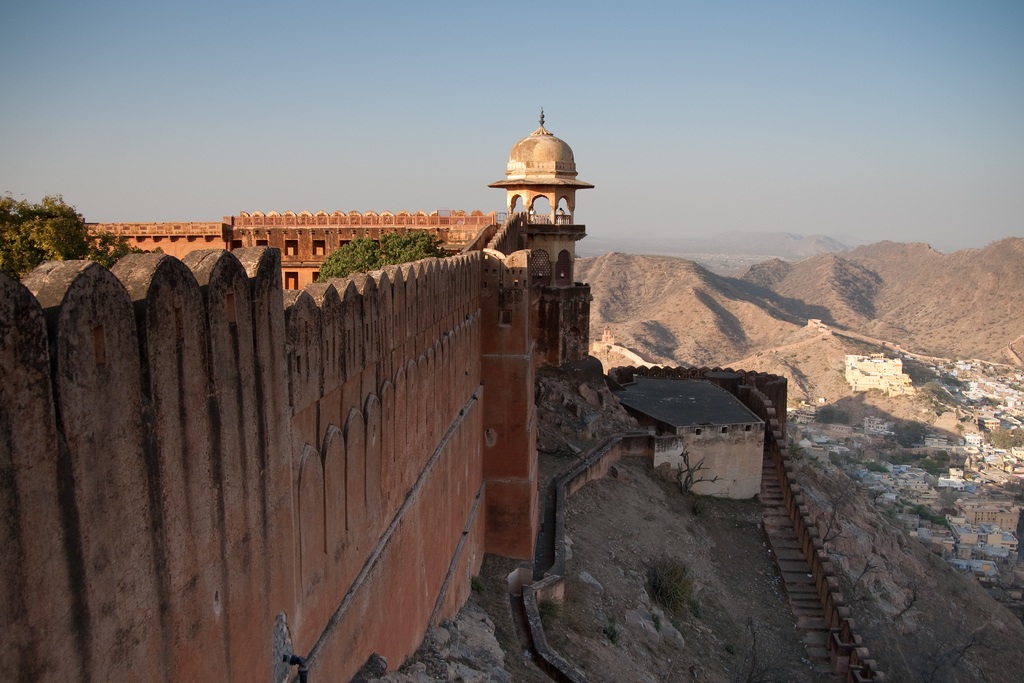
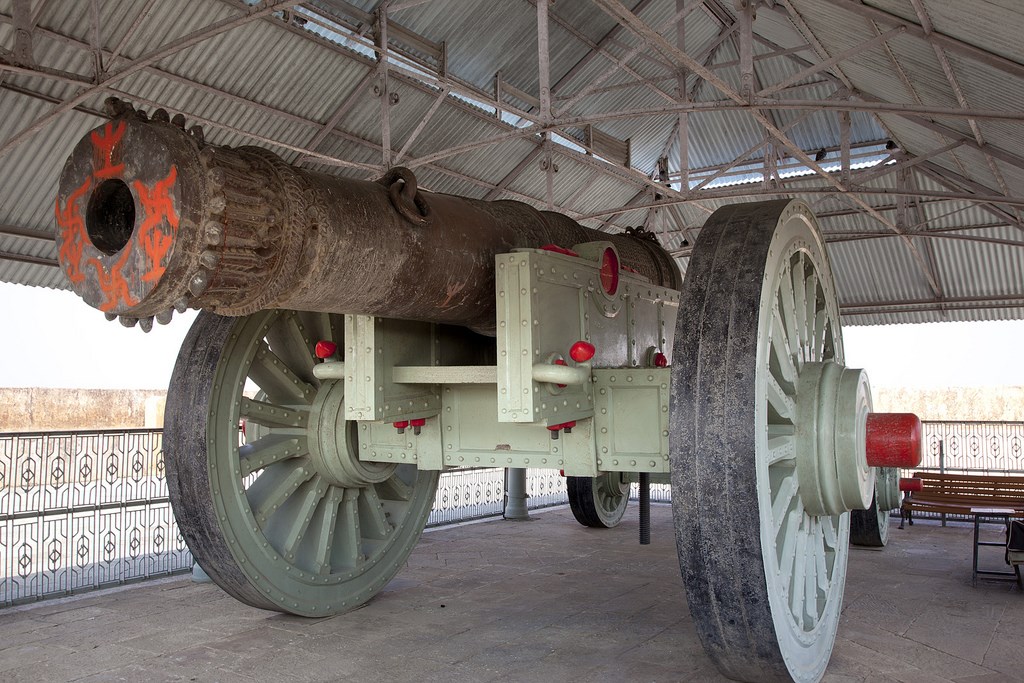
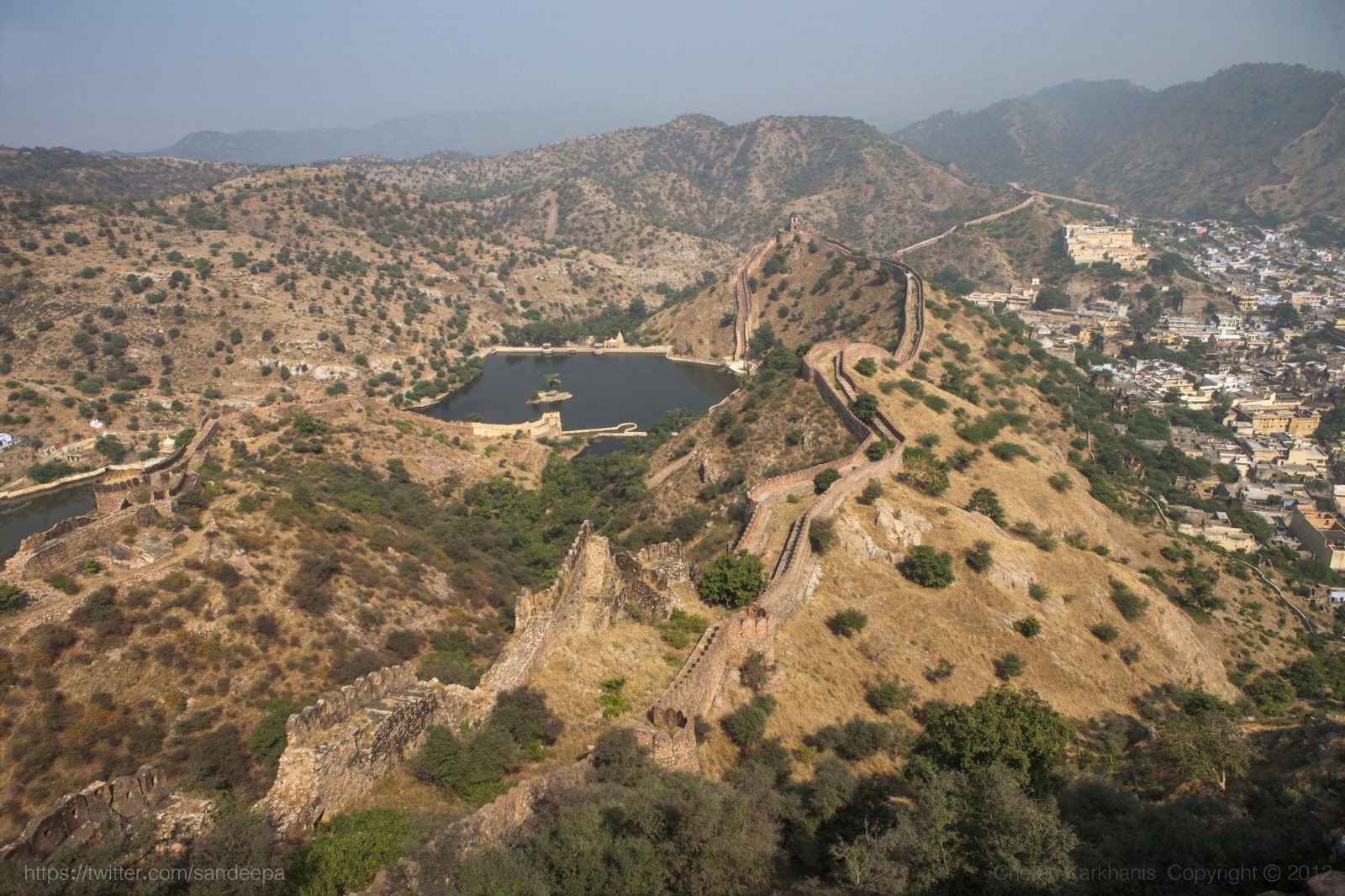
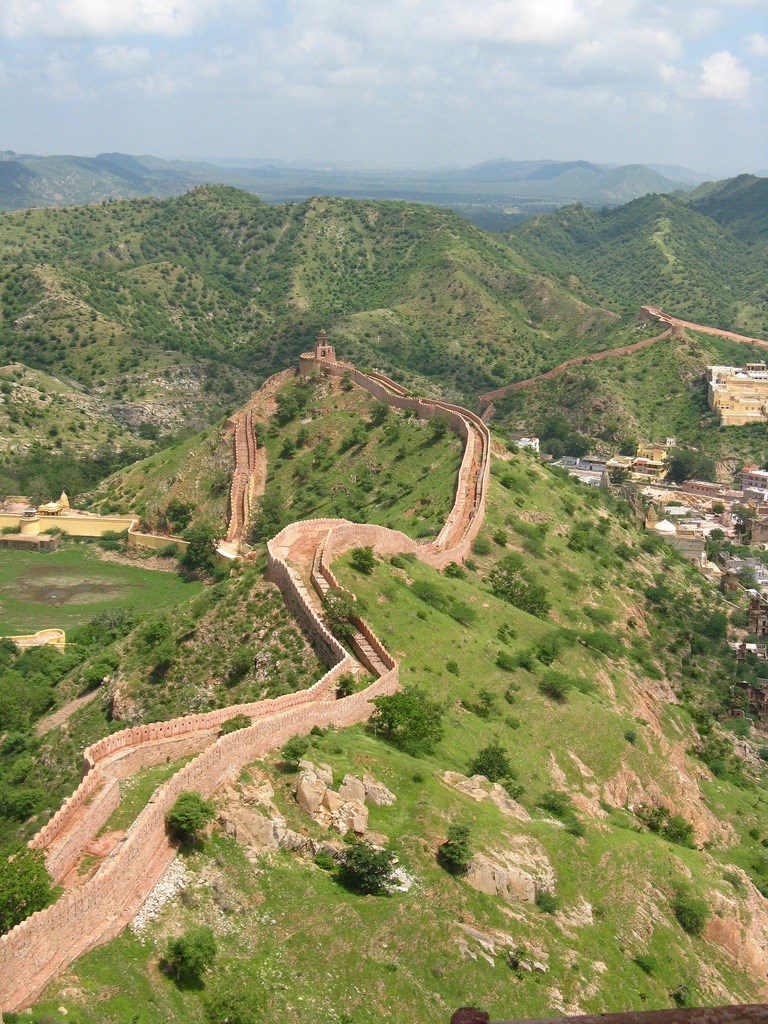
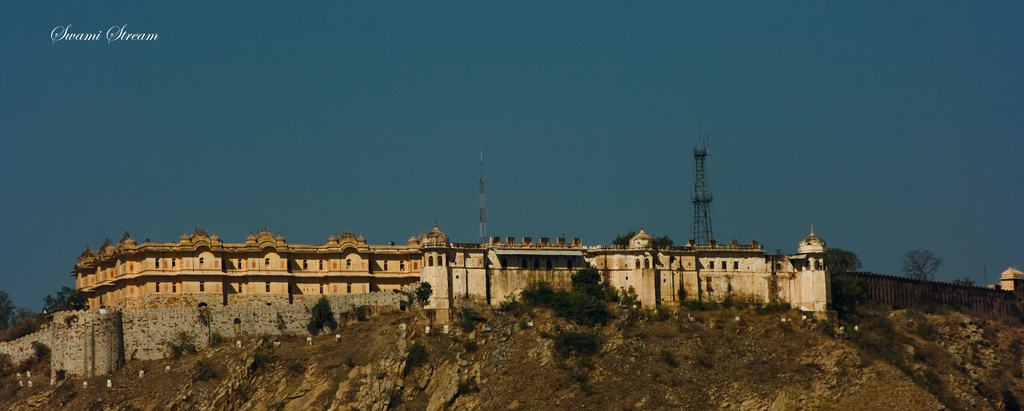
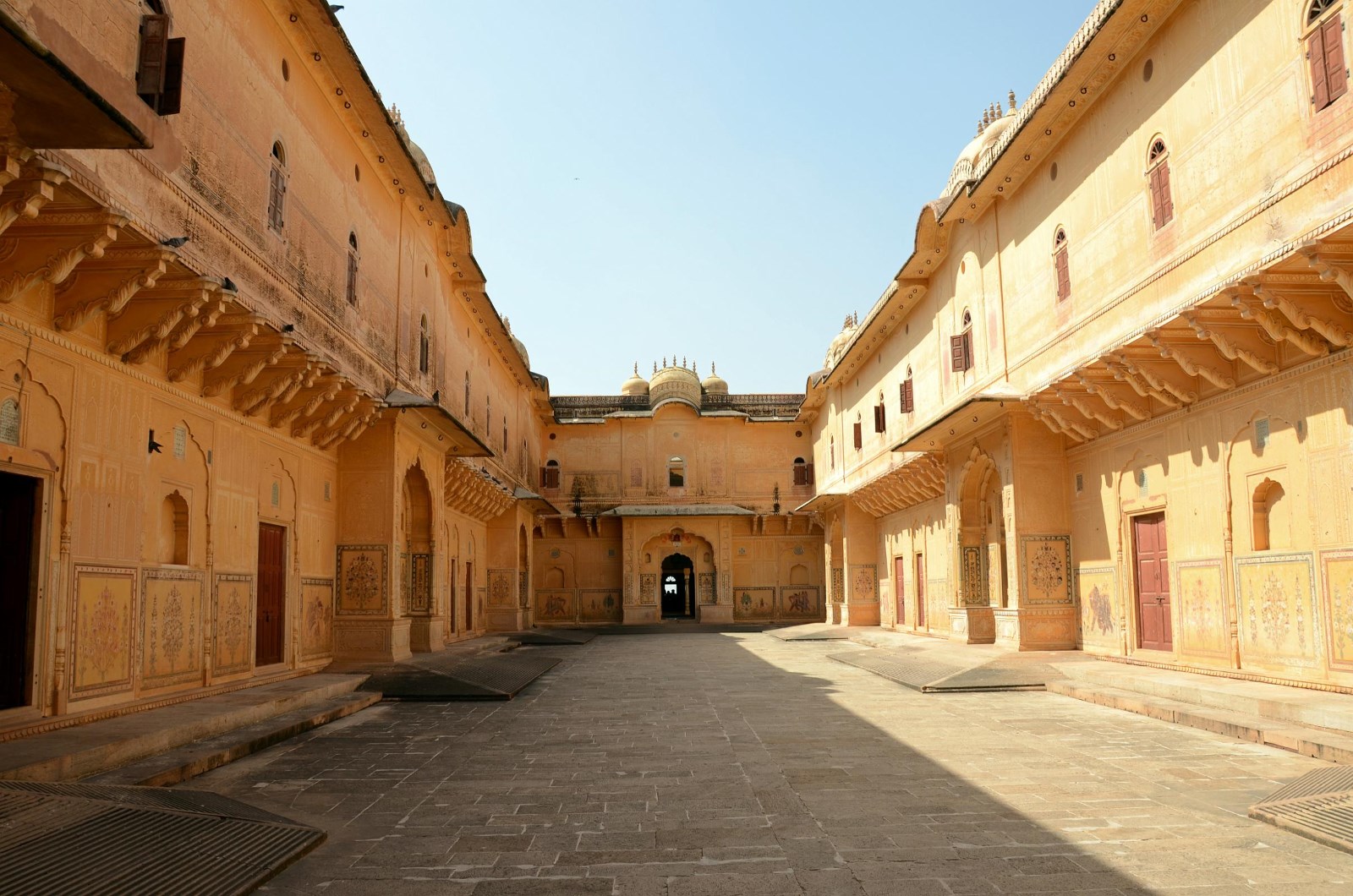
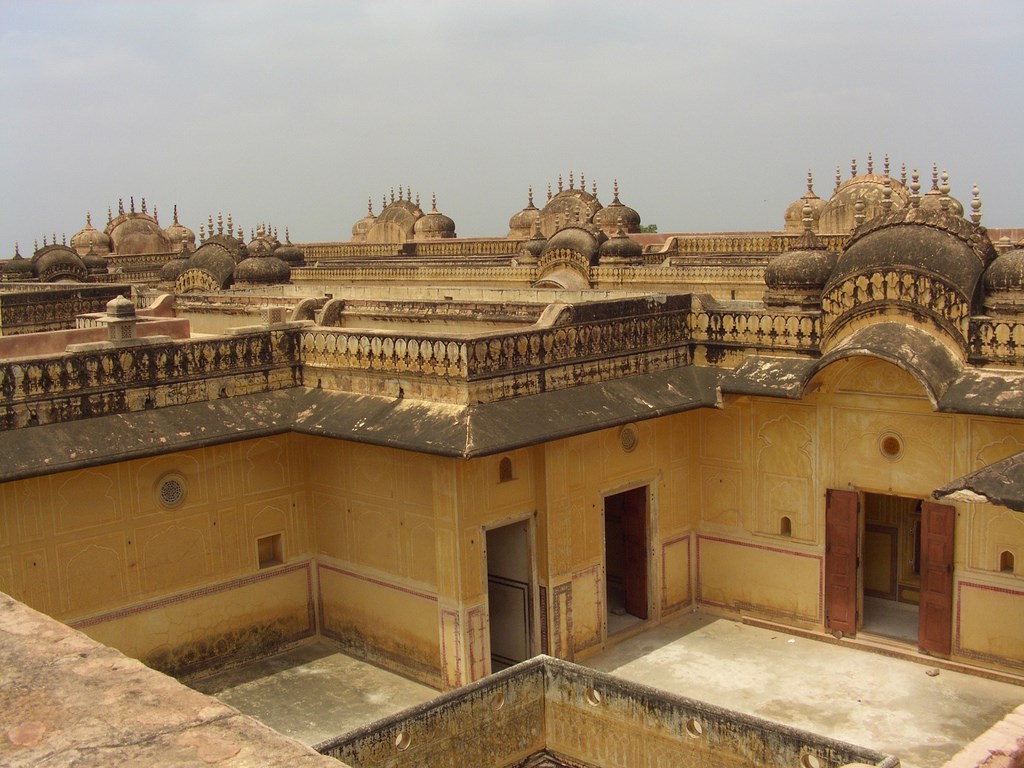
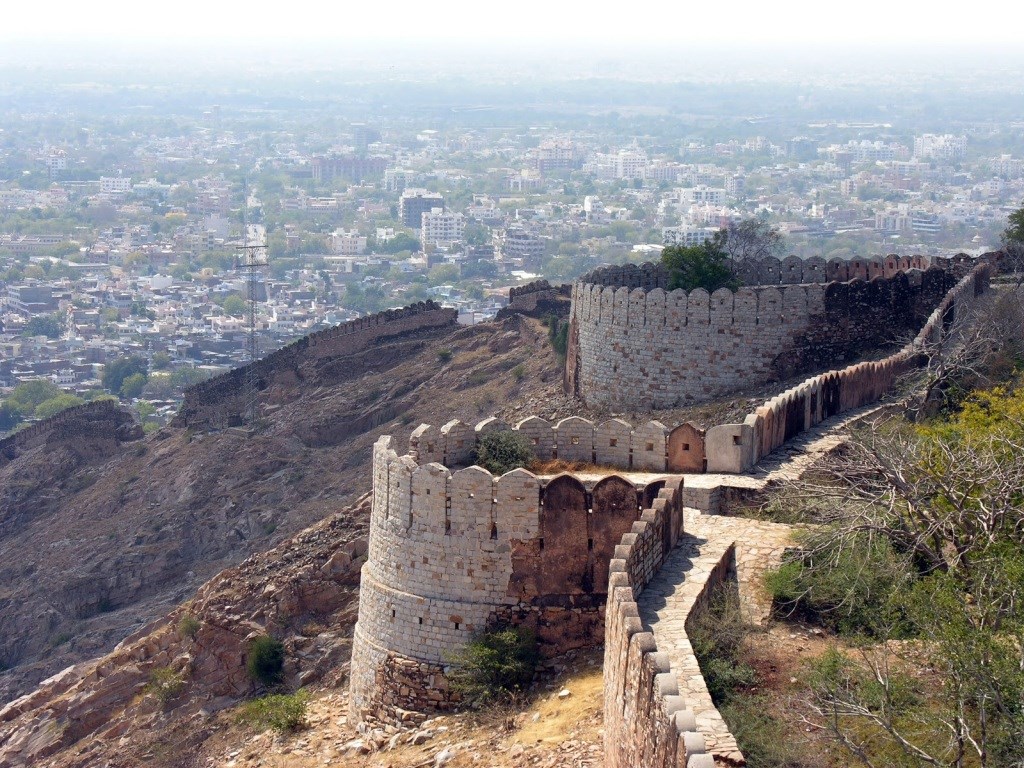
Jaipur, la Ciudad Rosa
17 de noviembre de 2010 por Marina
Jaipur es una de las ciudad más visitadas de India. La ciudad es bien conocida por sus templos religiosos, sus calles llenas de colores y su panorama natural, al igual que por los edificios pintados de rosa que le han dado el sobrenombre de la Ciudad Rosa.
Jaipur se encuentra en el estado de Rajastán y es una de las ciudades más grandes del país. Impresiona por su arquitectura, con edificios de siglos de antigüedad pintados de rosa que decoran su centro histórico. La ciudad se ha convertido en una de las ciudades metropolitanas más importantes del país.
En el centro de la antigua ciudad amurallada se encuentra el barrio del palacio, conocido como el Palacio de la Ciudad. En el territorio se encuentran el Palacio Chandra y el Palacio Mubarak. El Palacio de la Ciudad se construyó entre 1729 y 1732, y en su gran territorio hay muchos jardines y fuentes. Dentro del edificio del Chandra Mahal se encuentra un museo, aunque parte sigue siendo residencia oficial de los Reyes. El Bhaggi Khana es otro museo en el territorio donde se pueden contemplar antiguos carruajes y palanquines. Al lado está el templo de Govind Dev Ji, dedicado a Krishna. Por dentro el templo está decorado con candelabros europeos, obras de arte indias y techos de oro.
El palacio más conocido del recinto se conoce como Hawa Majal y tiene amplios jardines y un pequeño lago. El Hawa Mahal se traduce como el Palacio de los Vientos, y data del año 1799. El edificio de cinco plantas fue construido de piedra roja y rosa y tiene 953 pequeñas ventanas. Es uno de los lugares más emblemáticos de la Ciudad Rosa.
Otro de los lugares más visitados es el observatorio Jantar Mantar. El Jantar Mantar es una colección de instrumentos astronómicos que fueron construidos por el Maharaja Jai Singh II, el fundador de la ciudad. Este observatorio es el más grande del país. Hay instrumentos geométricos que se encargan de medir el tiempo, predecir eclipses y encontrar las posiciones de las estrellas. El instrumento más alto se conoce como Samrat Yantra y mide unos 27 metros de altura, y hay una plataforma en la parte de arriba desde donde se anuncian monzones o eclipses.
La ciudad, construida por el rey astrónomo Sawai Jai Singh en el siglo XVIII, tiene muchos templos. Destaca el templo Galtaji, un importante lugar de peregrinaje famoso por su colonia de monos que se encuentra a 10 kilómetros de la ciudad.
En esta ciudad también hay muchos jardines. Destaca el jardín Ram Nivas, donde se encuentra el Museo Albert Hall, el zoológico de la ciudad, y el jardín del palacio Sisodia Rani, famoso por sus murales en honor a Krishna y sus muchas fuentes.
El Museo Albert Hall es el más antiguo de la región. El museo tiene varias colecciones de suntuosas alfombras, decorados de marfil, estatuas de metal y ornamentos de cristal de colores.
El palacio de Jal Mahal, el Palacio del Agua, se encuentra en el centro del Lago Man Sagar. Tanto el palacio como su amplio territorio fueron renovados en el siglo XVIII. Cerca del lago se encuentra una reserva natural donde viven varias especies de animales, como ciervos, hienas o zorros. El lugar es muy visitado por los observadores de aves debido al gran número de diferentes pájaros que pasan parte del año cerca del lago.
El Estadio de Críquet de Sawai Mansingh es el principal estadio de la región donde no solo se celebran partidos de críquet, si no que también se celebran partidos de fútbol. Otros eventos destacados son la Feria de Joyería de Jaipur y el Festival de Literatura de Jaipur que reune a cientos de escritores todos los años.
Cerca de la ciudad se encuentra el pueblo de Chokhi Dhani. Este pequeño pueblo tradicional se ha convertido en una especie de museo que representa como era la vida tradicional y cotidiana en la región de Rajasthan hace siglos. El pueblo es uno de los más visitados de la región, y tiene más de 100 cabañas rústicas que han convertido al pueblo en un resort de lujo lleno de restaurantes tradicionales, suites decoradas de la misma forma que hace siglos, spas y lounges.
Antiguamente la ciudad de Amber, que se encuentra a 11 kilómetros de Jaipur, era la capital de la región. La ciudad destaca por su arquitectura, donde las influencias hindúes y musulmanas han creado un estilo único. La ciudad se encuentra sobre la orilla del Lago Maota.
El Fuerte de Amber se encuentra en esta ciudad, una estructura que originalmente era un palacio. El fuerte esta conectado con el Fuerte Jaigarh, conocido por tener el cañón más grande del mundo. Ambos edificios están construidos de piedra arenisca y mármol, y por dentro están cubiertos por murales. El fuerte, que se encuentra sobre una colina, está dividido en cuarto secciones, y los turistas podrán acceder al complejo vía elefante. En este lugar también se encuentra el Templo Kali, decorado con estatuas de plata que representan a unos leones.
Otro fuerte que formaba parte de las defensas de la ciudad es el Fuerte Nahagarh, que se encuentra cerca de las colinas Aravalli. El Fuerte Nahargarh fue la residencia del Rey Sawai Jai Singh II y se encuentra sobre una colina en el centro histórico de la ciudad. Desde el fuerte se puede observar toda la ciudad de Jaipur.
http://2.0viajes.com/jaipur-la-ciudad-rosa/
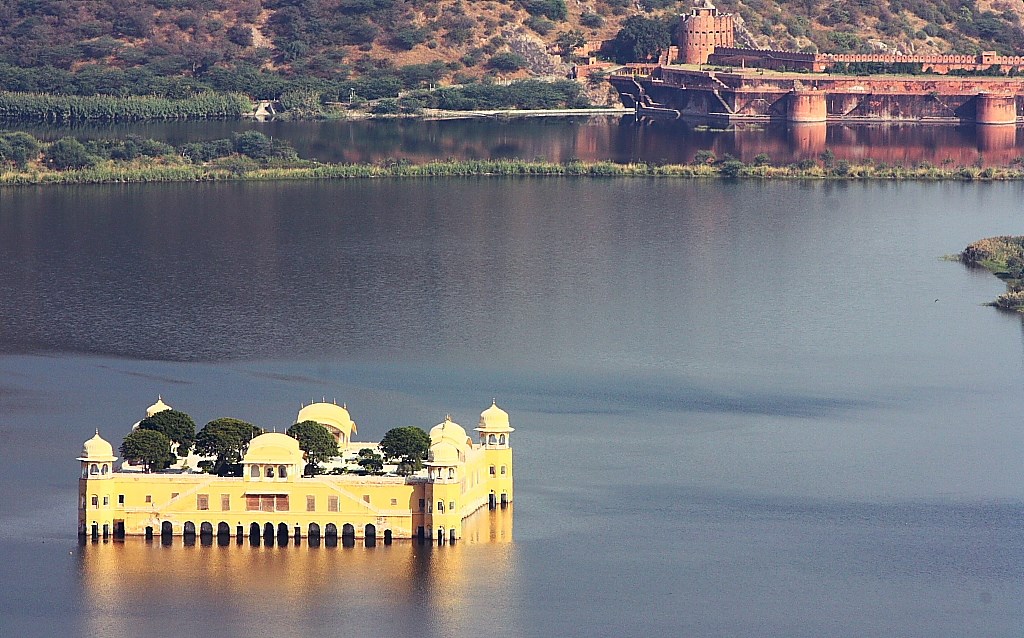

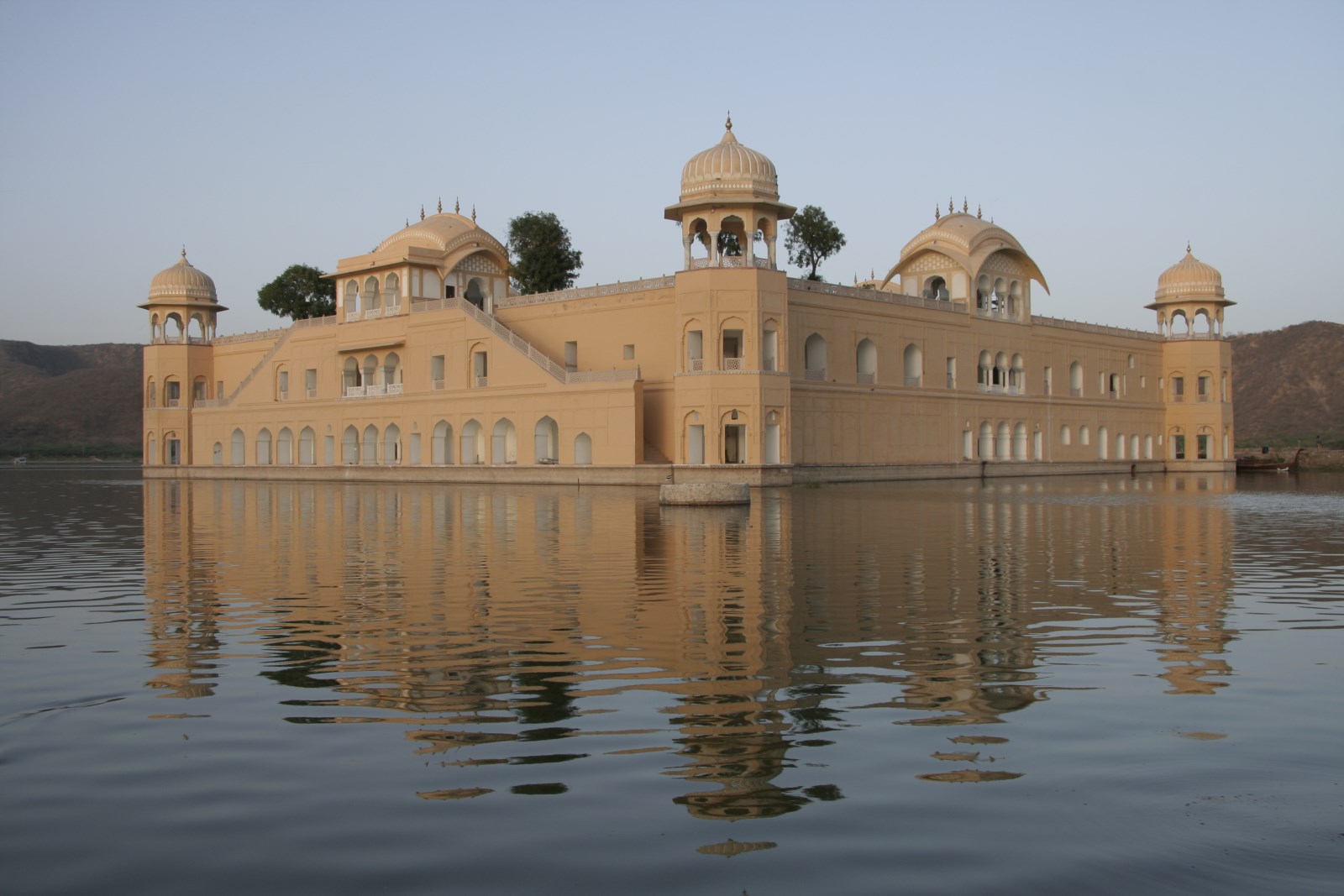
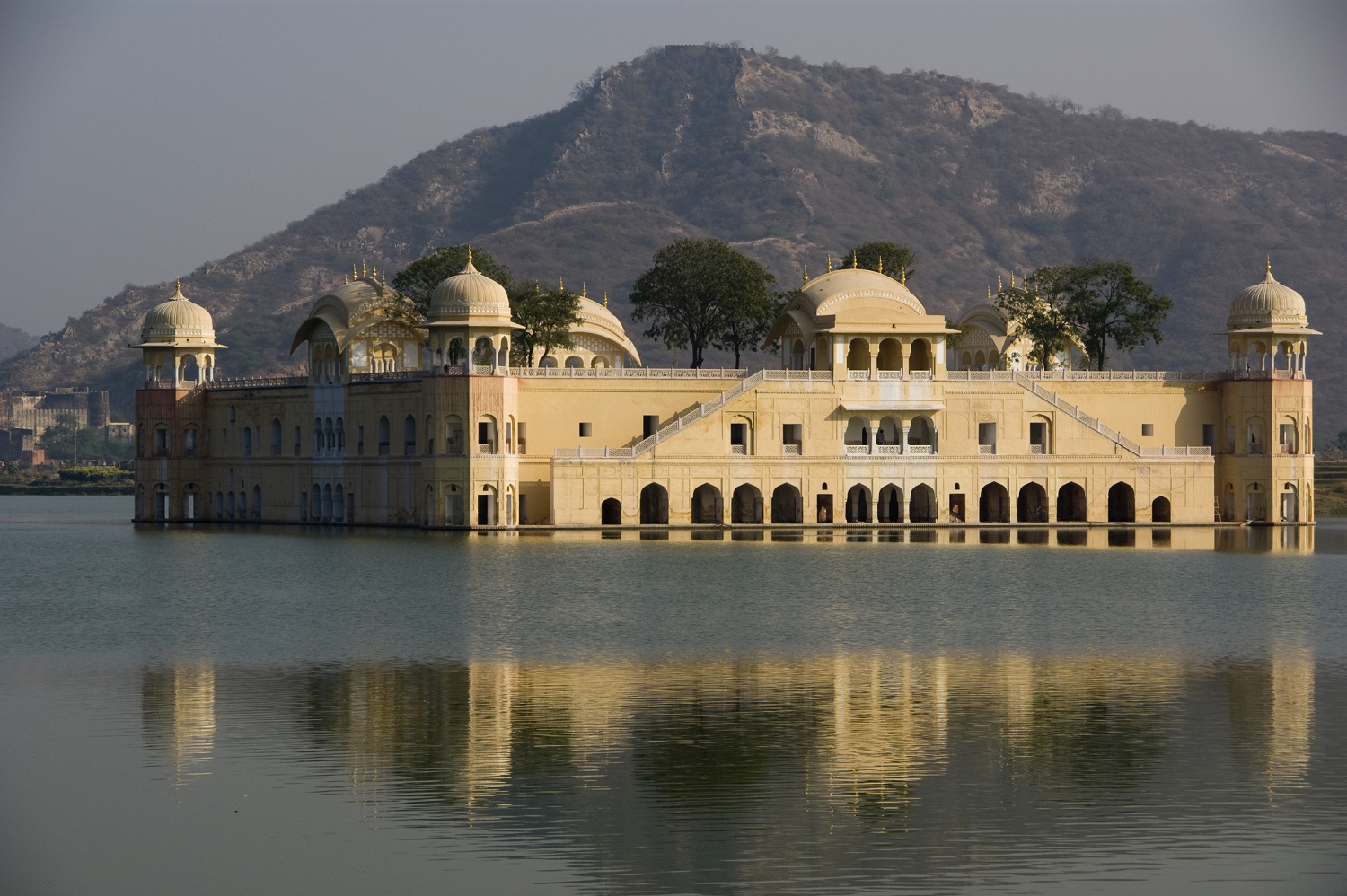
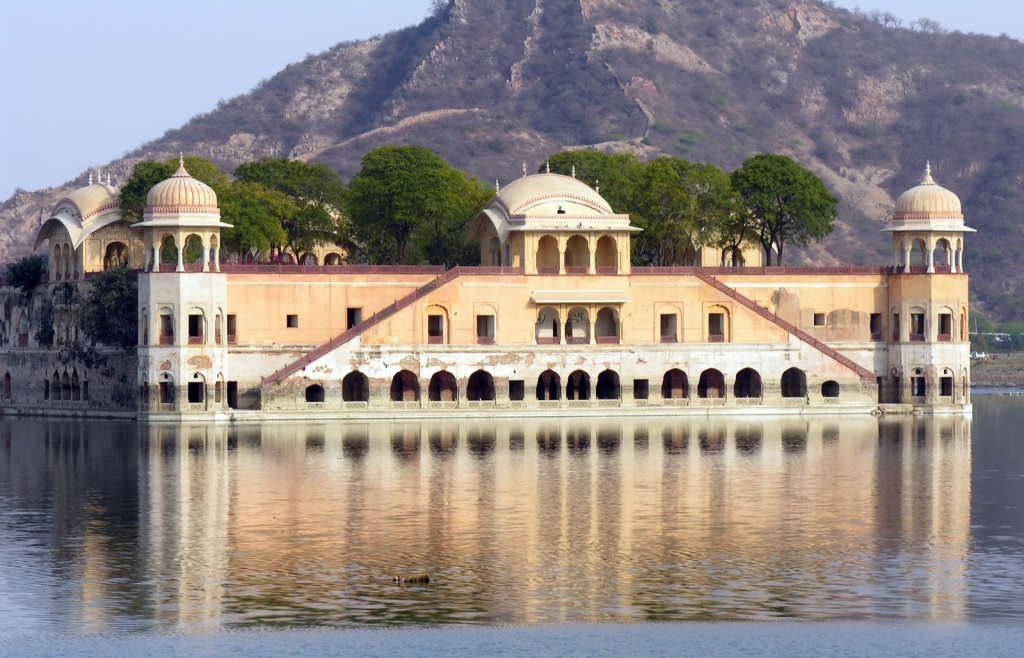
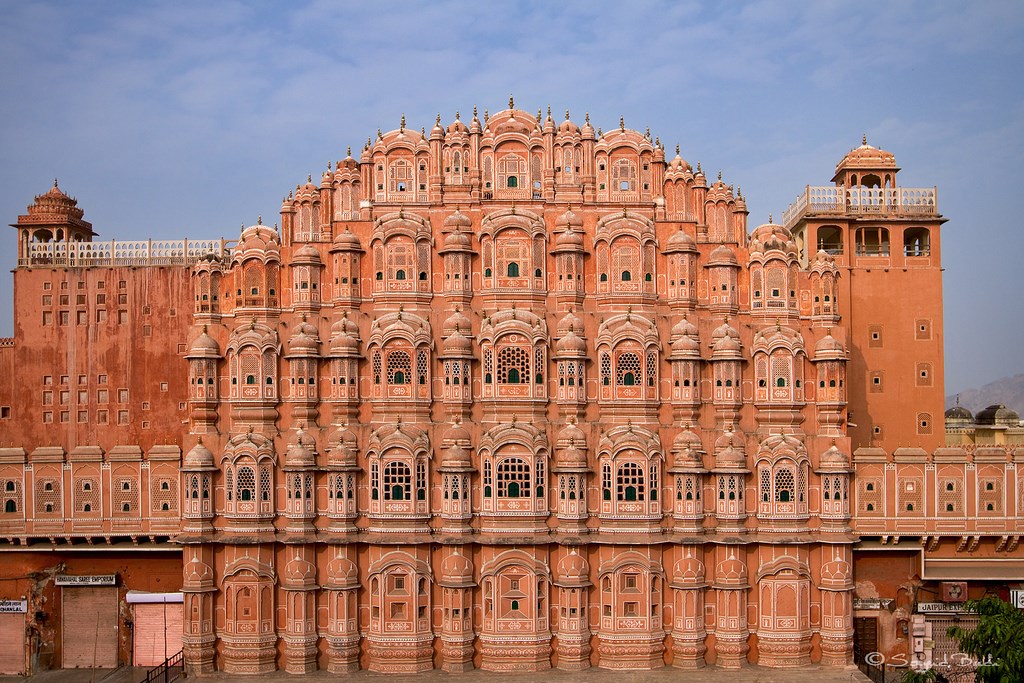
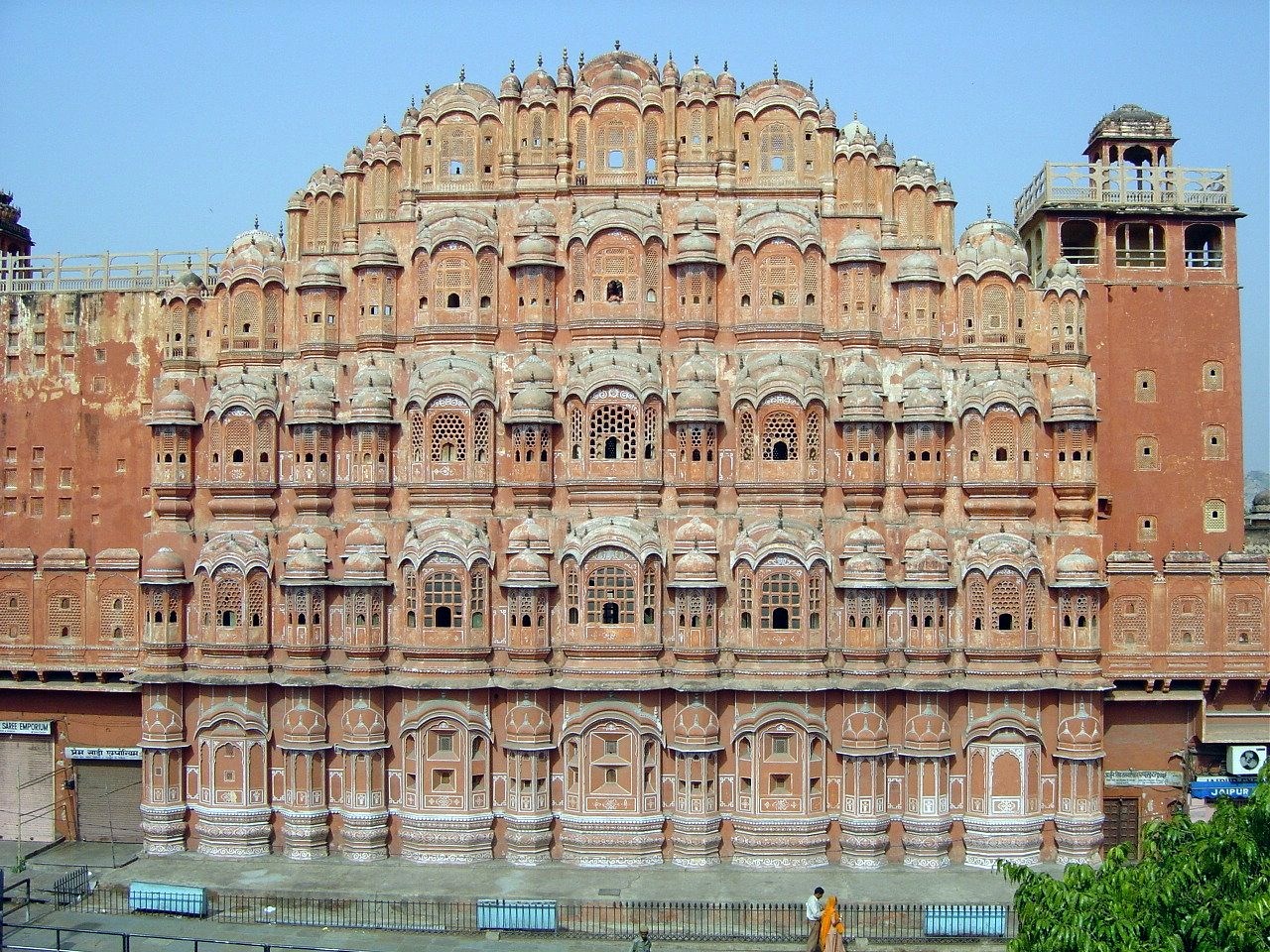
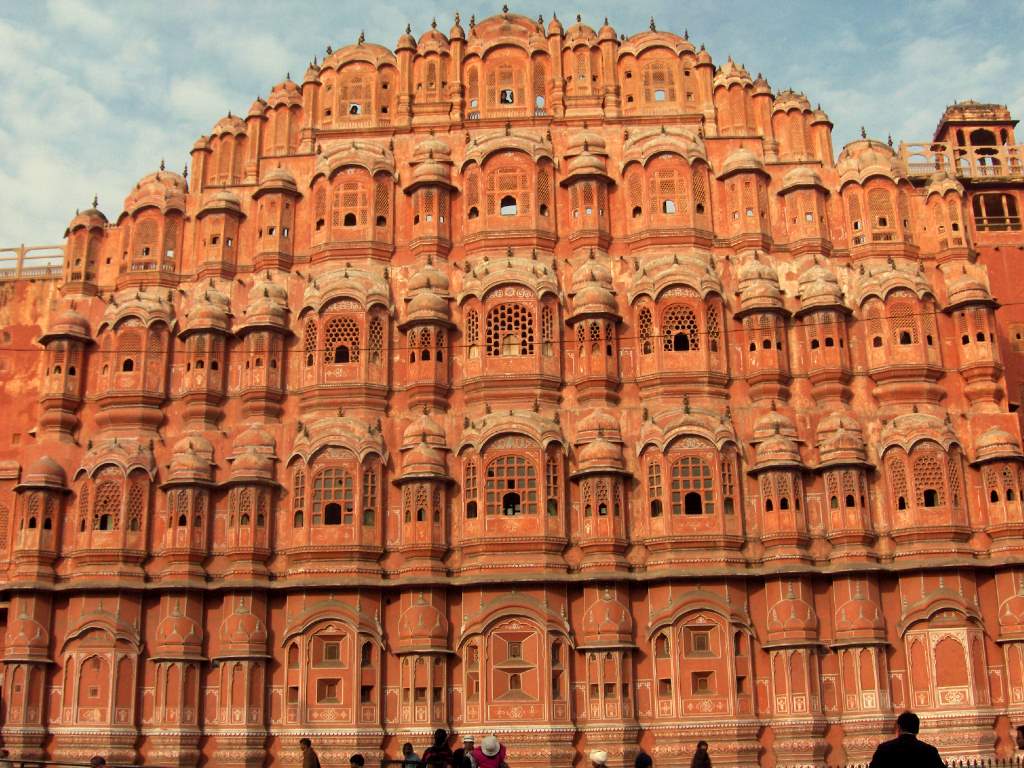

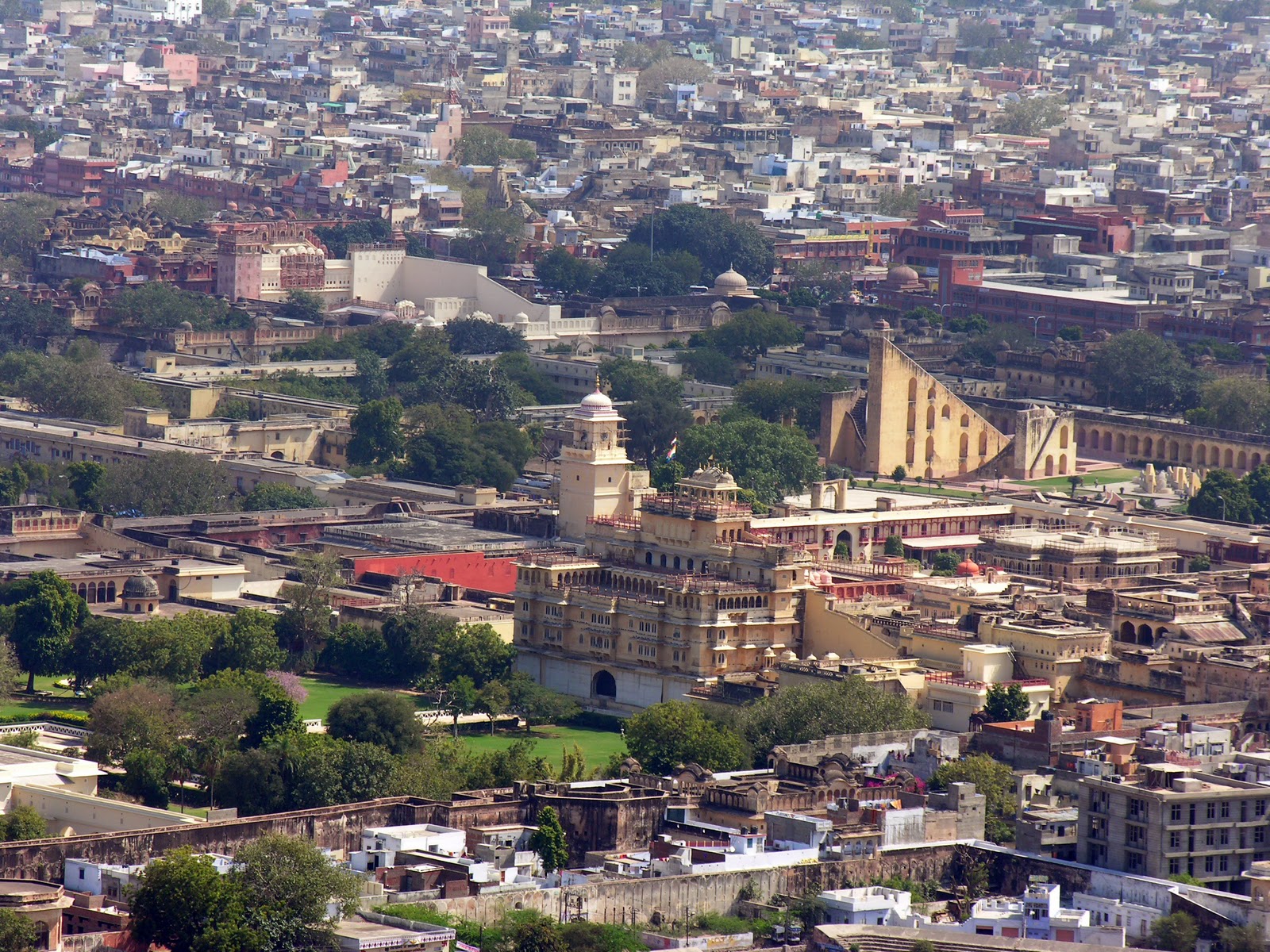

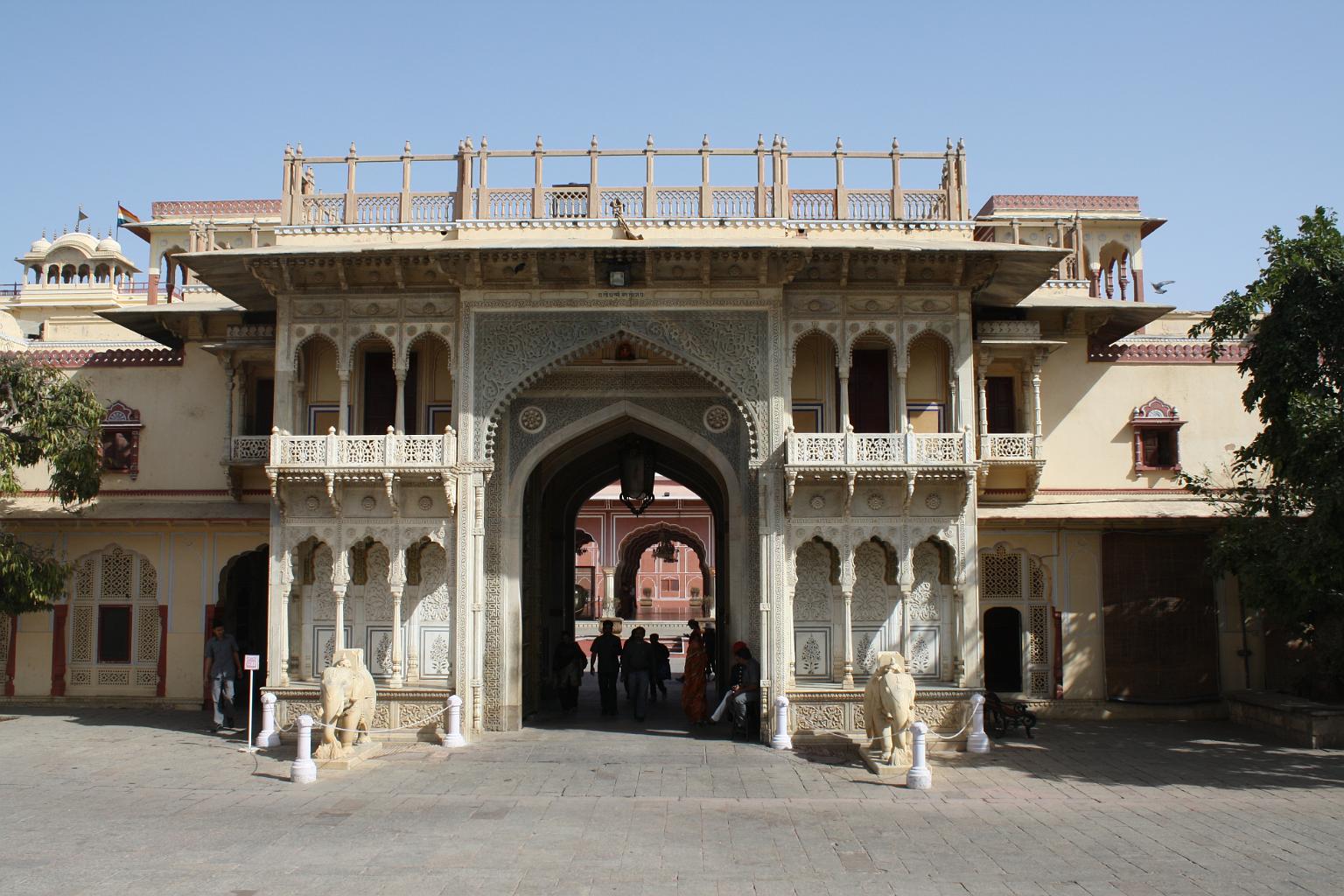
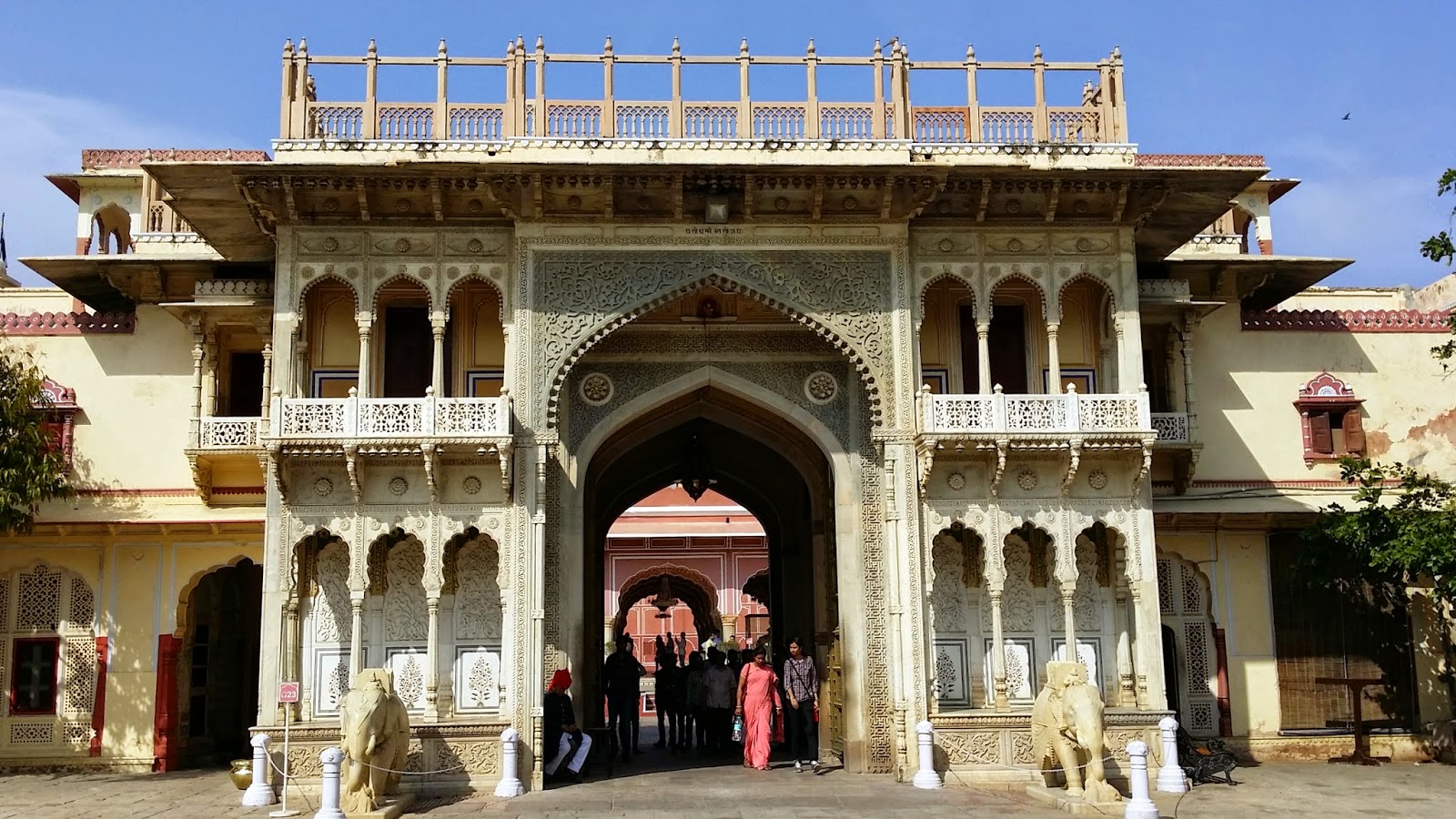
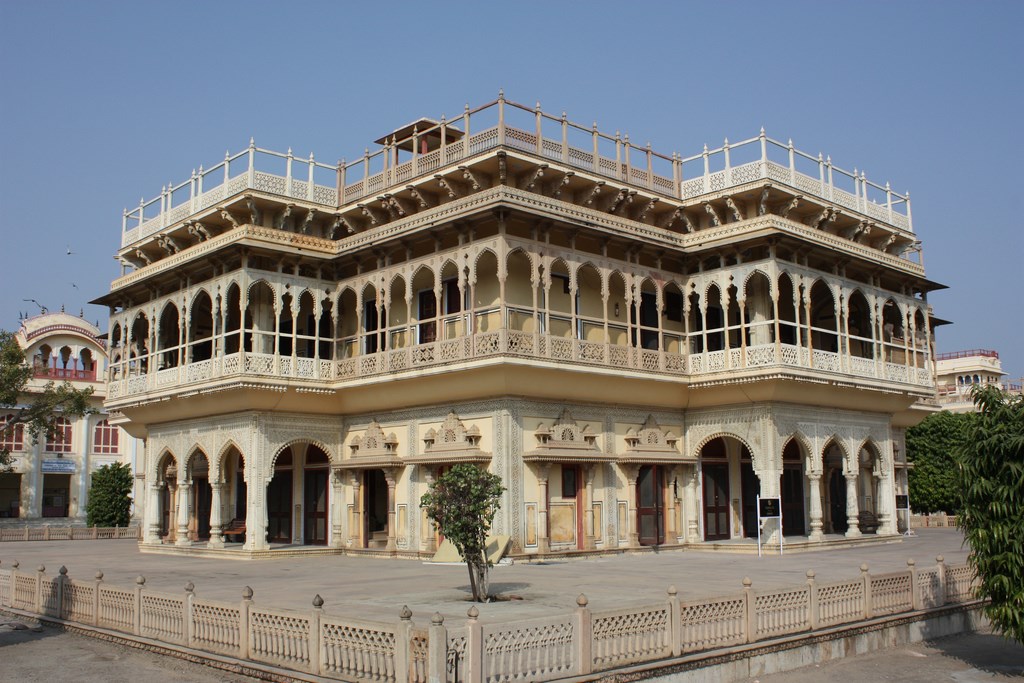
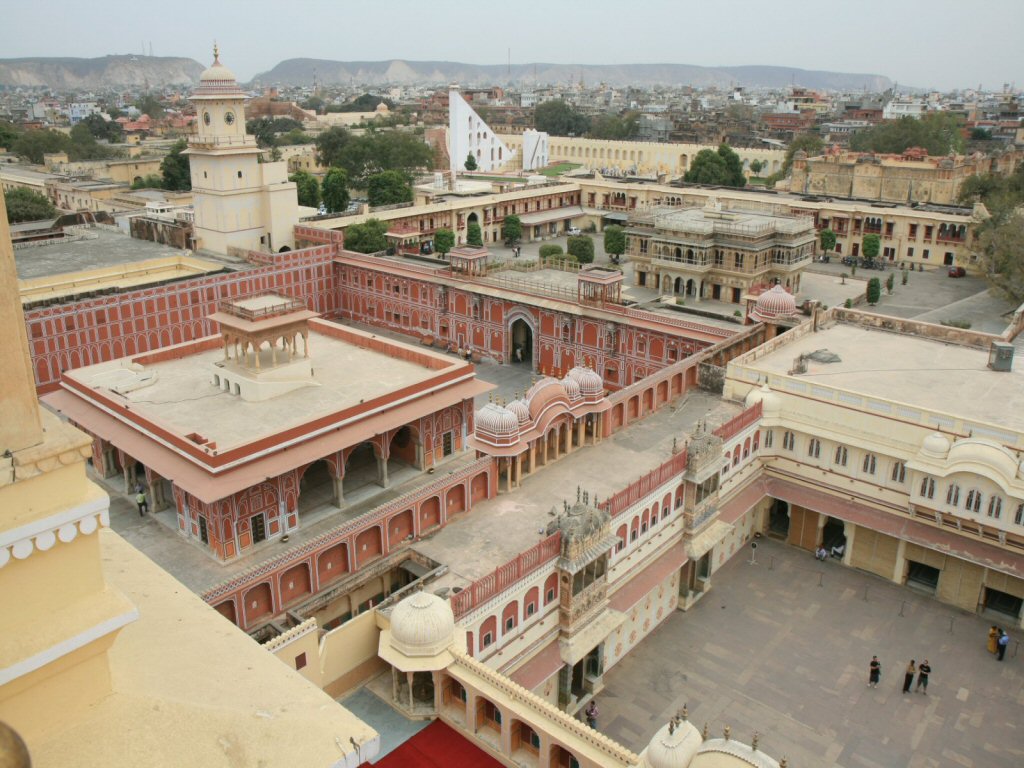
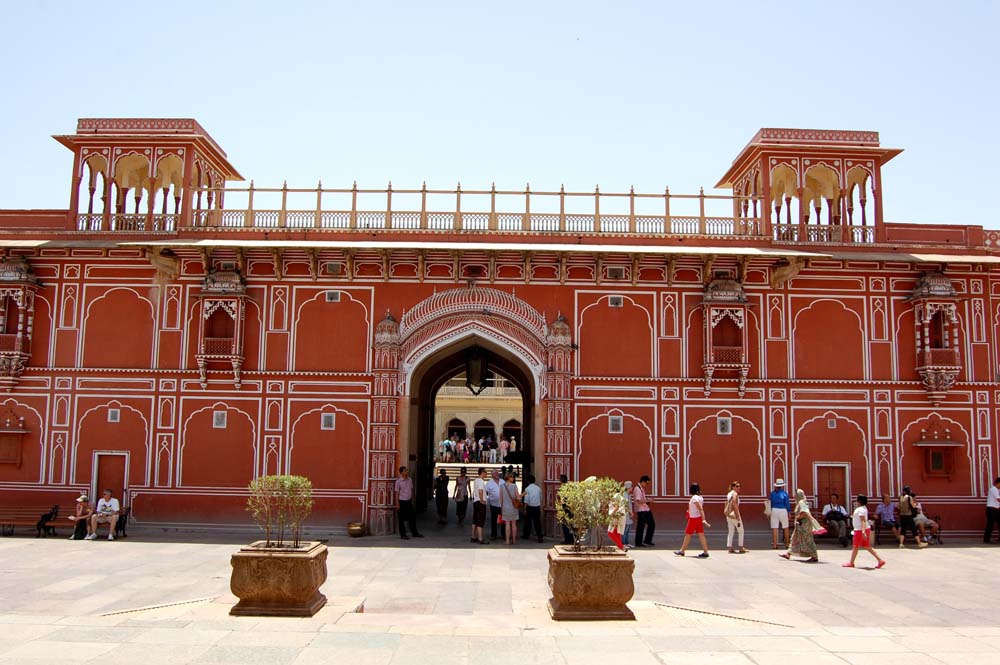
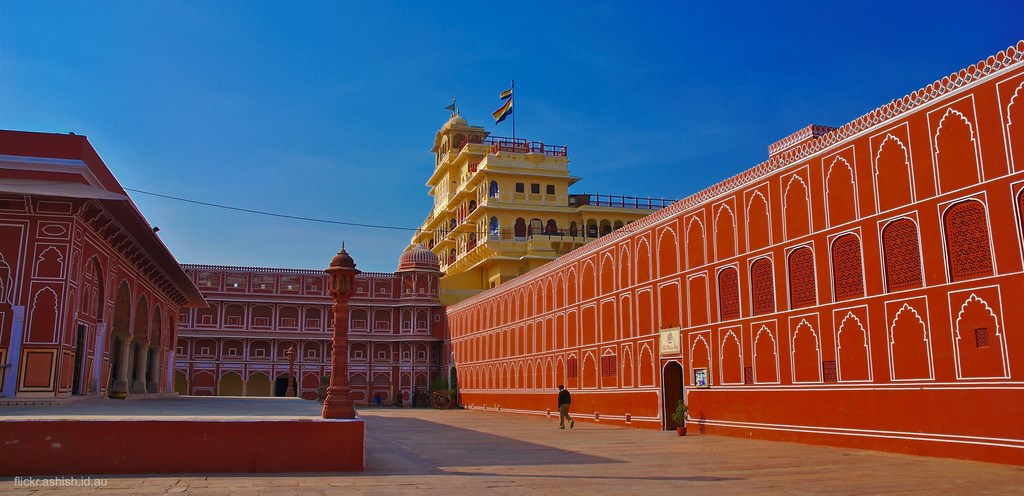
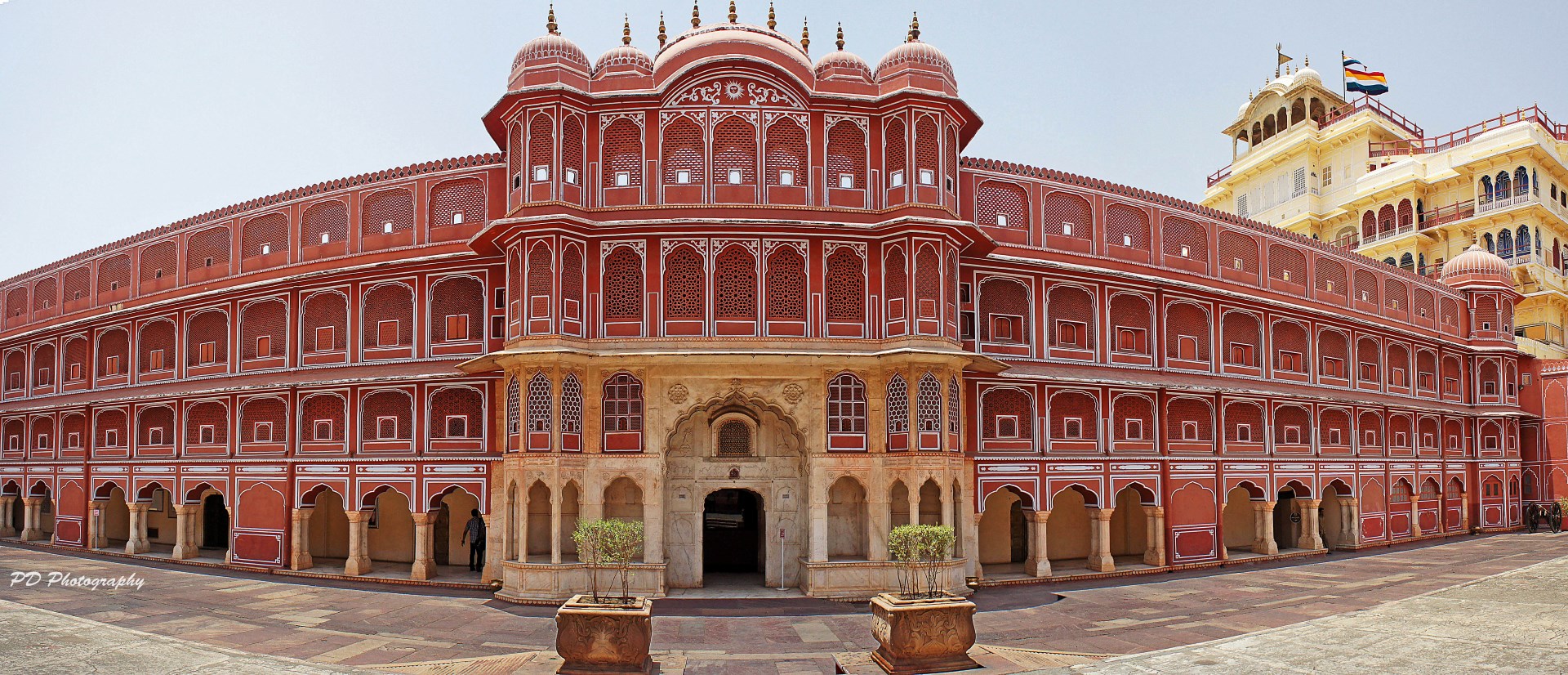
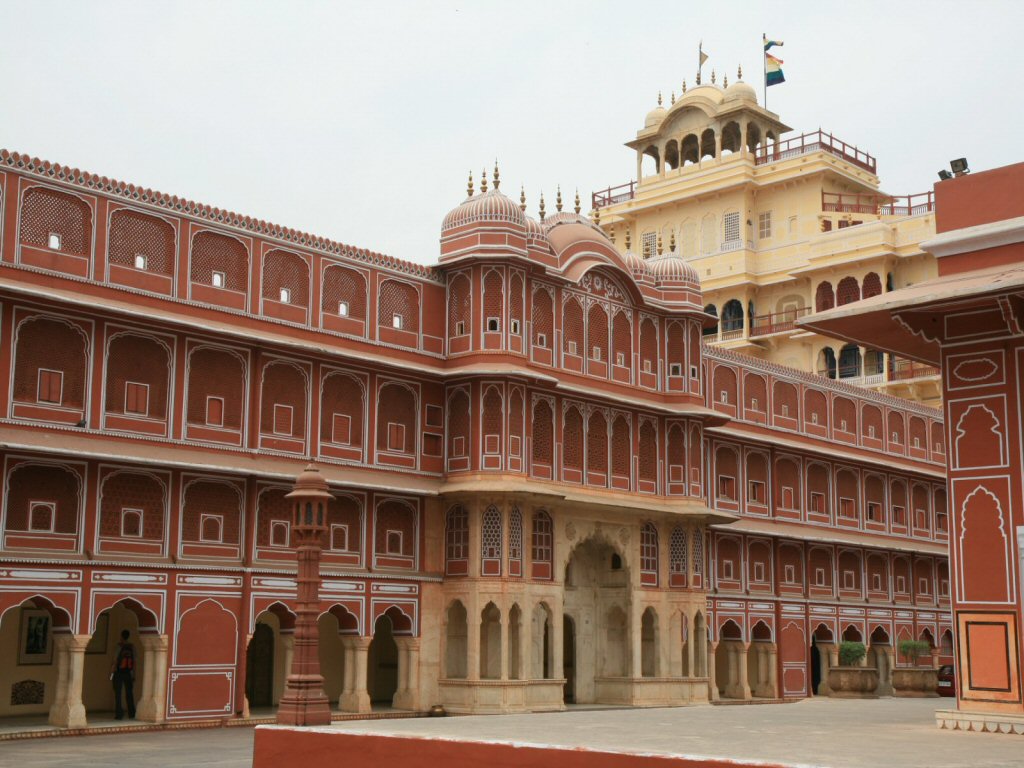
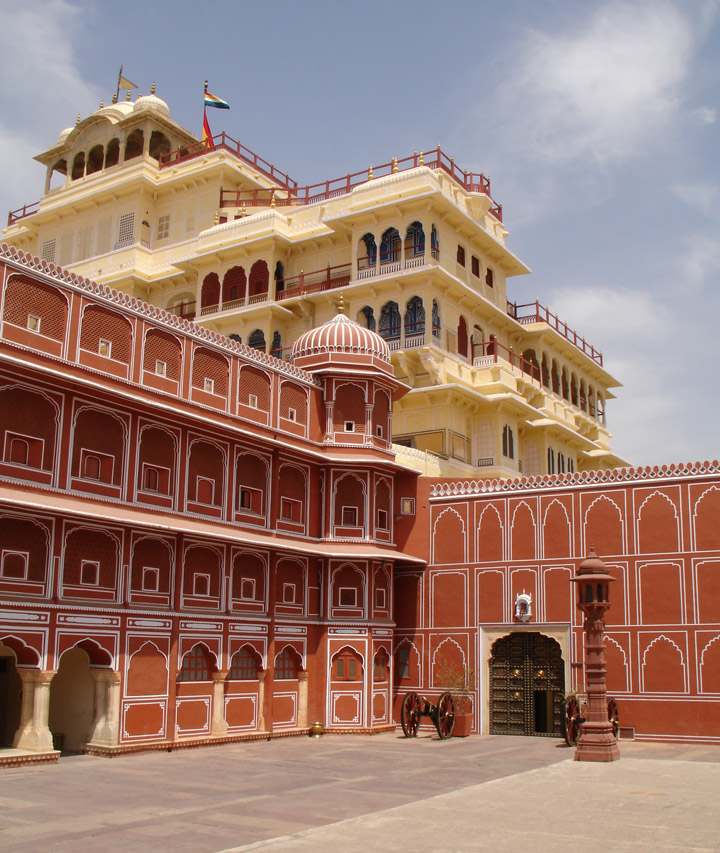
DÍA 11: JAIPUR
A las 8 de la mañana salimos puntuales con destino AMBER para ver su fuerte.
Está a las afueras y fue capital hasta que ésta se traslado a Jaipur. El fuerte es en realidad un palacio fortificado al que los turistas acceden montados en elefante. Nosotros, activistas convencidos contra el maltrato animal, lo hacemos en coche por la parte de atrás y disfrutamos doblemente de las vistas, porque sabemos que de este modo no estamos dañando a ningún elefante ni propiciamos que se siga practicando esta cruel atracción turística. Se que es dificil pero espero que estas palabras hagan reflexionar a alguien y decidan subir de otro modo.
Ya dentro del fuerte empezamos a descubrir la India turística, la que muchos viajeros esperan encontrar. Limpieza, organización y tiendas de recuerdos por todos los lados, ¡hasta encantadores de serpientes!
La puerta de Ganesa, el Jas Mandir, las celosías... Recorrimos todo el fuerte de arriba a abajo, un rato acompañados por un vigilante que "amablemente" y a cambio de unas rupias (esta vez fueron pocas porque ya estábamos más que escarmentados) nos muestra algún pasadizo.
De nuevo en Jaipur entraremos en el JANTAR MANTAR. En Amber habíamos comprado una entrada combinada por 300 rs por persona y que permite acceder a Ambert Fort, Albert Hall, Jantar- Mantar, Nahargarh Fort y Hawa Mahal. Solo nos dejamos de ver el Albert Hall con lo que nos ahorramos unas cuantas rupias cada uno.
El Jantar Mantar es un interesante observatorio astronómico cuyos elementos son todavía utilizados hoy en día, algunos sobre todo, para precisar la fecha de llegada, duración e intensidad del monzón.
Nuestro maratoniano día continua por el City Palace. El complejo está parcialmente abierto pues sigue siendo residencia real.
Merece la pena al Pritam Chowk o jardín de los Amantes con cuatro preciosas puertas y las urnas de plata que sirvieron para transportar agua del Ganges cuando Madho Sinhg II visitó Londres en 1901.
Ya solo nos queda el fascinante Hawa Mahal o PALACIO DE LOS VIENTOS con una caprichosa arquitectura rajastaní. Con una ornamentada fachada, que se ha convertido en emblema de la ciudad, el palacio servía para que las damas de la corte pudieran contemplar el ajetreo de la ciudad sin ser vistas.
Tomamos por el camino unas deliciosas Pakorees, verduras rebozadas exquisitas y unas Kachoras muy picantes.
Pedimos a nuestro conductor que nos lleve a alguna fábrica de textil, porque queremos comprar algunas colchas y pashminas, que adquirimos después de una ardua negociación. Son de gran calidad.
Descansamos una hora en el hotel, reponemos fuerzas y terminamos el día en el fuerte de NAHARGARH o fuerte del Tigre, a 9 km de Jaipur.
El palacio fue construido para 9 reinas y se encuentra deteriorado y abandonado, pero tiene mucho encanto y romanticismo.
Su laberinto de terrazas, patios y habitaciones están decorados bellamente. Y paseamos rodeados de monos que juegan en las alturas.
La puesta de sol desde el restaurante del fuerte merece la pena. Por 50 rs que pagas para acceder puedes tomar un chai, agua o refresco, con increibles vistas de la caotica ciudad, envueltos en el silencio de la lejanía y la luz del atardecer.
La cena la tomamos en el The Royal Treat amenizada con danzas tradicionales, termina con un intento de baile rajastaní por nuestra parte, pero no creo que el resultado sea muy exitoso.
http://notasenmilibretaviajera.blogspot.com.es/2011_11_01_archive.html
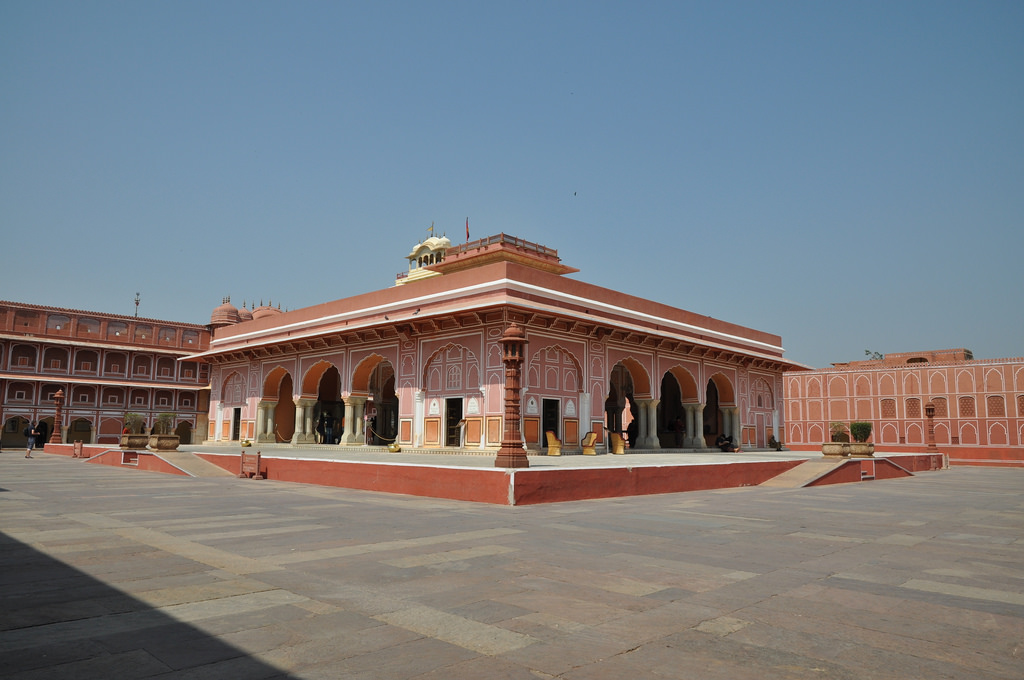
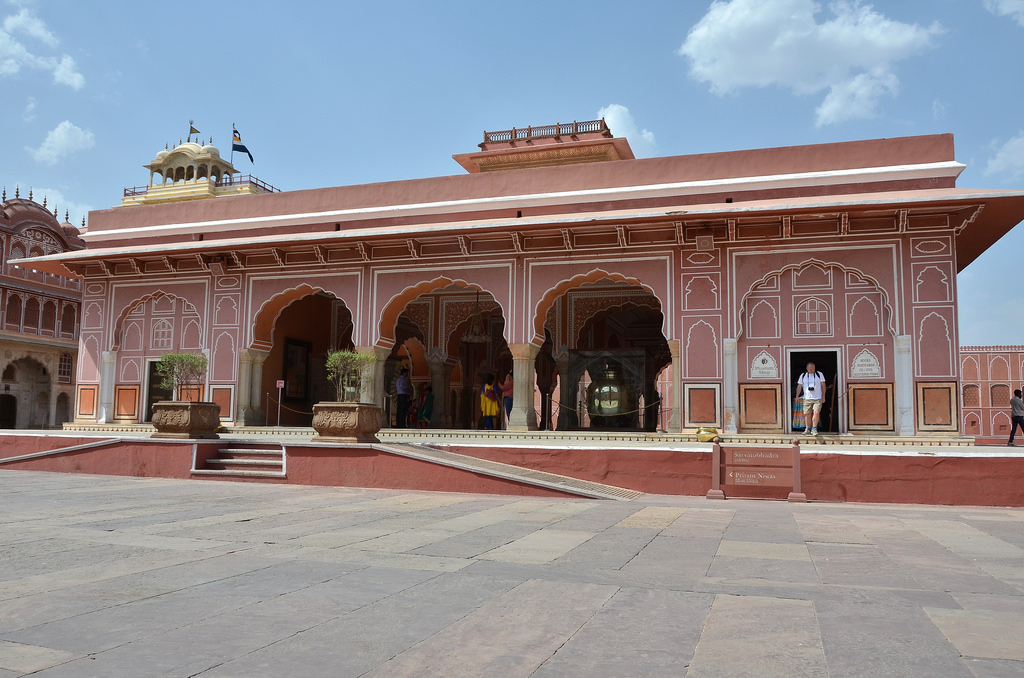
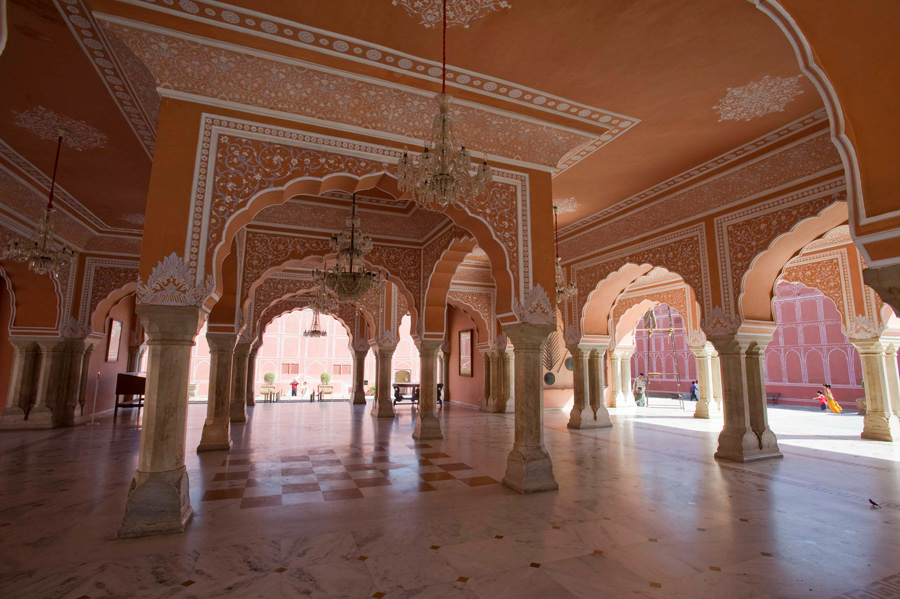
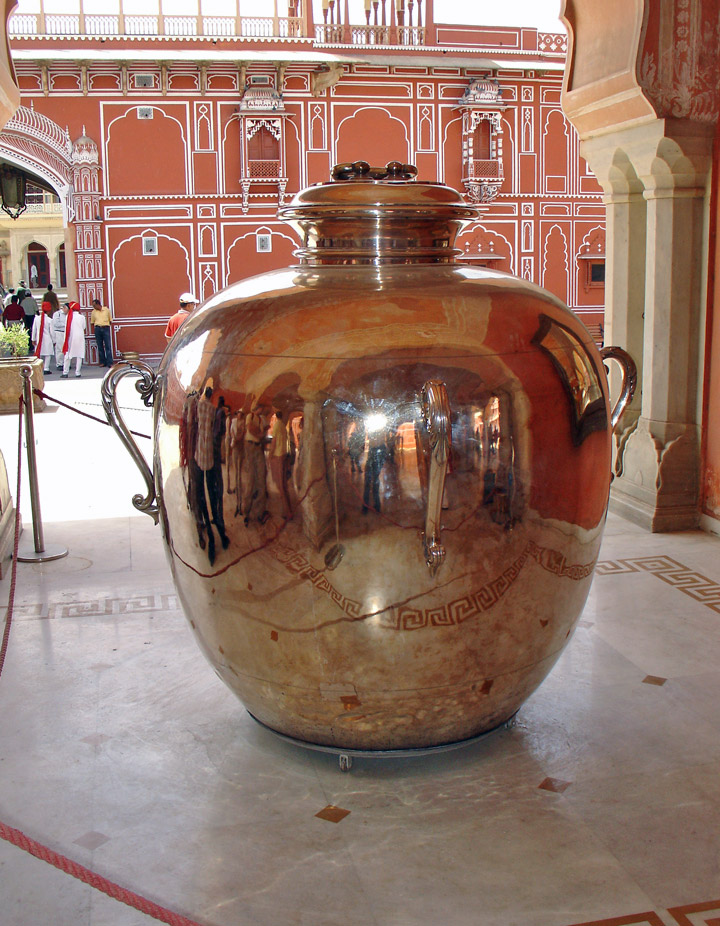
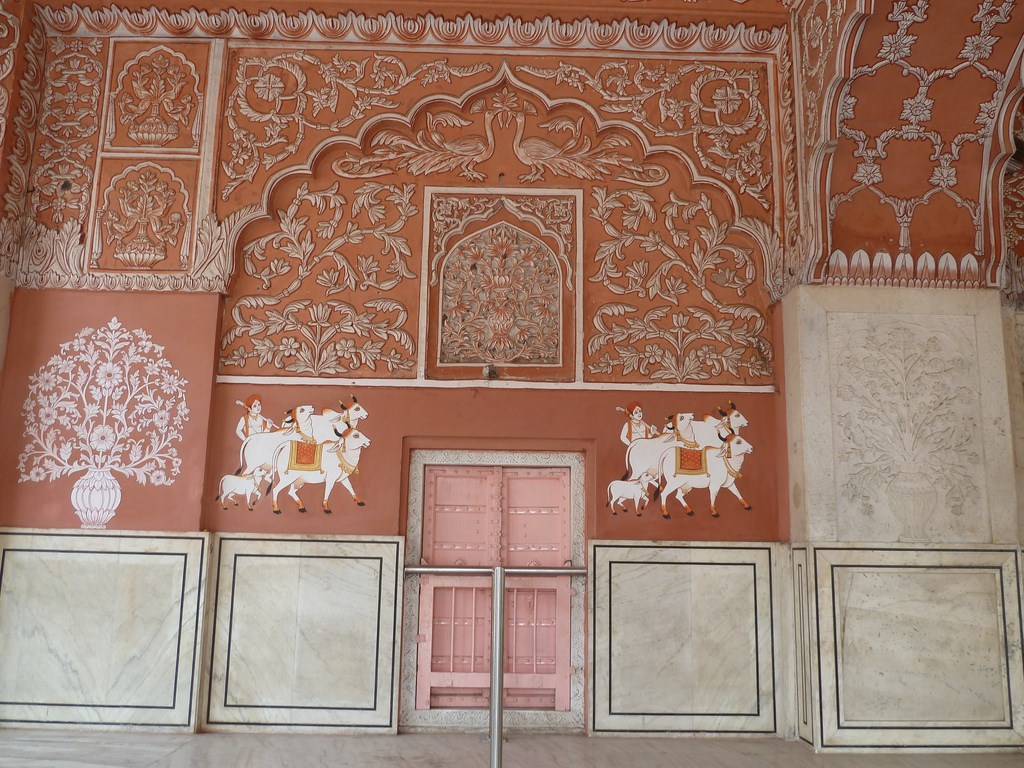
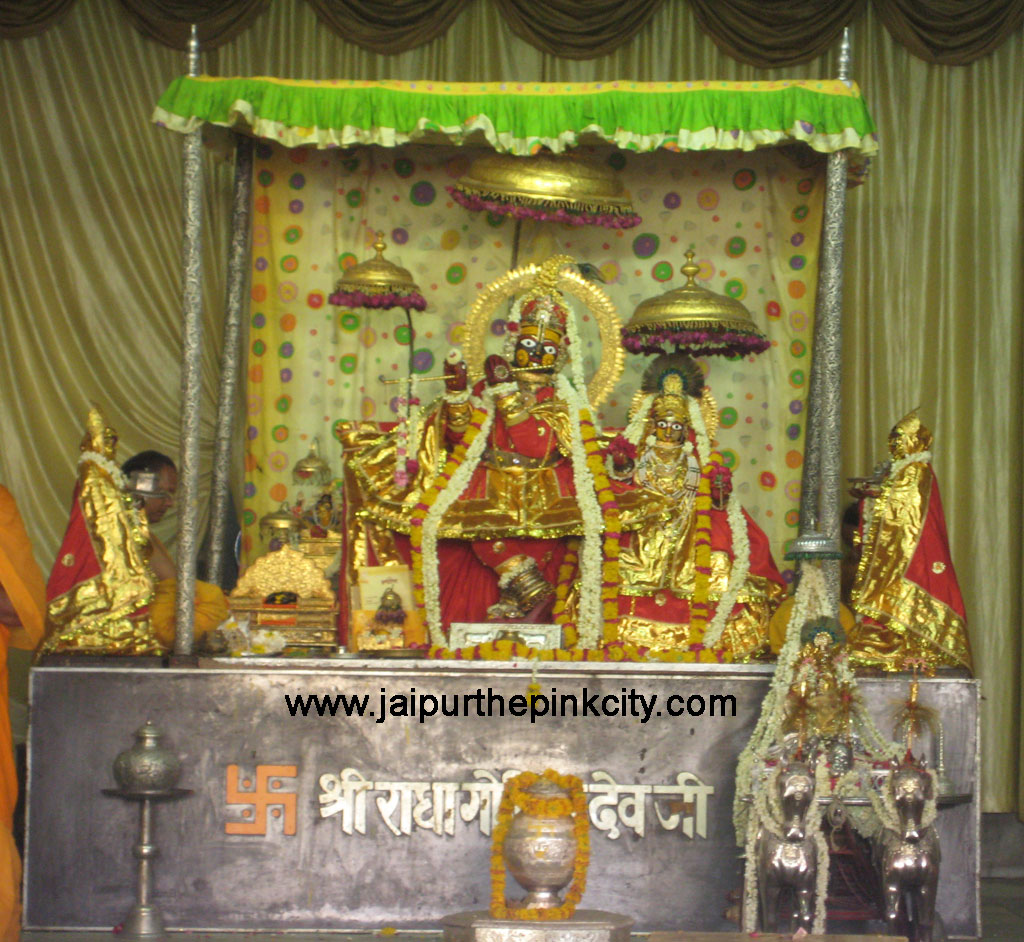
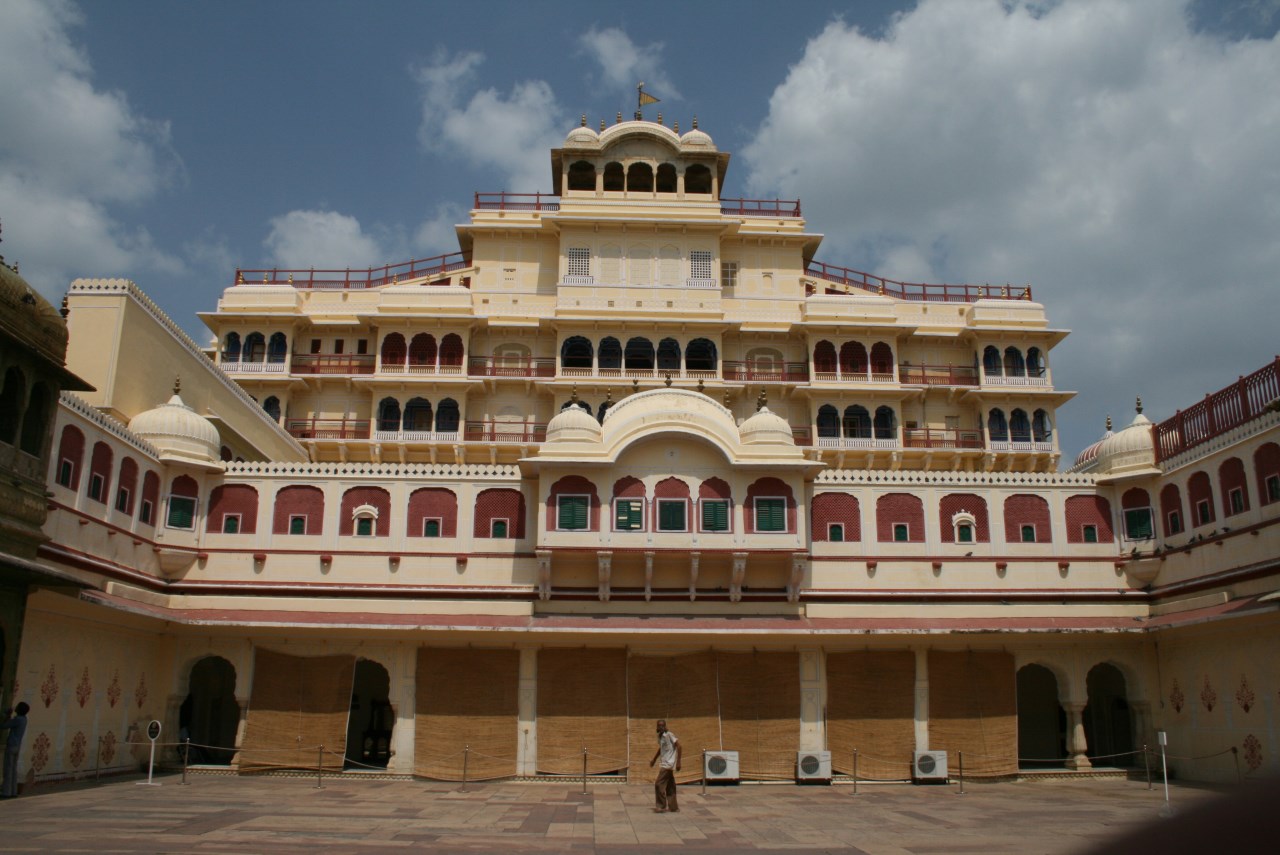
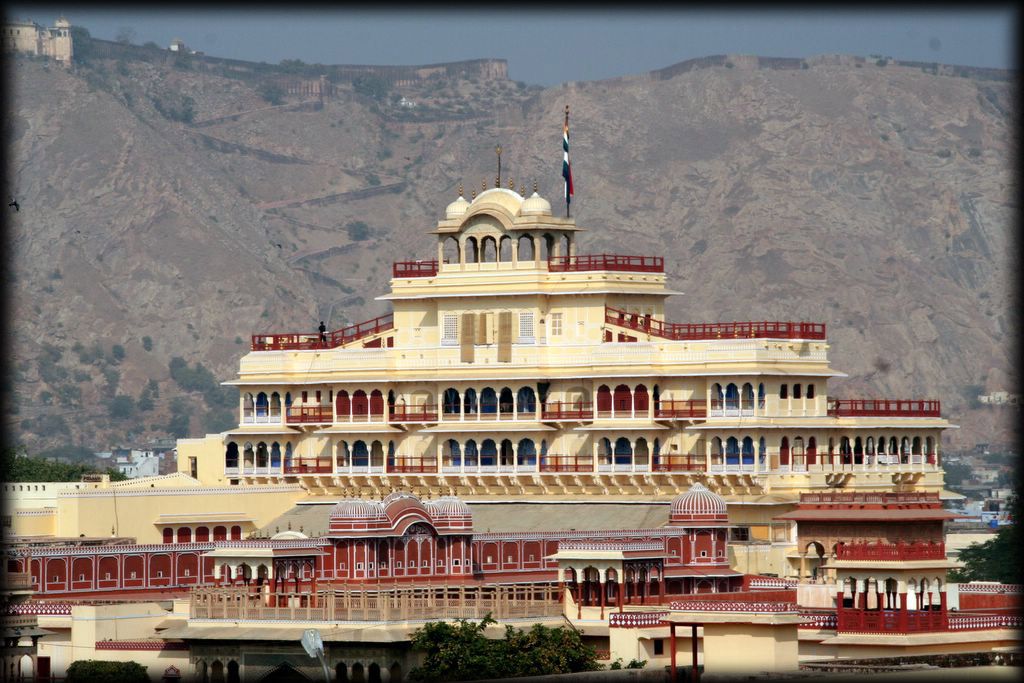
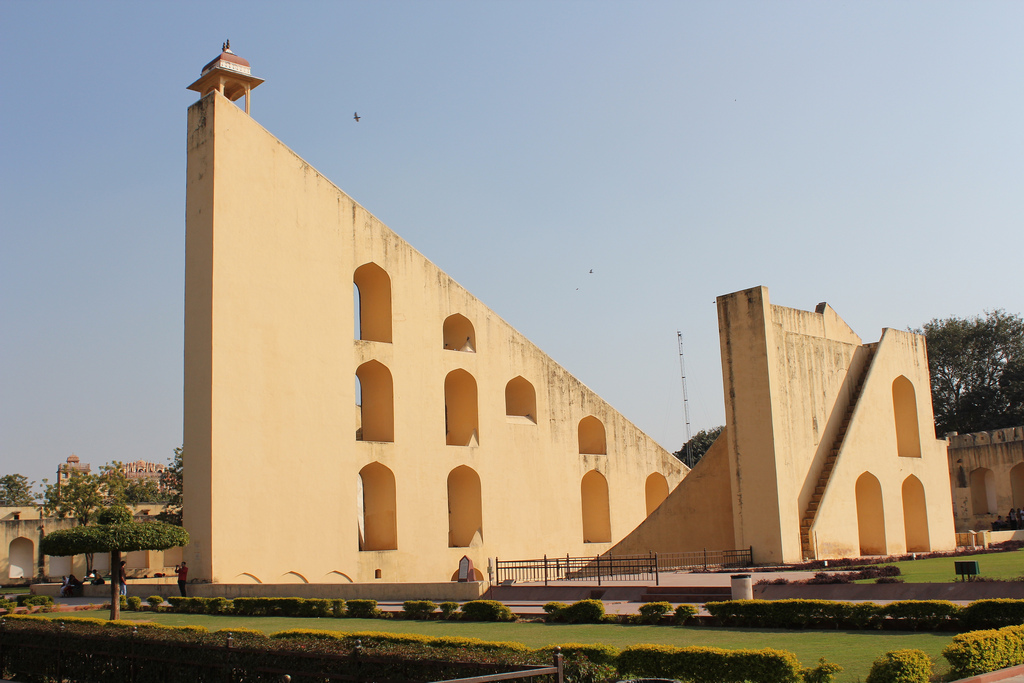
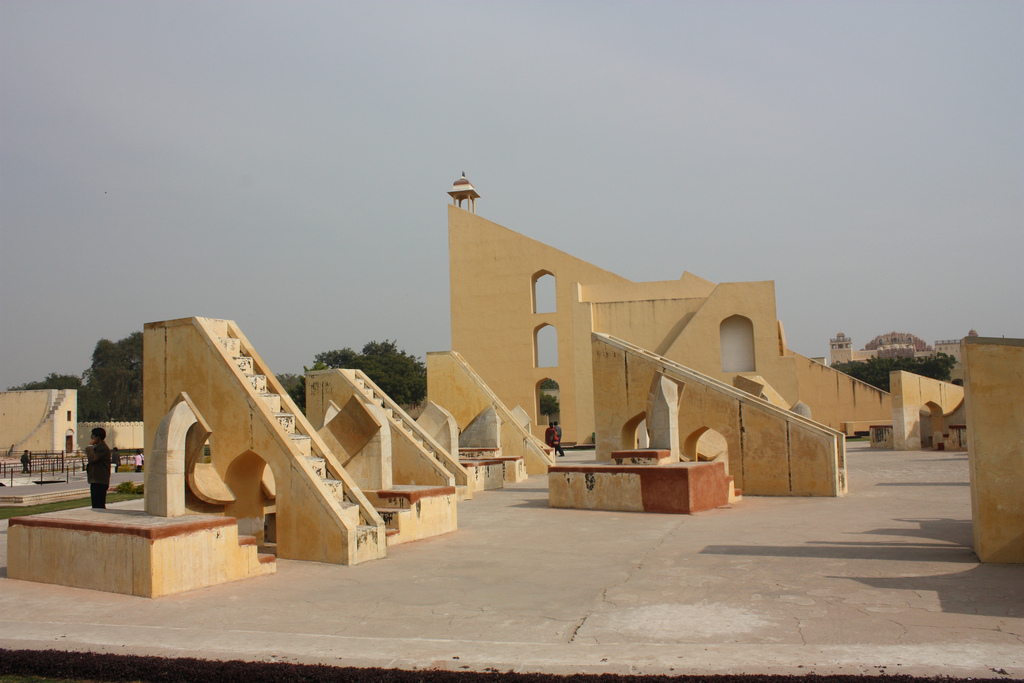
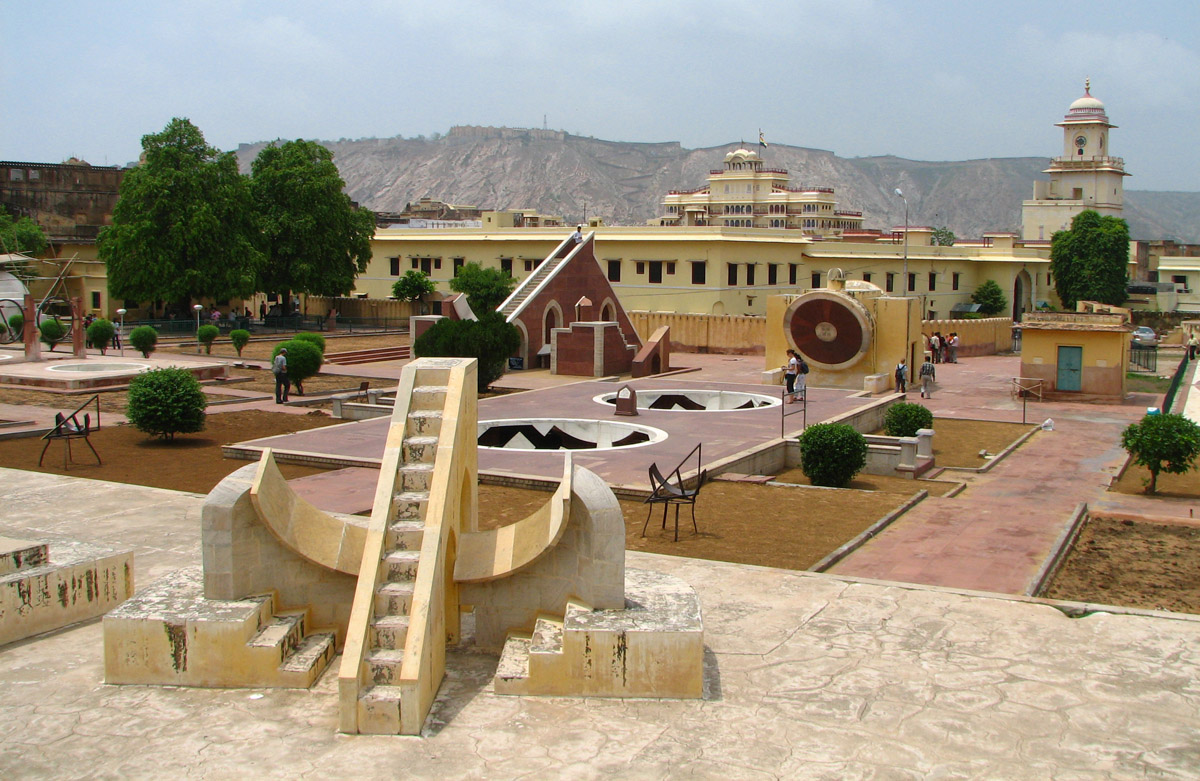
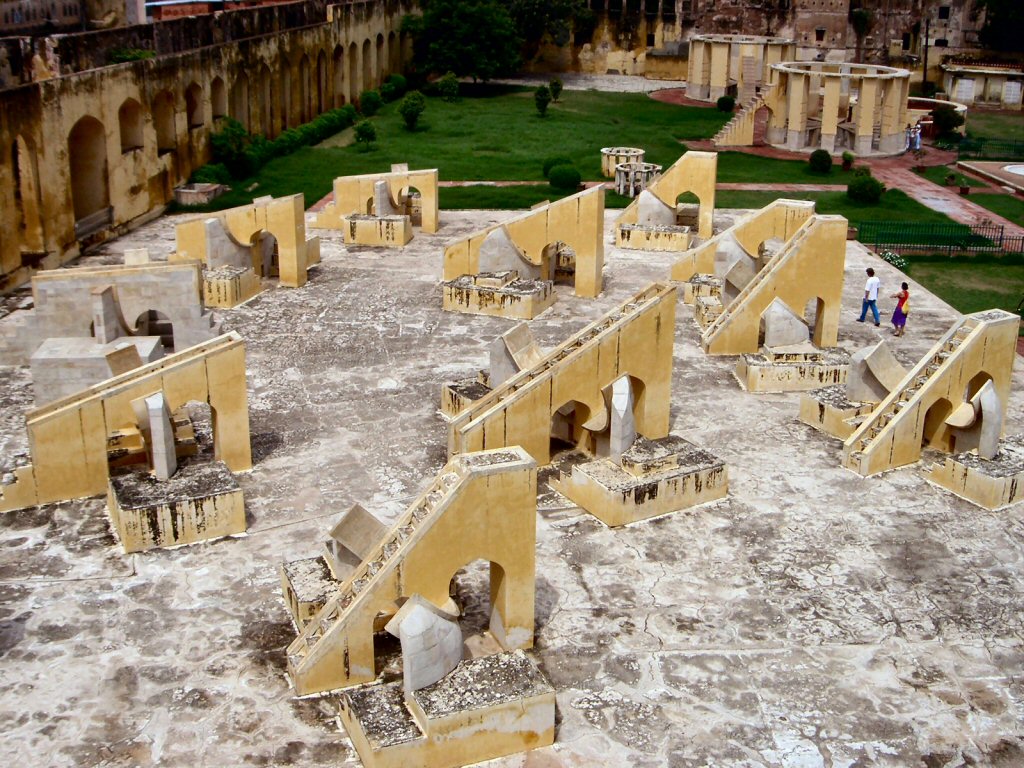
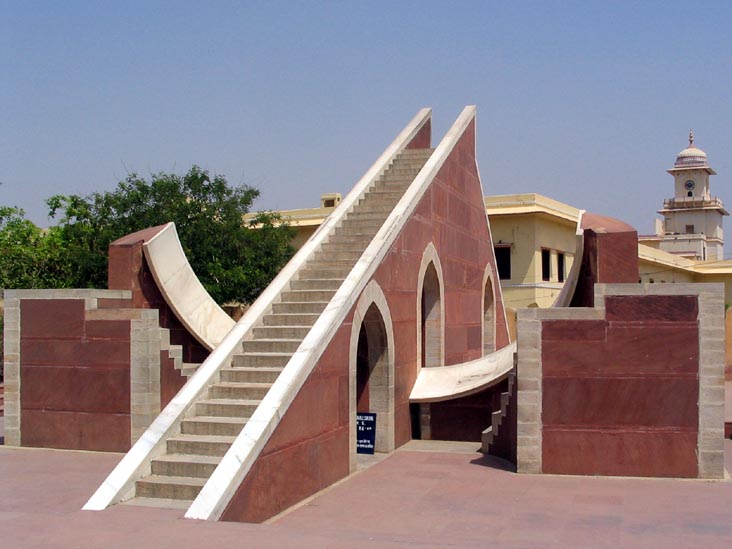
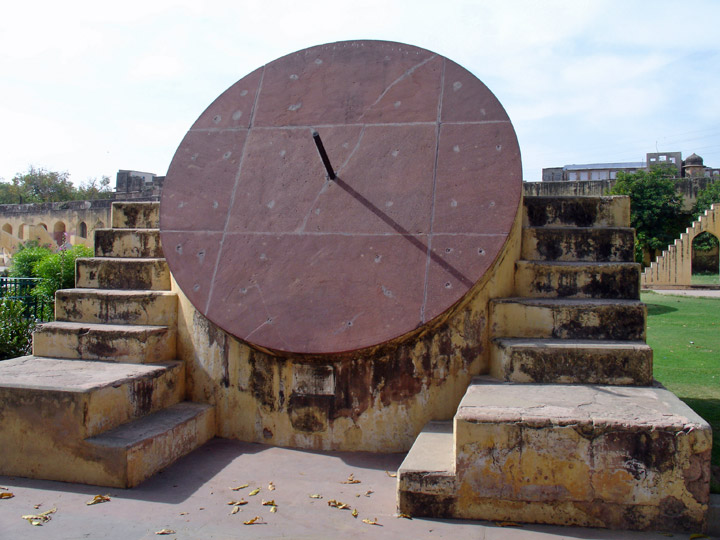
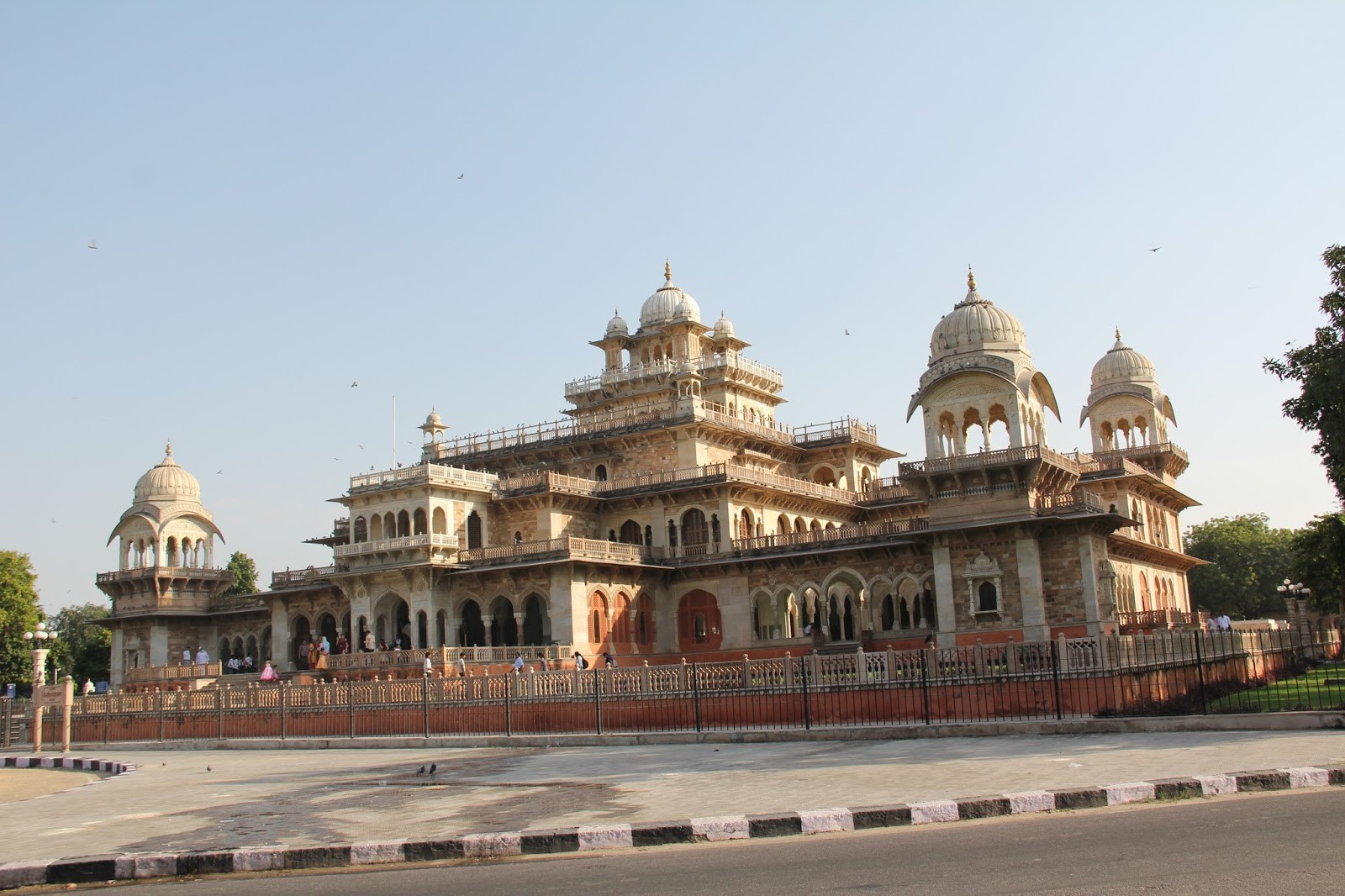
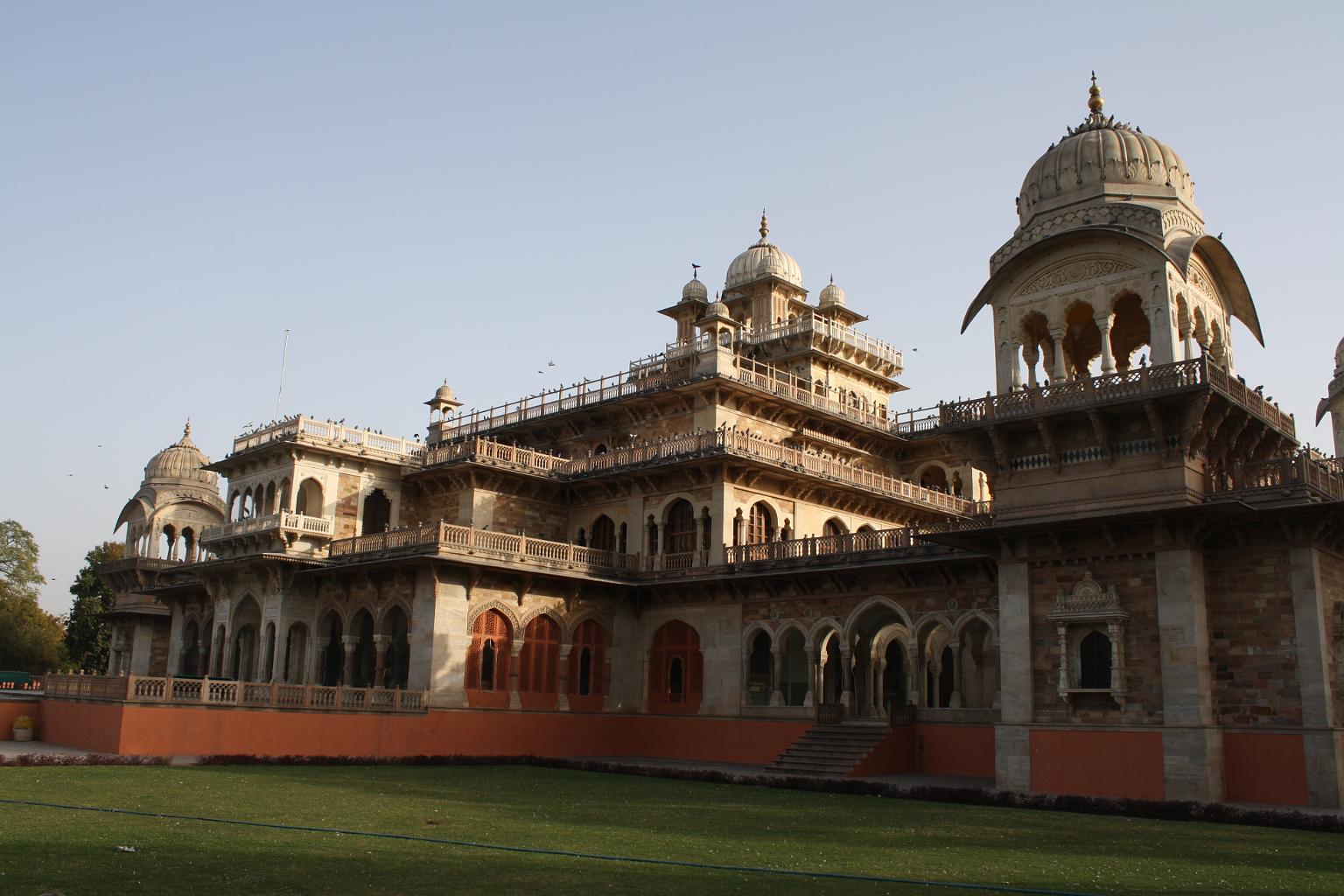

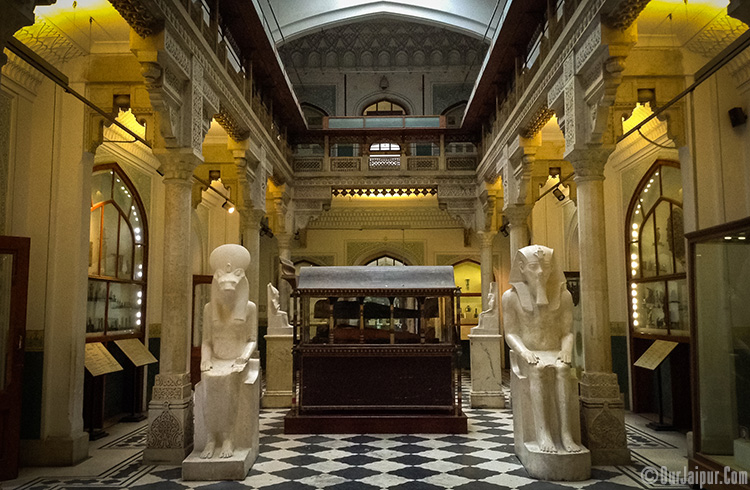
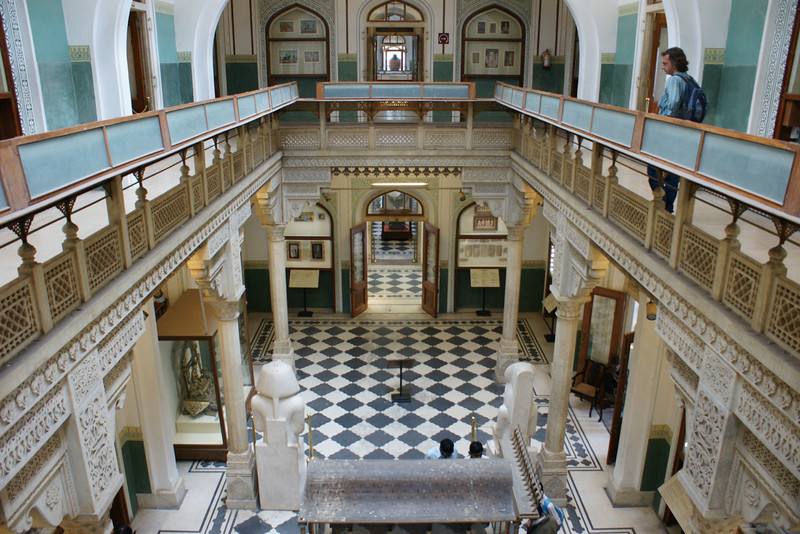
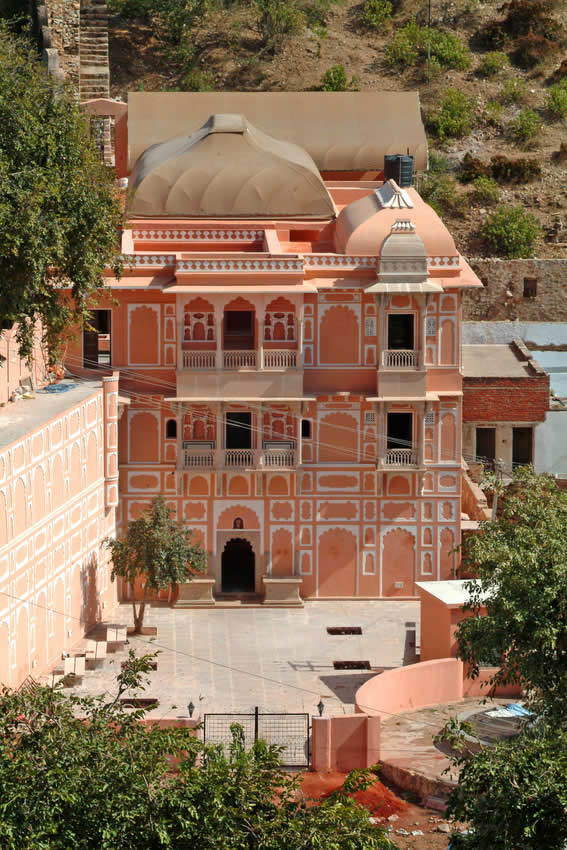
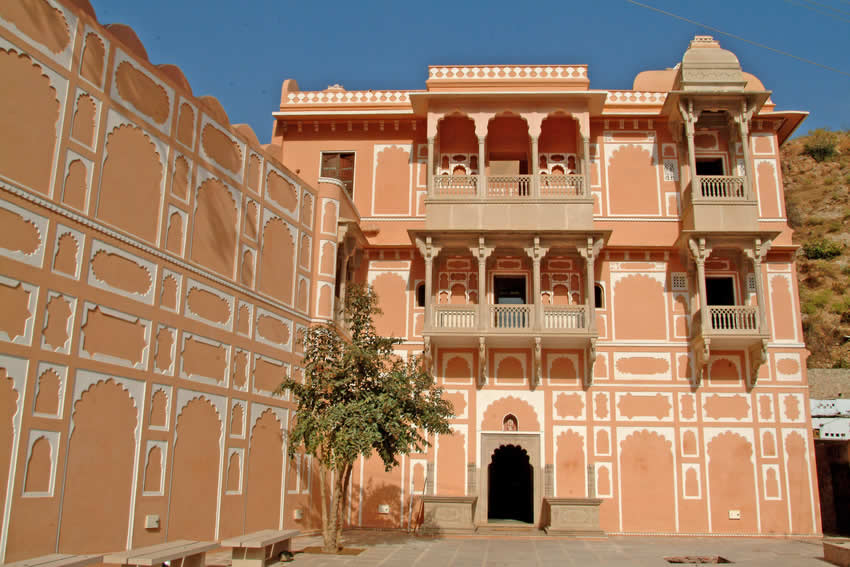
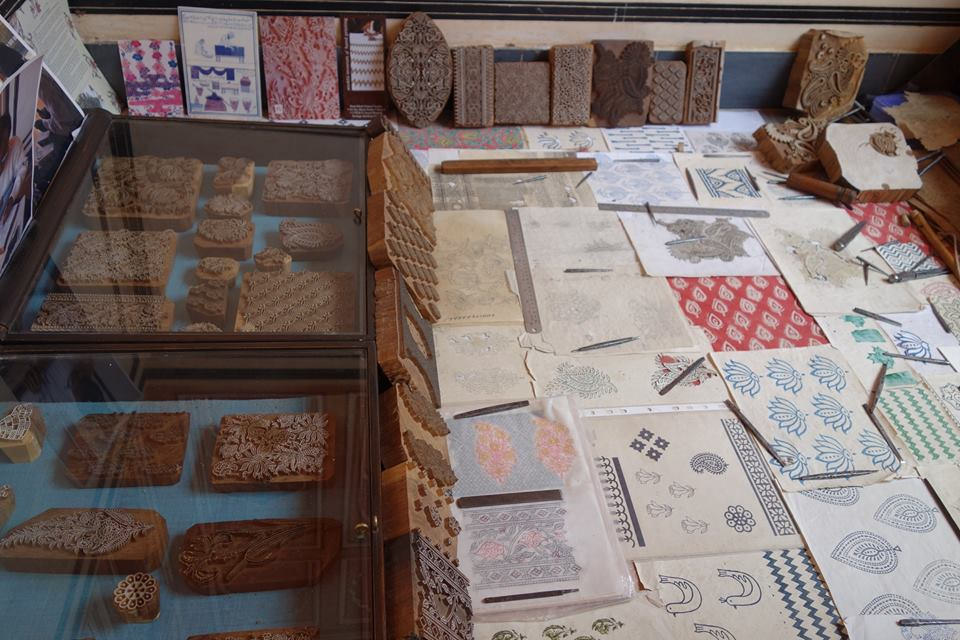
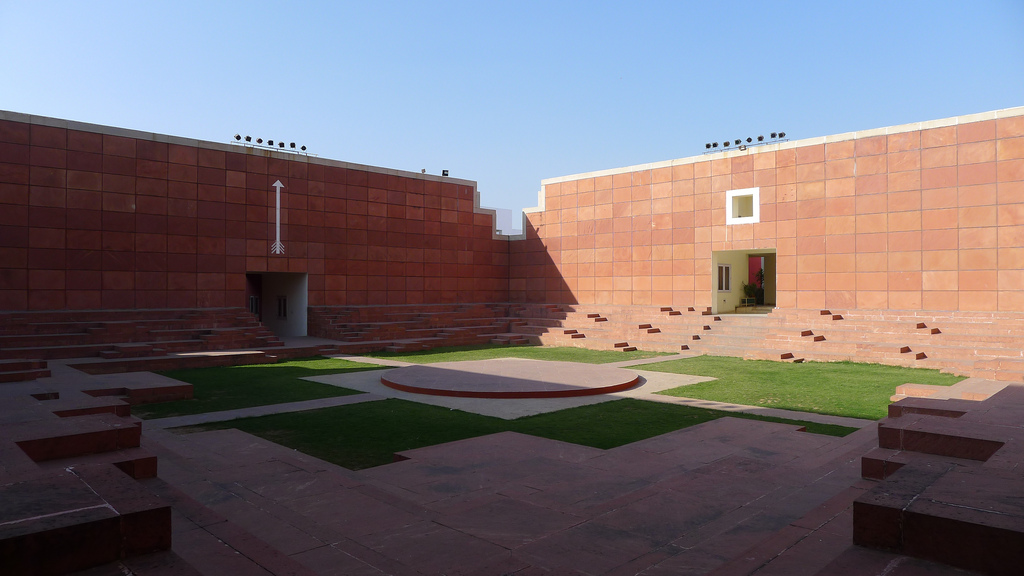
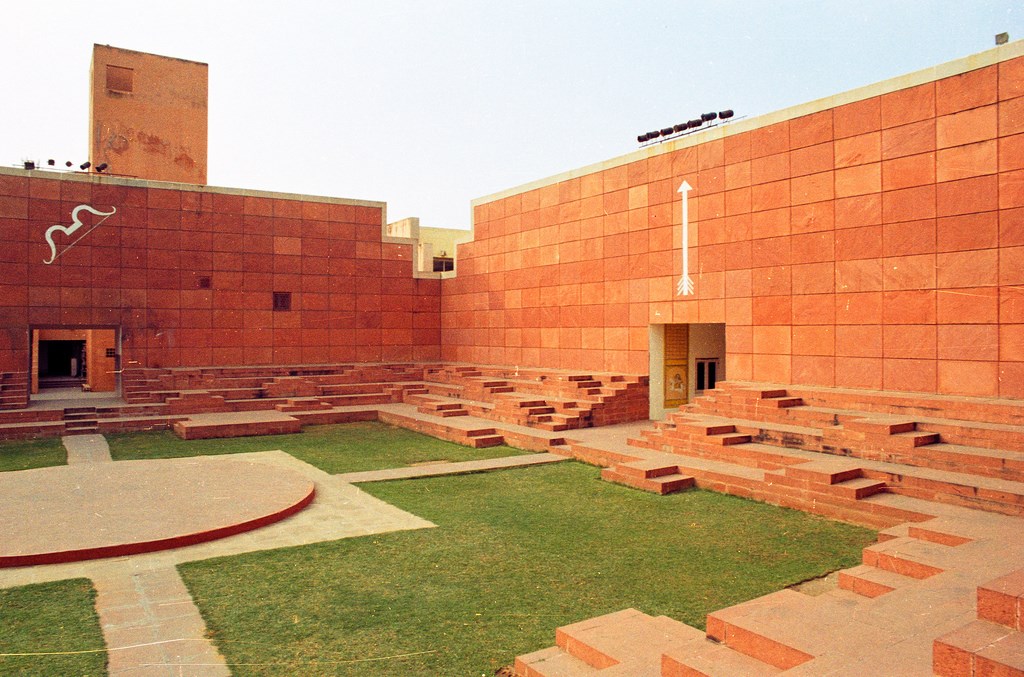
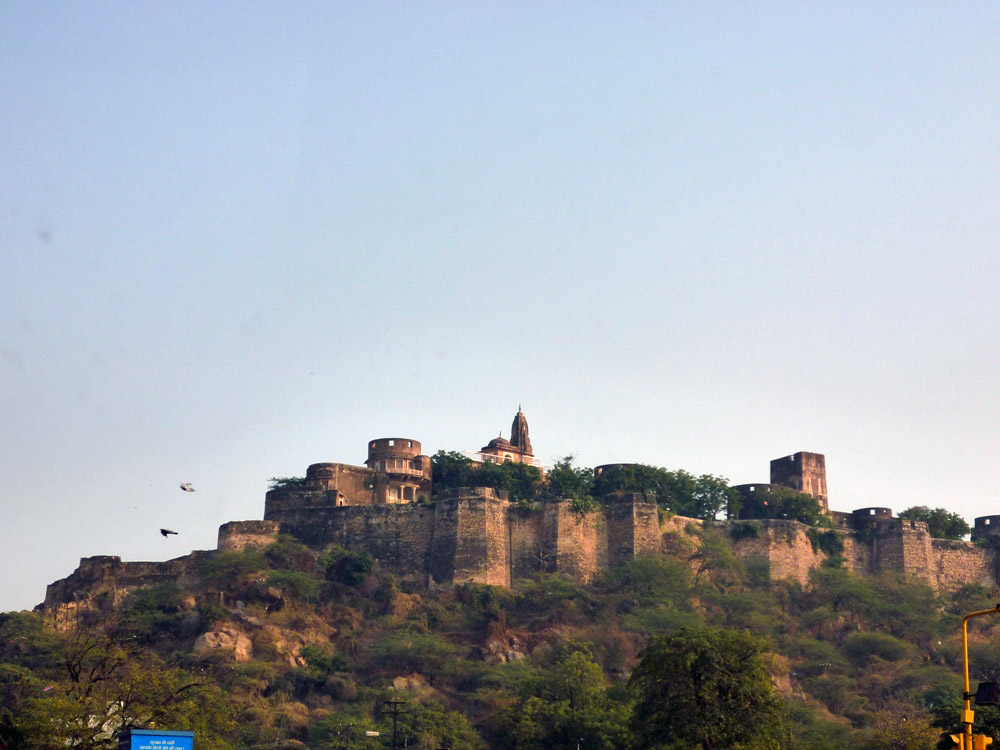

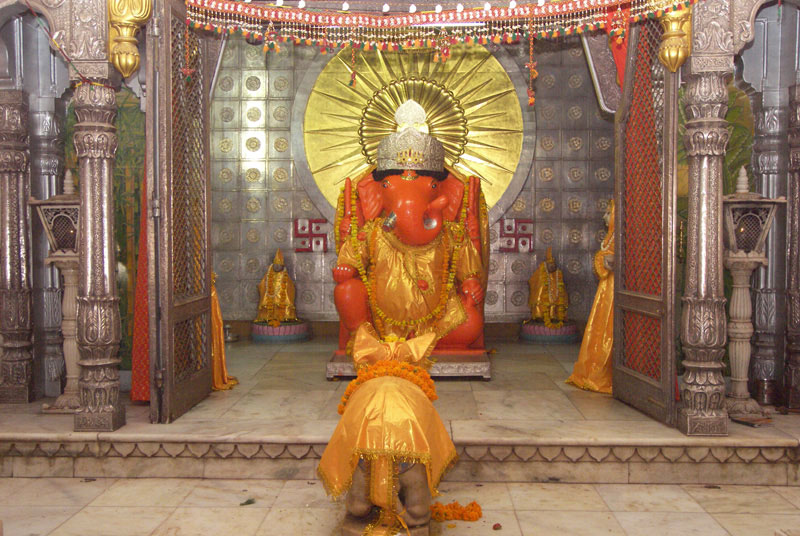
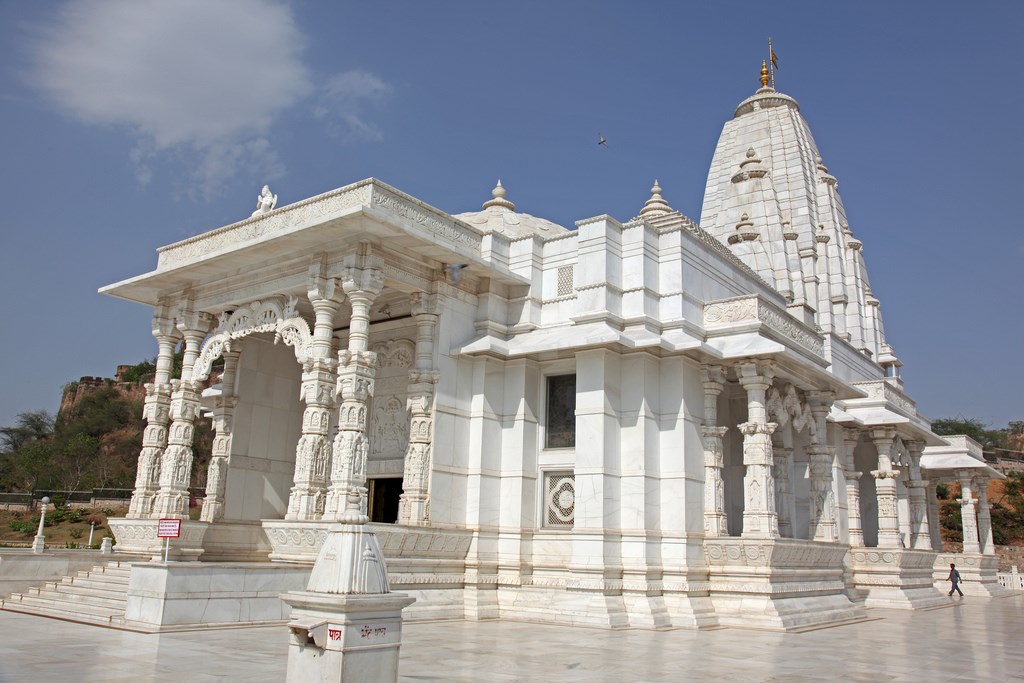
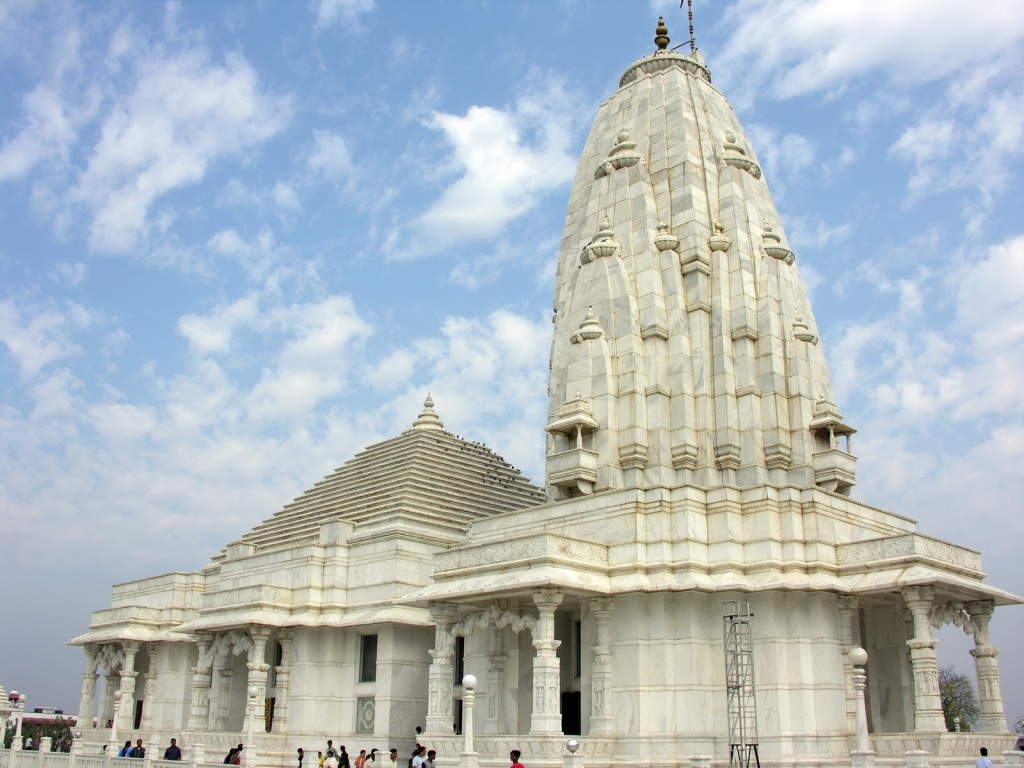
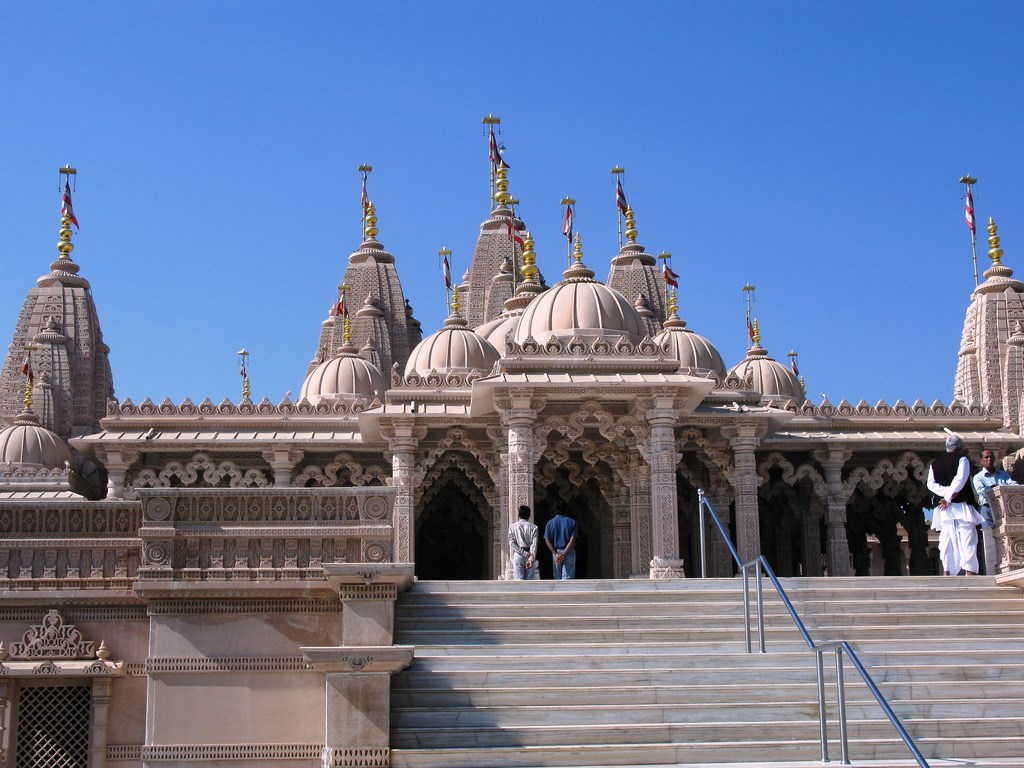
Llamada la “ciudad rosa” por el color de sus casas, Jaipur es la capital del estado de Rajasthan, en la India; (antes llamado Rajputana, tierra de los rajputs, honrados y valientes guerreros que lucharon hasta la muerte por proteger sus tierras); fue construida en el siglo XVIII por el maharajá Jai Singh II, del que recibe su nombre (la ciudad de Jai); la terminación pur indica ciudad de origen hindú a diferencia de la terminación ad que indica ciudad árabe. Jaipur no siempre fue rosa; en 1883 se pintó con este color que es tradicional de la bienvenida para recibir la visita del príncipe Alberto, esposo de la reina Victoria, y el color rosado, combinado con adornos en blanco, se ha conservado después dando a la ciudad una personalidad propia y característica.
La ciudad fue planificada en torno a cuatro grandes avenidas: dos grandes calles paralelas la cortan en toda su longitud en tres franjas de igual anchura; otras dos calles discurren perpendicularmente a las anteriores, dividiéndola por tanto en nueve partes, los nueve barrios rectangulares de Jaipur que simbolizan las nueve partes del universo. Sus casas están divididas en su mayoría en locales de la misma anchura. Su floreciente comercio y sus industrias de tejidos, joyería, etc. hacen de Jaipur una próspera ciudad.
Sus principales lugares de interés son el Palacio de los Vientos, convertido en emblema de la ciudad, el Palacio de la Ciudad, residencia del Maharajá y en parte transformado en museo, y el observatorio astronómico de Jai Singh; al tratarse de una ciudad de solo dos siglos de existencia carece de monumentos mas antiguos que deben buscarse en la cercana ciudad-fortaleza de Amber.
http://palmera.pntic.mec.es/~mpelae1/jai.htm
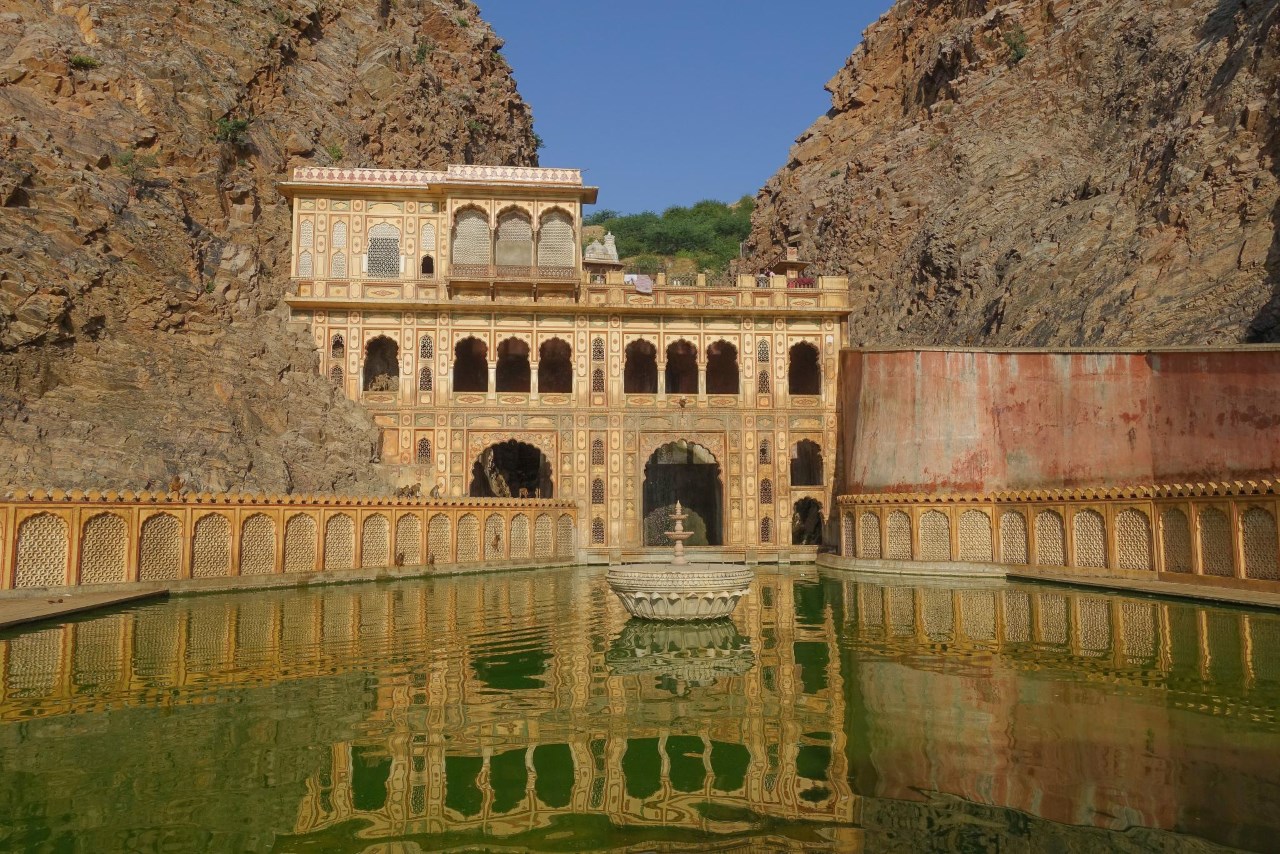
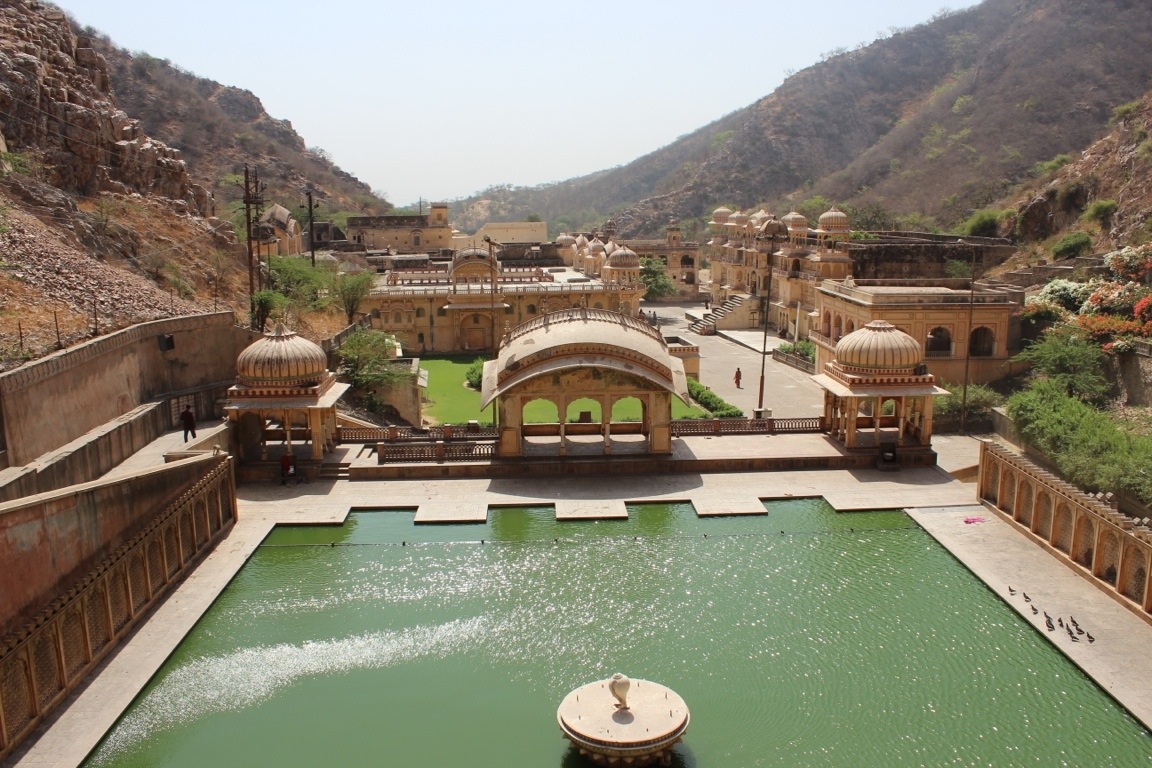
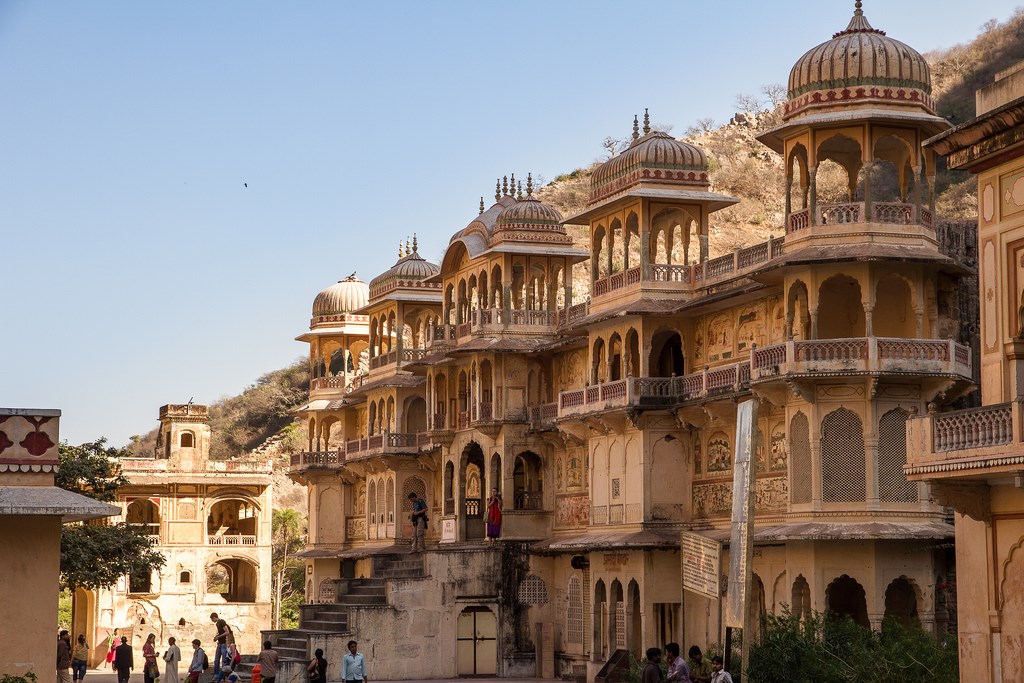

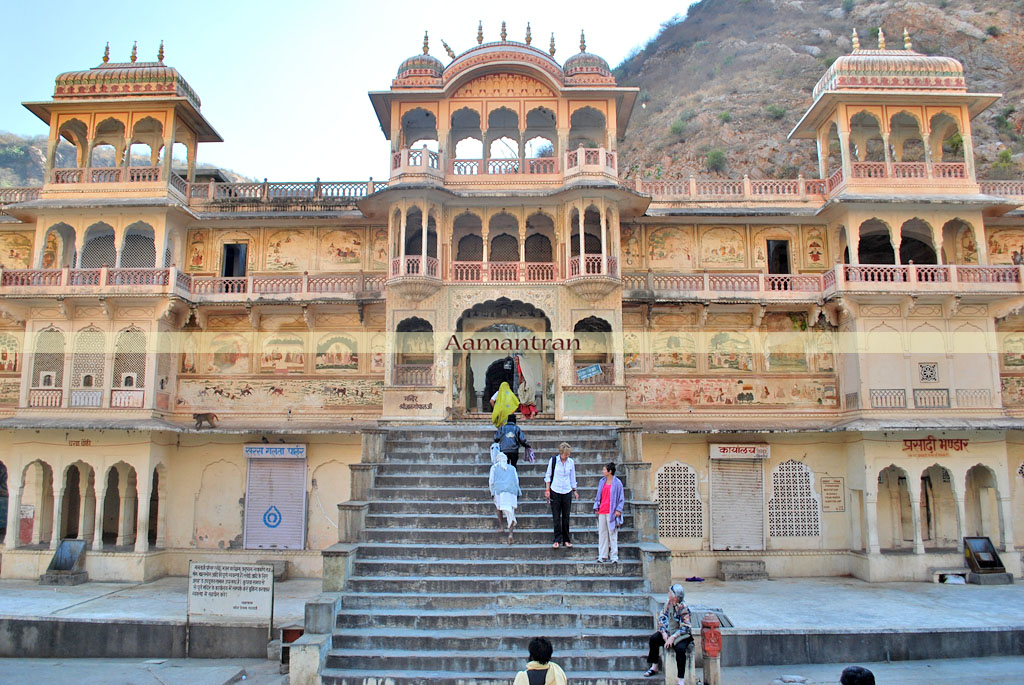
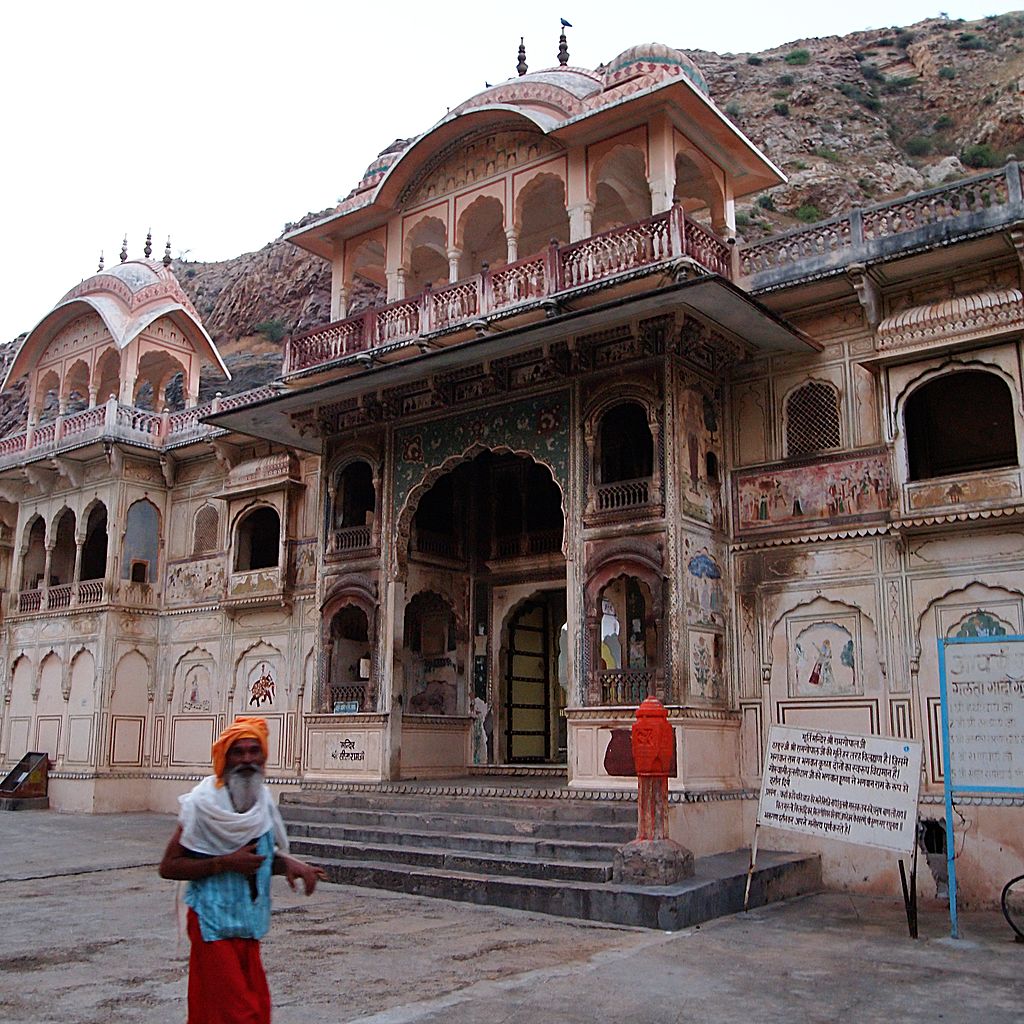
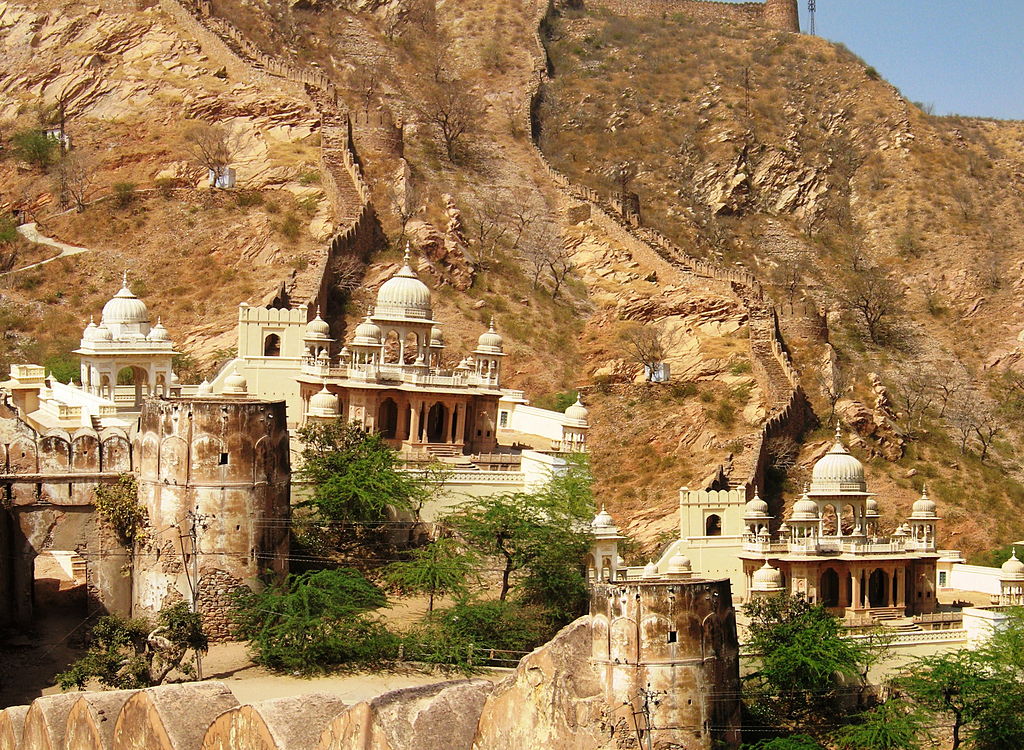
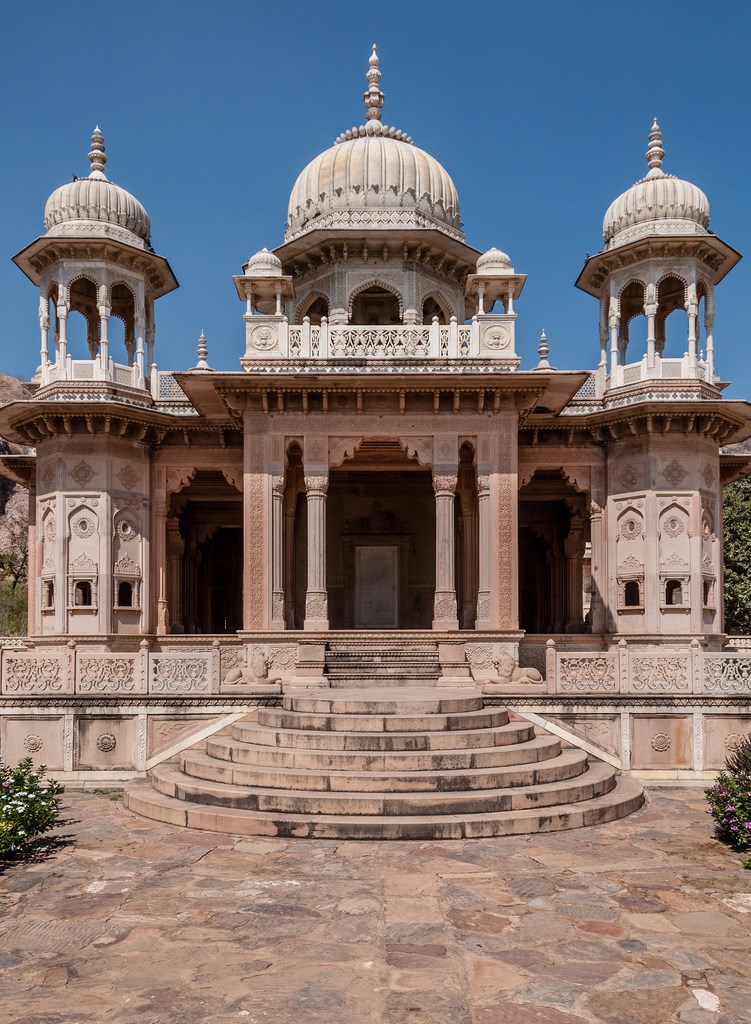
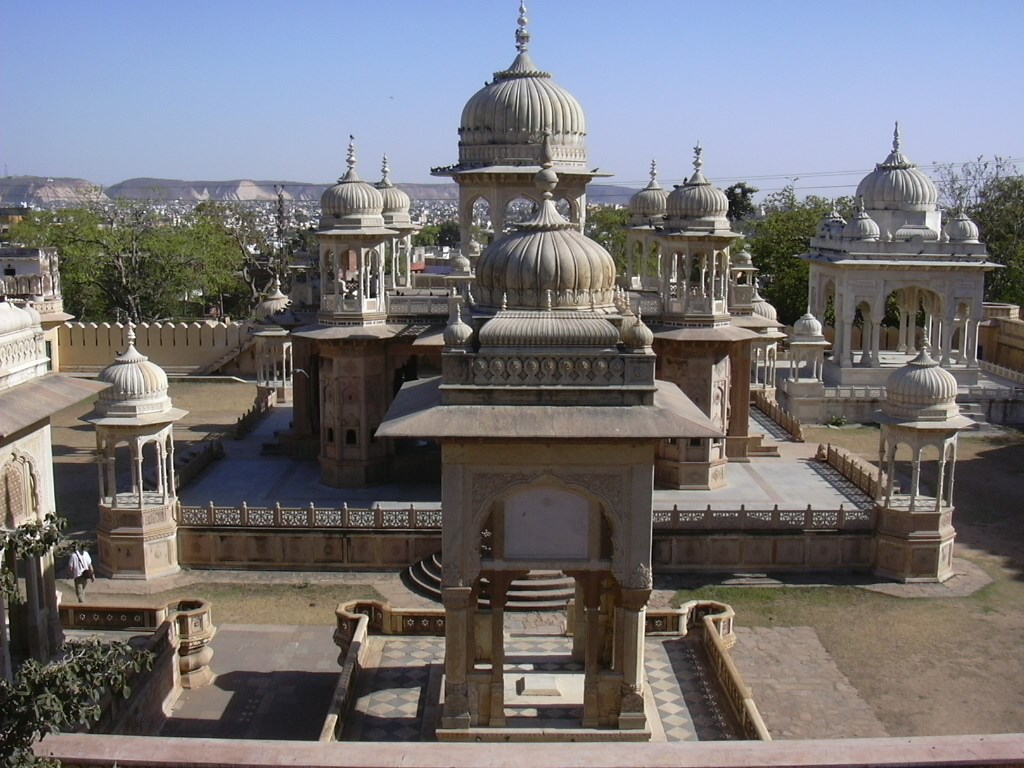
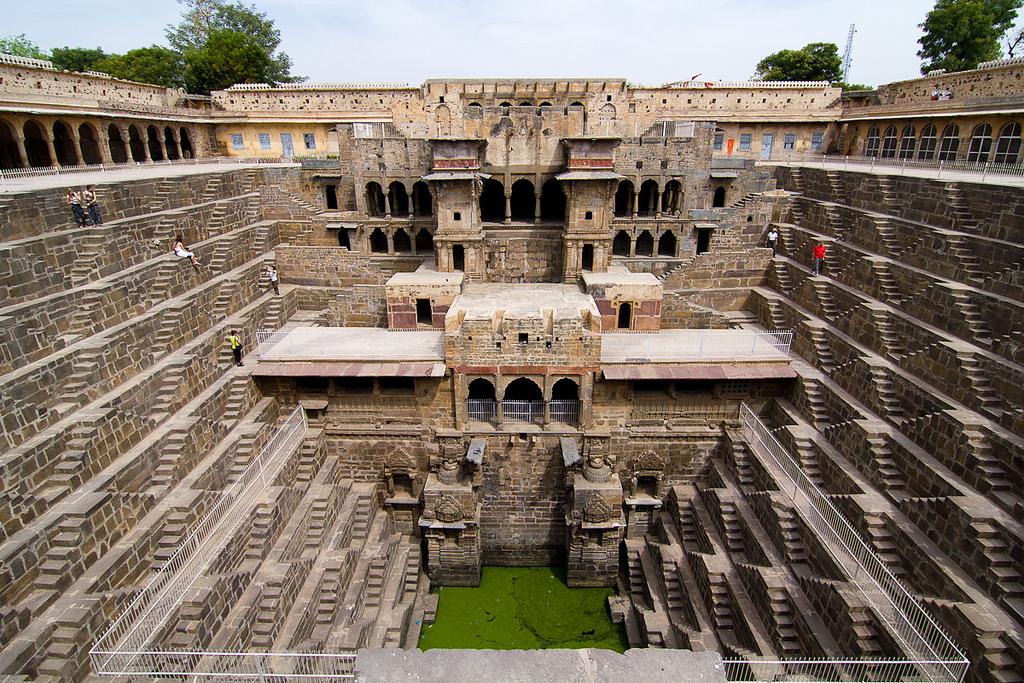
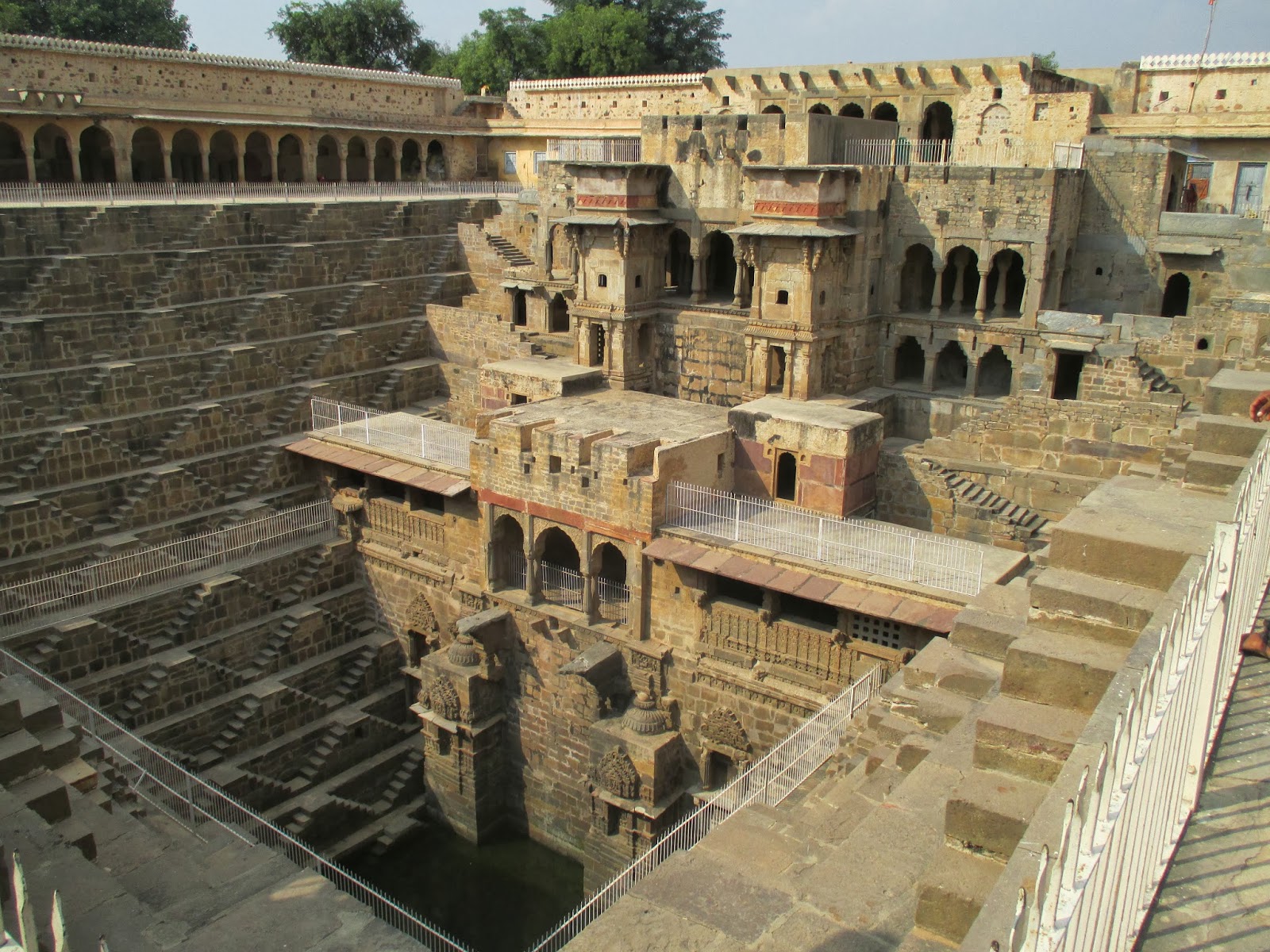
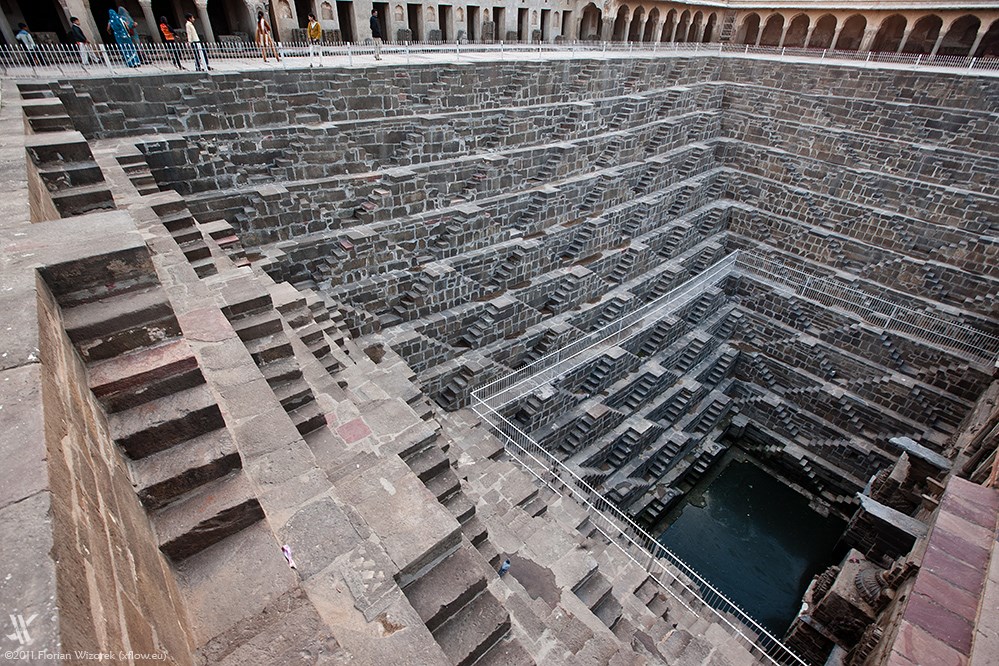
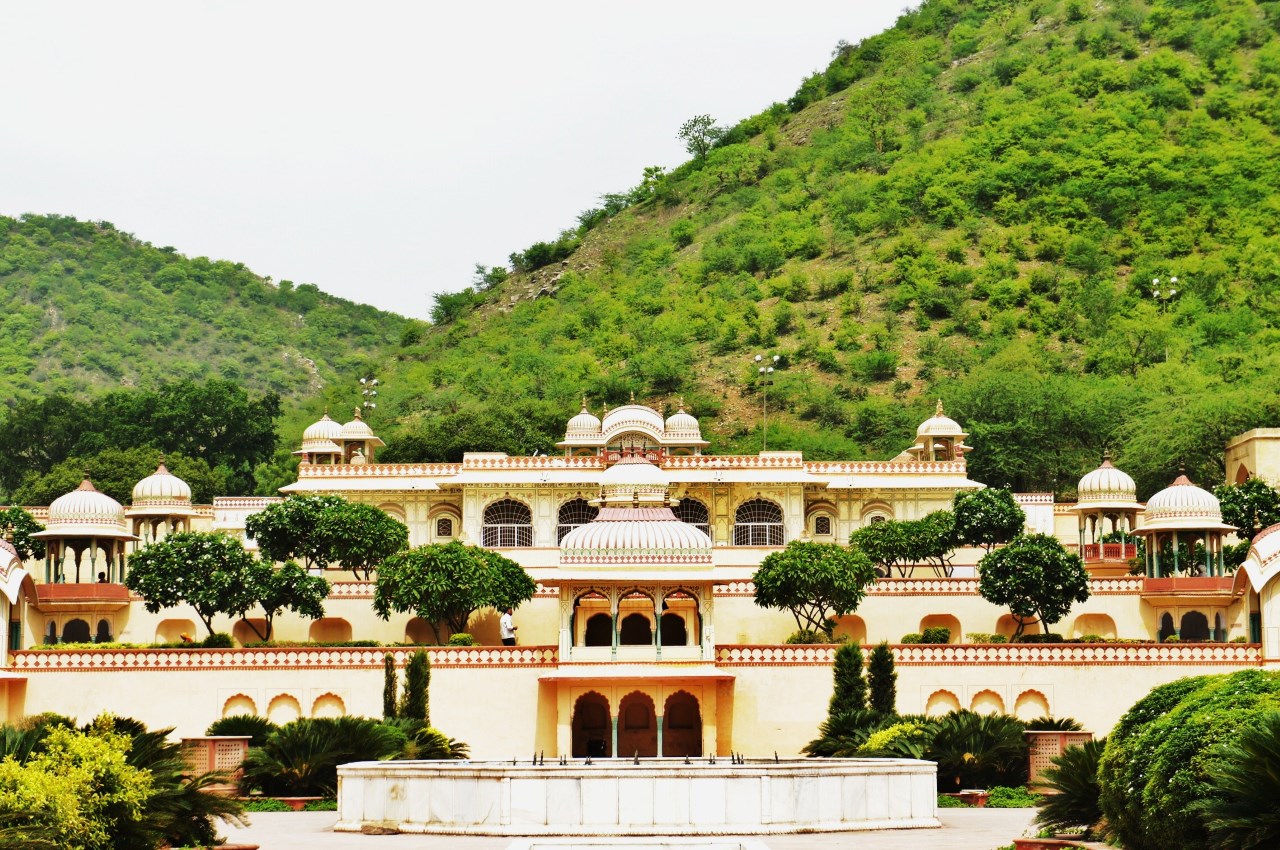
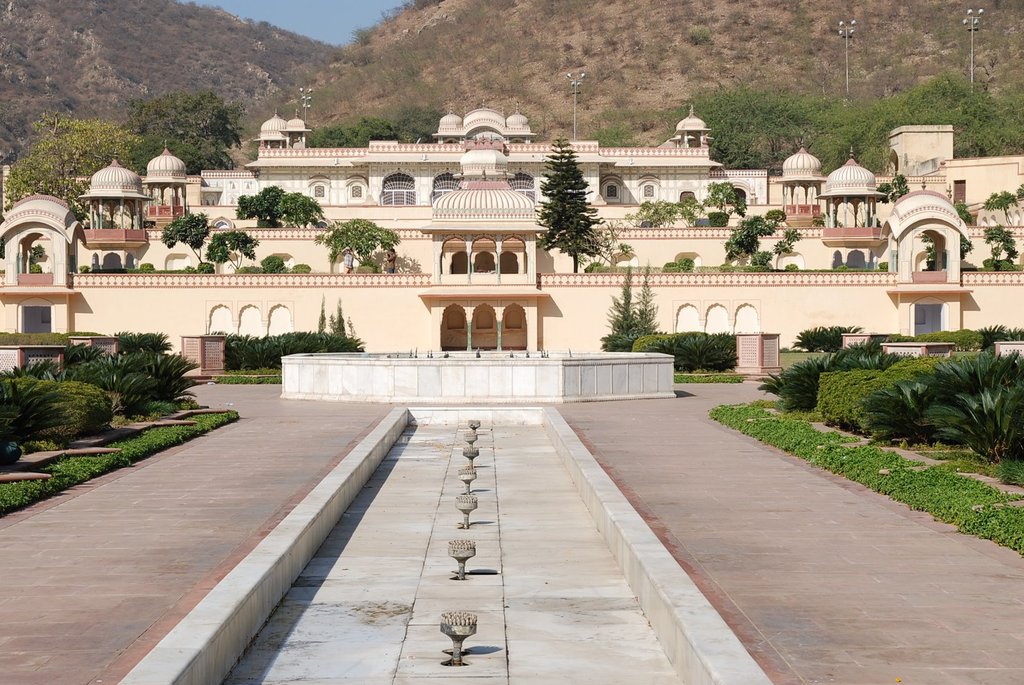
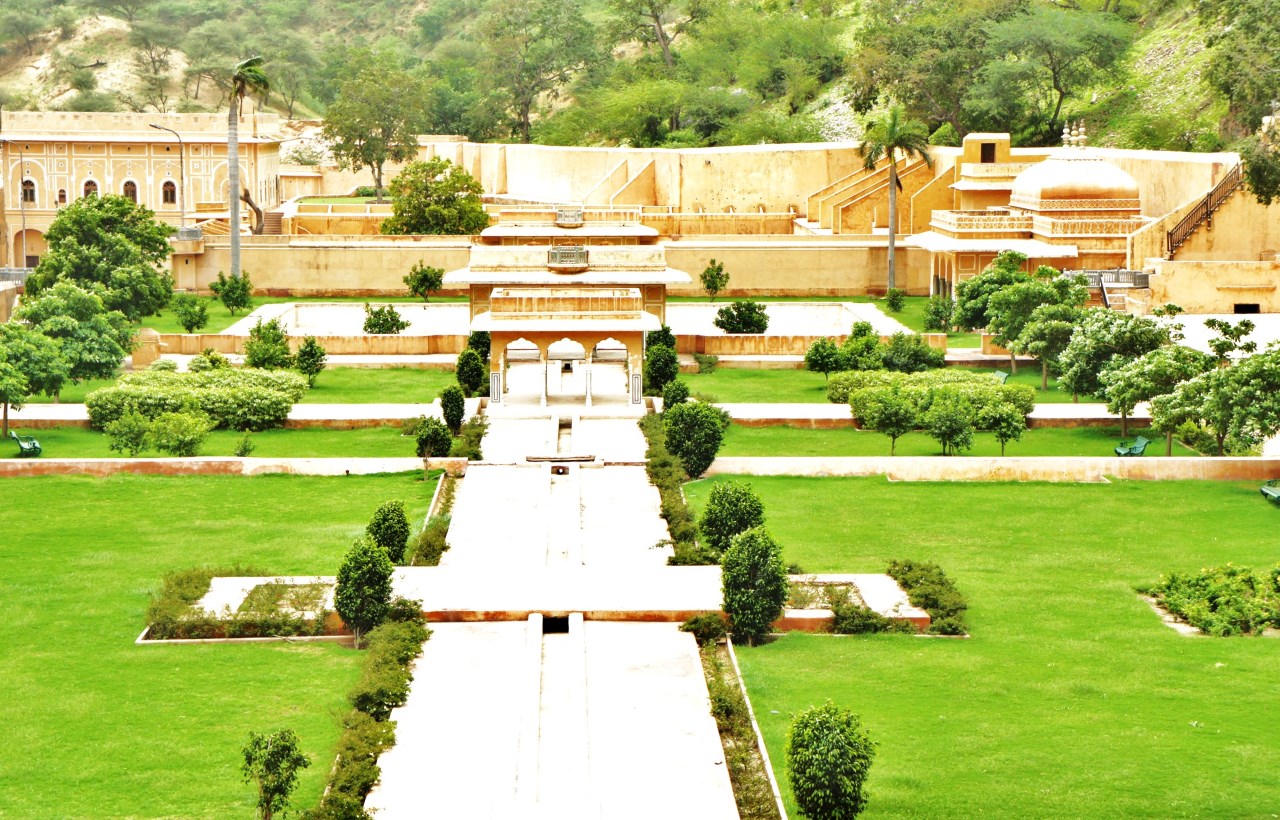
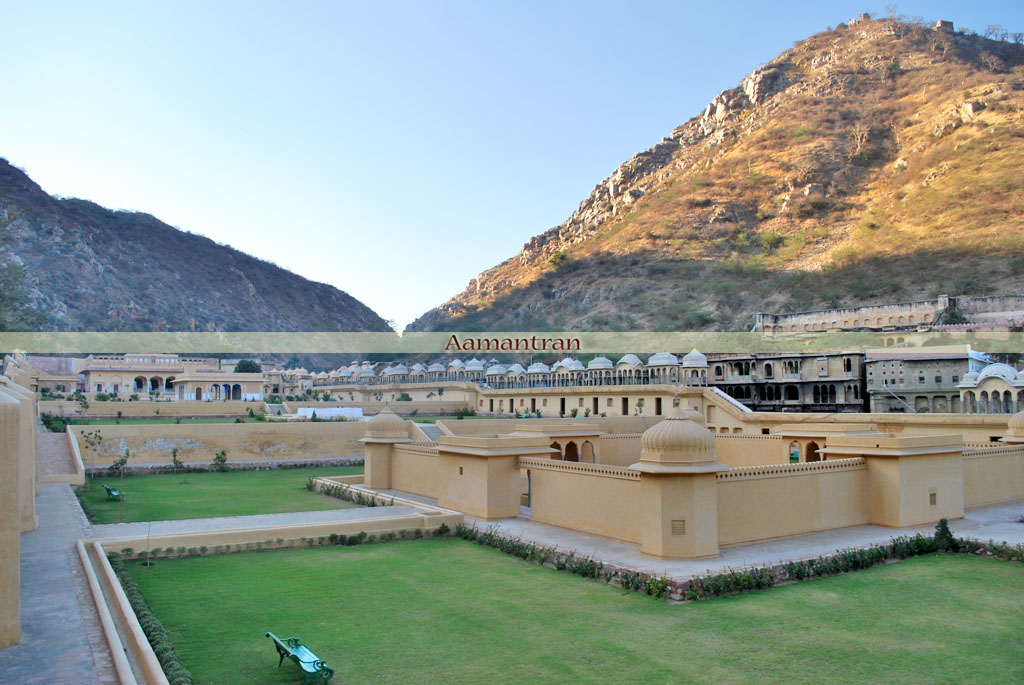
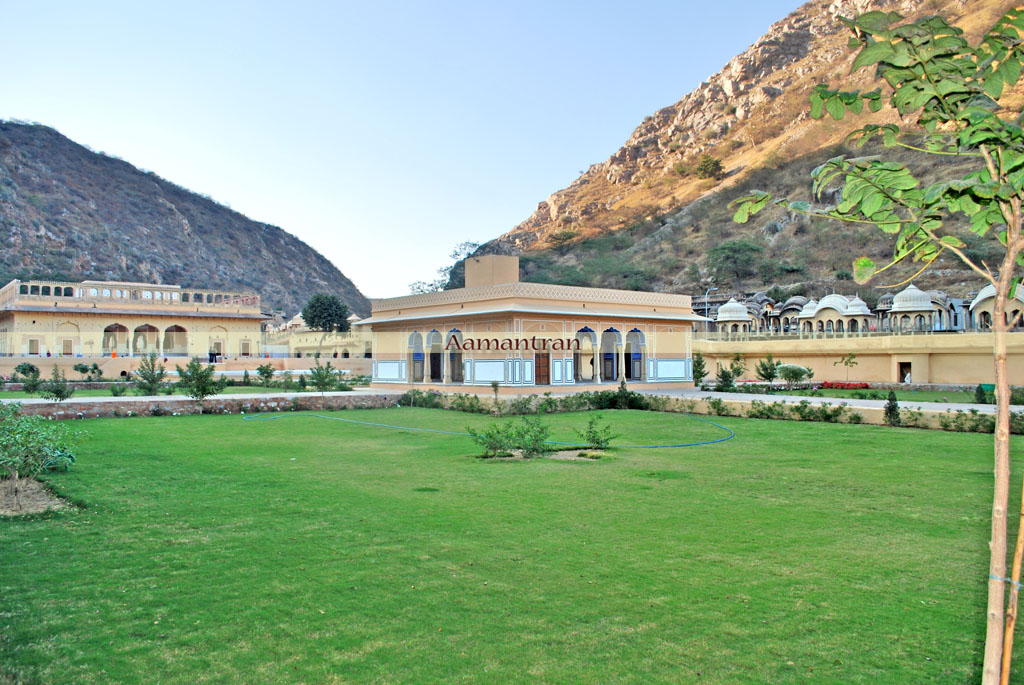
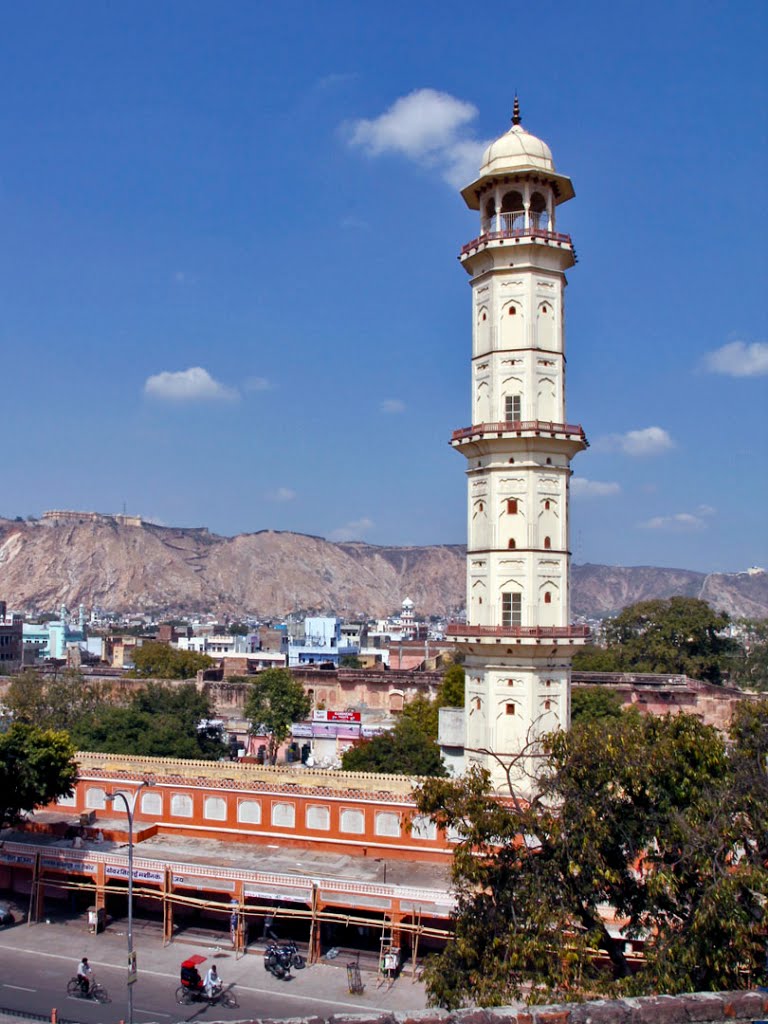
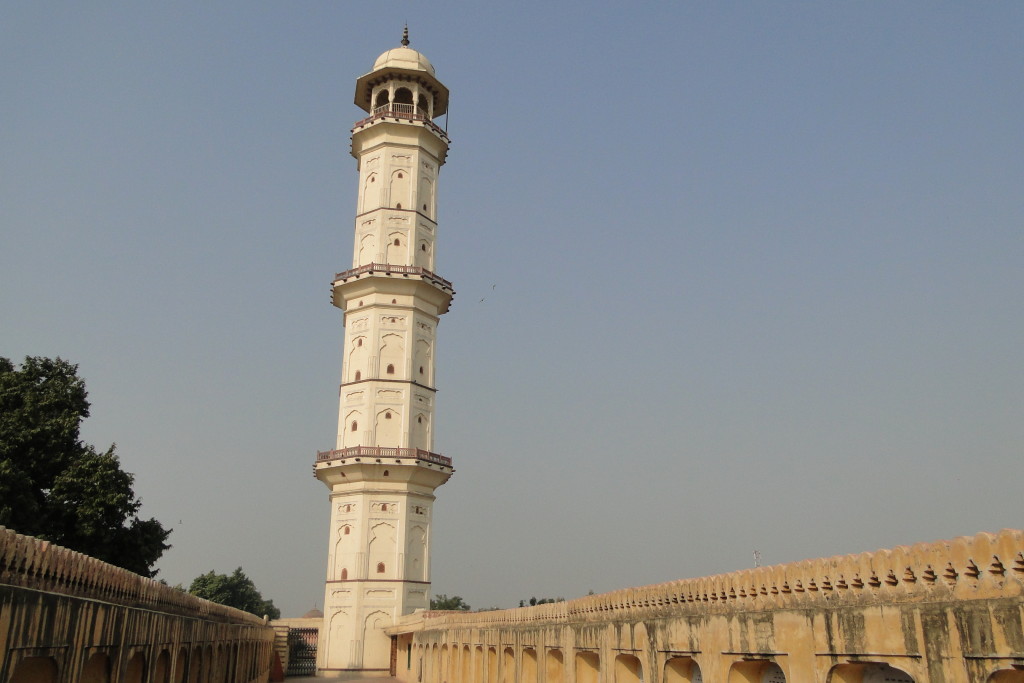
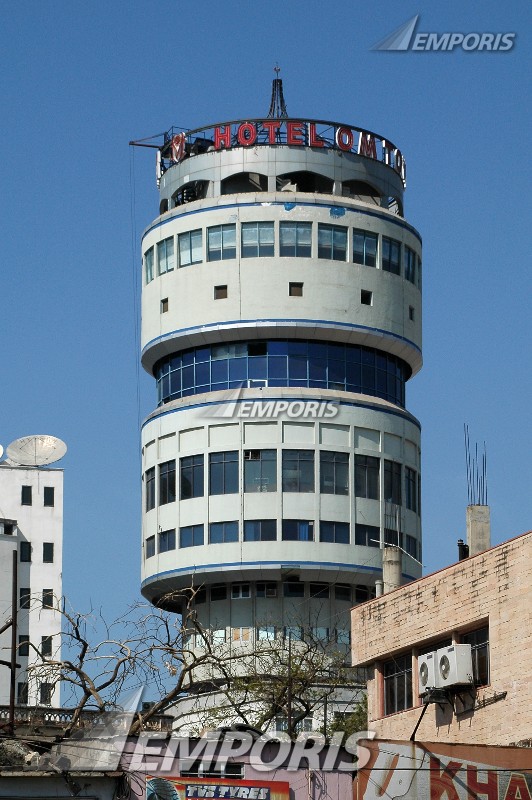
Jaipur Tourism
Area: 200.4 sq. kmalbert_hall_jaipur
Altitude: 431 meters above sea level
Climate: In Summer: 45 C (Max) - 25 C (Min)
In winter: 22 C (Max) - 8 C (Min)
Rainy Season : July to Mid Sept, and very humid (upto 90%)
Languages: Hindi, Rajasthani, English
Best Time to Visit: October to mid-March
STD Code: 0141
History Of Jaipur
A traveller's journey to the land of the maharajahs, Rajasthan, begins from the city of the maharajahs - Jaipur, the capital city of the state ofcity-palace-jaipur Rajasthan. It was back in the year 1727 when Maharaja Jai Singh, after whom the city is named, laid the foundation of Jaipur city. Known all around the world as the pink city, Jaipur forms the much popular tourist circuit of Golden Triangle along with the cities of Delhi and Agra. The old city of Jaipur is enclosed within seven gates, the most important of which are Chandpol, Jaipuri and Sanganeri. The city of Jaipur attracts a good number of both domestic and foreign travellers. Being at an easy striking distance of Delhi, Jaipur has become a major hub for tourists visiting northern India.
Sightseeing in Jaipur
Jaipur, the capital of Rajasthan, was founded by and named after Maharaja Sawai Jai singh II in 1727. It is the first planned city of India.It is located in the North-western part of India. Jaipur is one of the most beautiful cities in India and a major tourist attraction. It is also called the Pink city of India , as most of the buildings walls historical and others are built with pink stones. Jaipur is very popular for its Forts, Palaces, parks and museums. All the historical structures depicts the taste of Rajput style of architecture. Jaipur is also a shoppers
Paradise . It is also home for many local artists . Visiting Jaipur is a mermserizing experience for every visitor.
Albert Hall Jaipur
It is situated in the beautiful garden of Jaipur city, Ram Niwas Bagh. It was constructed by Maharaja Sawai Ram Singh in the year 1886under the drought relief work of Rs 4 Lacs. The design of the building was done by Sir Swinton Jaicob. Presently the hall is used for museum purpose.
City Palace Jaipur
The palace is a magnificent blend of traditional Rajasthani and Mughal architecture. The part of the Palace is still used by the royal family as a residence and the rest portion is converted into a museum. The palace consists of several structures like Badal Mahal, Shri Govind DevTemple, Mubarak Mahal, Chandra Mahal and City Palace Museum. The palace also consists of an art gallery with a superior collection of miniature paintings, carpets and royal belongings. The palace is 3.5km.from Jaipur. The best time to make a visit is from October to March.
Jantar Mantar Jaipur
Jantar Mantar a stone observatory was built by Sawai Jai Singh between 1728 and 1734. It was built to measure the local time, altitude, the declination of stars, planets and to determine eclipses. Jantar Mantar is a grand celebration of astronomical science and each instrument here serves a particular function and gives an accurate reading.
Nahargarh Fort Jaipur
Nahargarh (tiger Fort), overlooks the city of Jaipur from a sheer ridge to the north and is floodlit at night. The fort was built in 1734 by JaiSingh and extended in 1868. A 9 km road runs up through the hills from Jaipur, and Hawa_Mahal__Jaipur_Indiathe fort can be reached along a zigzagging 2km path which starts from the north - west of the old city. The glorious view fully justify the effort. Inside the fort you can visit the Madhavendra Bhawan housing the nine apartments of Maharaja Ram Singh's nine wives. The rooms are linked by a maze of corridors and retain some delicate frescoes, as well as toilets and kitchen hearths.
Amber Fort Jaipur
Amber fort lies at a distance of 11km from Jaipur is a fascinating blend of Hindu and Mughal architecture. Raja Man Singh built it in the16th century. The fort crowns on top of the hillside, the walls and ceiling of the fort are engrave with ravishing glass mirrors that helps in splashing the sun rays all over the premises. Amber is also known for the marvelous Sheesh Mahal, Jai Mandir, Diwan-i-Aam, Sikh Niwas and the small Kali.
Hawa Mahal Jaipur
Sawai Pratap Singh built the Palace of Winds in 1799. Lal Chand Ustad designed this impressive multi layered five-storey structure. It provides some excellent views of the colorful city. The Hawa Mahal was designed for the ladies of the royal house to watch the enchanting life on the street without being observed. Visit Timings : 9hrs-17hrs.
Jal Mahal Jaipur
Sawai Pratap Singh built the Mahal in 1799 A.D for royal duck shooting parties. This red sandstone palace is located 6.5 kms from Jaipur on the road to Amber is one of the delightful site at the center of the Man Sagar Lake. First four floors of the structure are submerged in water, only the top floor remains outside. It is also a home to large number of migratory birds arrive at the lake during winters.
Rambagh Palace Jaipur
Rambagh Palace Jaipur is one of the finest hotels in Jaipur that was built as hunting lodge in 1835. The hotel Rambagh Palace belongs to Taj group of hotels and provides world class hospitality to its guests. The hotel Rambagh Palace Jaipur is located about 10 kilometres from the airport and just four kilometres from the railway station. The hotel Rambagh Palace is quiet close to main shopping area of Jaipur.
Birla Planetarium Jaipur
Equipped with modern computerized projection system, the planetarium offers unique audio-visual educational entertainment. A Science Museum is also a part of this one of the most modern planetarium in India.
Jaigarh Fort Jaipur
Jaigarh, or the Fort of Victory, is a rugged fort built in 1726. The world's largest cannon on wheels is preserved here. The spacious parkotas (wallls) watch tower and gateways of Jaigarh are main source of attraction. jaigarh-fort-jaipurThe fort slso houses a museum, which displays a collection of weapons and cannons, used by the Rajput rulers. There is an excellent view of the Amer Palace from the fort. It is
11km. from Jaipur and visiting timings are 0900-1630hrs.
Maharani ki Chhatri Jaipur
Moosi Maharani ki Chhatri is the royal cenotaph of Maharaja Bakhtawar Singh and his Queen Rani Moosi.
The upper story is build up of marble stones and it houses rounded roofs and striking bends. Highly ornamented interiors with marvelous wall paintings are worn out by lack of proper maintenance. Besides an architectural grandeur, this chhatri is placed in a picturesque location that is full of lush foliage and thriving flowers.
Weather of Jaipur can be termed as warm, being situated in the desert area. The three main seasons, summer, monsoon and winter respectively, influence the city of Jaipur. Situated at an altitude of 431m above sea level, Jaipur has extreme type of Climate. Summers are extremely hot with shining sun on the head whereas winters are comparatively cool.The climate and weather of Jaipur is usually hot. The Summer season persists from Mid-March to June reaching to the maximum temperature of 48o C. The showers of Monsoons come usually in the month of July preceded by dust and thunderstorms. The city doesn't receive much rain. During the post-monsoon season in September,Jaipur gets hot spell once again. In winters, the city of Jaipur observes bright and pleasant sunny days, though the temperature can reach a low of around4o C during the nights. Frequent problem in winter season is fog that covers the whole city in the evening. Winters dominates
the land of Jaipur from the month of October till the month of March. The best time to visit Jaipur is during winters, when the weather is pleasant and very favorable to travel around the royal city of Jaipur.
Jaipur Bus Stand
Jaipur bus stand is located in center part of Jaipur and also 1 KM away from Jaipur railway station and 14 KM from Jaipur Airport . The general & luxury bus services are run by Rajasthan State Road Transportation Corp. , these buses run on regular interval depending upon the bus route.
Useful Telephone Numbers of Jaipur Rajasthan State Road Transportaion Corporation :
1) RSRTC (Rajasthan State Road Transportation Corporatioln) Control Room Phone No. : 5116024 / 237043 / 2205621
2) Jaipur Narain Singh Circle Bus Stand Phone No. : 5120117
Jaipur Railway Station
The central railway station that is Jaipur railway station is located in the Bani Park region. The Jaipur Railway Station provides for the main entry into the city. Besides Jaipur Railway Station some other railway stations in the city are Dahar Ka Balaji Railway Station near Jhotwara,Bais Godam Railway Station near Civil Lines, Durgapura Railway Station near Durgapura in south Jaipur and Gandhinagar Railway Station in the Gandhi Nagar region.
Jaipur Railway Stations Useful Telephone Numbers :
Railway Enquiry No. : 131
Station Suptd. of Durgapura Railway Station : 2721787
Railway Record Enquiry No. : 132
Station Suptd. of Gandhi Nagar Railway Station : 2510416
Computerised Reservation No. (PNR Enquiry) : 135
Jaipur Railway Station Suptd. No. : 2201553
Jaipur Airport
Jaipur Airport is the only international airport in the state of Rajasthan. Jaipur Airport is located near the town of Sanganer in Rajasthan.This International Airport is at a comfortable distance of 13 kms from the city of Jaipur. The new domestic terminal building at Jaipur Airport was inaugurated on 1st July, 2009. The new terminal has an area of 22,950 sqm, is made of glass and steel structure having modern passenger friendly facilities such as central heating system , central air conditioning, inline x-ray baggage inspection system integrated with the departure conveyor system, inclined arrival baggage claim carousals, escalators , public address system, Flight information display system (FIDS), CCTV for surveillance, Airport check-in counters with Common Use Terminal Equipment (CUTE), car parking, etc.
Temples in Jaipur
Birla Temple
Birla Temple of Jaipur is a major tourist attraction of Rajasthan. Birla Mandir is also known as Laxmi Narayan Temple. It is located in the south of Jaipur, situated just below the famous Moti Dungri Fort. Birla Mandir, in pure white marble, dominates the skyline of southern part of Jaipur. The enormous temple was built during the year 1988, by Birla Group of Industries.. The Temple is dedicated to Lord Vishnu
(Narayan), the preserver and his consort Lakshmi, the Goddess of wealth. Due to this reason, Birla Temple is also known as Laxmi Narayan Temple.
Galtaji Temple
Galtaji Temple in Jaipur is a holy pilgrimage of the Hindus located 10 kms away from Jaipur in Rajasthan. The vast complex of Galta Ji has several temples in it. The Temple of Galtaji is famous for its natural water. The water of these springs is accumulated in the tanks or 'kunds'.In all, there are seven tanks, holiest being the Galta Kund, which never goes dry. It is considered auspicious to take bath in the holy waters of Galtaji. Thousands of people come every year to take a dip in the tanks to rinse out their sins.
Moti Dungri
Moti Dungri Temple is a major tourist attraction in Jaipur. It is dedicated to Lord Ganesha. The term Moti Dungri means Hill of Pearls or Pearl Hill. The hill is occupied by a palace and a temple. Close to the Temple, there a beautiful Palace on the hill, this is known as Moti Dungri Palace. The Palace is an imitation of a Scottish Castle. In the ancient times, it was occupied by Maharaja Madho Singh's son.
Govind Dev Ji Temple
Govind Dev Ji Temple is one amongst the major tourist attractions of Jaipur. The Temple represents the royal past of Jaipur. The Temple is dedicated to Govind Dev Ji (Other name of Lord Krishna). Govind Devji Temple of Jaipur is situated in the City Palace complex, between the Chandra Mahal and Badal Mahal. According to a legend, Govind Dev Ji appeared in the dream of Raja Sawai Jai Singh and asked him to
bring his idol from Vrindavan to Jaipur. As a consequence, Raja Sawai Jai Singh brought the idol and placed in the City Palace complex of Jaipur. After the sad demise of Jai Singh, many successors acquired the throne, but Raja Man Singh took the initiative to build the temple in1890.
Jaipur Monuments
Amber Fort
Amber Fort is one of the major tourist attractions of Jaipur, the capital of Rajasthan. Know more about Amber/Amer Fort of India. TheKachchawahas ruled from Amber, 11 km from Jaipur, for seven centuries. The Amber Fort looks stunning, all-built in white marble and red sandstone. In 1592, construction of the Fort was started by Raja Man Singh I. However, the Amber Fort took its present form during the reign of Raja Jai Singh. The interior of the Fort provides a soothing and warm ambience, which is least expected from its outer appearance.The marvelous decoration of the Amer Fort is influenced by both, the Hindu and Muslim manner of ornamentation. Exquisite paintings of hunting scenes on the walls depict the temperament of the Rajputs, who were adventurous, revolutionary and self-indulgent.The Fort is divided into four subparts. Kali Temple, which is also known as Shila Devi Temple, forms the part of the Fort. It is renowned for its glorious past, huge silver lions and silver doors. The Hall of Public Audiences, Diwan-I-Aam is a pavilion with double row of columns.Ganesh Pol, another feature of the Fort, directs the way to the inhabited apartments of the King. The Hall of Victory, Jai Mandir has a stunning ceiling comprised of mirror work and an inlaid panel.
Hawa MahalHawa Mahal is a major tourist attraction of Jaipur, the capital Rajasthan. Hawa Mahal is also known as Palace of Winds. Hawa Mahal is a major landmark and a famous tourist attraction of Jaipur. The splendid Rajputana architecture of Hawa Mahal, still speaks the glory of the royal family. Hawa Mahal was built by Maharaja Sawai Pratap Singh in 1799. The chief materials used in the structure are red and pink sandstone the unique shape of the building, unmatched by any of the palaces of Jaipur. A total of 953 small windows face the streets, adorned by arched roofs. The screened windows of Hawa Mahal filter sunlight and spread it all over the floor, providing a spectacular sight for the onlooker. The windows also allow circulation of air in a way that keeps the floors cool even in the oppressive heat of Rajasthan.
Jaigarh Fort
Jaigarh Fort forms a major tourist attraction of Jaipur. Jaigarh fort is 15 kms from Jaipur, 400 ft above the Amber Fort. This Fort is on top of the hill, while Amber Fort is at the bottom. Many people regard the two as one complex however both of them are well connected with well guarded passages. The fort served as the treasury of the Kachcawas. It is a remarkable feat of military architecture in a fine state of preservation, with water reservoirs, residential areas, a puppet theatre and world largest wheeled cannon, Jaya Vana . he Fort has many structures of medieval India, which are worth exploring. It has several palaces, granary, well-planned cannon foundry, several temples and a tall tower. Jaigarh Fort used to serve as the center of artillery production for the Rajputs.Jaigarh Fort has many wide water channels, which were a part of a rainwater harvesting system. The Fort also has 3 underground tanks, the largest one of which can store 60, 00,000 gallons of water.
Statue Circle
Statue Circle forms a major landmark of Jaipur. It is situated on a busy crossing of the city. Statue Circle has got its name from the statue, which it portrays. Statue Circle comprises the statue of King Sawai Jai Singh, the founder of Jaipur. In the statue, Raja Jai Singh is holding an astrological diagram which shows his love for astrology. The memorial is actually made in the loving memory of the generous ruler, builder and futurist.
Jantar Mantar
Jantar Mantar is the largest stone observatory in the World and this feature makes it, a special destination for a traveler. Jantar Mantar is one of the five astronomical observatories built by Maharaja Jai Singh, the founder of Jaipur. Initially Jantar Mantar was named as Yantra Mantra, which means instruments and formulae, but due to mispronunciation of the term, it is changed to the recognized name. Jantar Mantar has a remarkable collection of architectural astronomical instruments. It portrays noteworthy attempt of the ancestors, who were interested in astronomy and knowledge of celestial bodies.
City Palace
Situated in the heart of Jaipur, the City Palace covers one-seventh of the town, and the plan of the palace is similar to that of the city. The palace has a high wall or sarahad that surrounds it on all sides. City Palace forms one of the most famous tourist attractions and a major landmark in Jaipur. The beautiful palace was built by Maharaja Sawai Jai Singh during his reign. Among the various forts and palaces of Jaipur, City Palace stands apart, with its outstanding art and architecture. City Palace complex covers a huge area, which is divided into a series of gardens, courtyards and buildings. Initially, Raja Jai Singh built the outer wall occupying a huge area. A part of the exquisite Palace still makes home for the former Maharaja/ King.
Gardens in Jaipur
Kanak Vrindavan Valley
Kanak Vrindavan is situated in the bottom of Nahargarh hills adjoining the exAmber Fort, on Jaipur-Amber Road. According to past records, the beautiful green valley was labeled as Kanak Vrindavan Valley by Maharaja Sawai Jai Singh, almost 280-years ago. Kanak Valley is also believed to be the blessed place where holy water from several rivers was gathered to carry out the Ashwamedh Yajna. Govind Deoji Temple, with its beautiful and delicate carvings, spreads a holy aura of spirituality all over the valley.
Sisodia Rani Ka Bagh
Sisodia Rani Ka Bagh is a beautiful garden, located at a distance of 10 kms from Jaipur, on Jaipur-Agra Highway. Sisodia Bagh gets a prime attraction in the charming city of Jaipur. The Garden appeals more to the beholder, since it stands as a symbol of love. In 1728, Sisodia Rani Garden was built by Maharaja Sawai Jai Singh, with an intention to gift the garden, to his Sisodia Queen from Udaipur.
Vidyadhar Garden
Vidyadhar Garden is a beautiful garden that was derived by the Rajputs of Jaipur from the Mughals' definition of Garden. Vidhyadhar Ka Bagh was made in order to bring a sense of relief in the scorched scenery of the desert land. The Garden is situated at a distance of 8 km in the east of Jaipur, Vidhyadhar Gardens is the only well-planned garden in the Majestic city of Jaipur, Rajasthan. Vidyadhar Garden was built in the memory of Vidyadhar Bhattacharya, the chief architect and the city planner of Jaipur. The Garden has been designed as per the rules and edicts of Shilpa Shastra, the ancient Indian line of architecture, just as Vidyadhar did while planning Jaipur.
http://travelinformationindia.blogspot.com.es/2010/12/jaiput-tourism.html
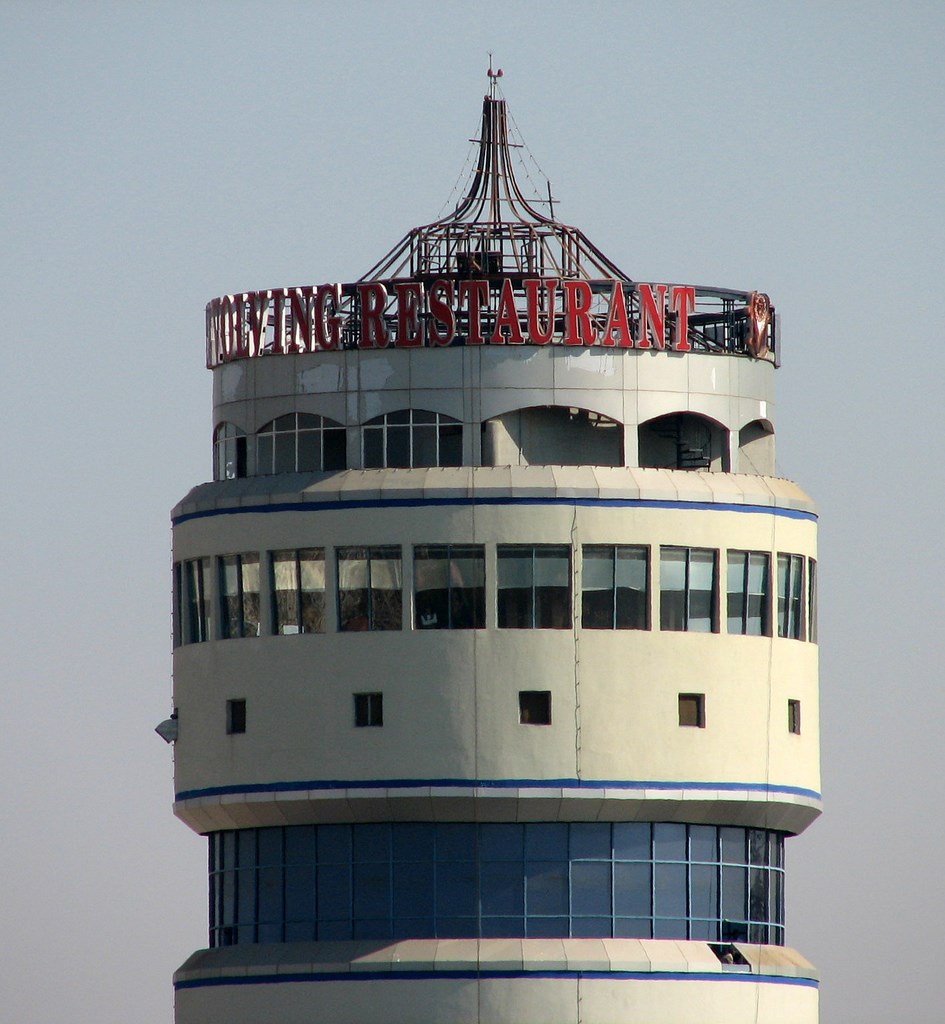
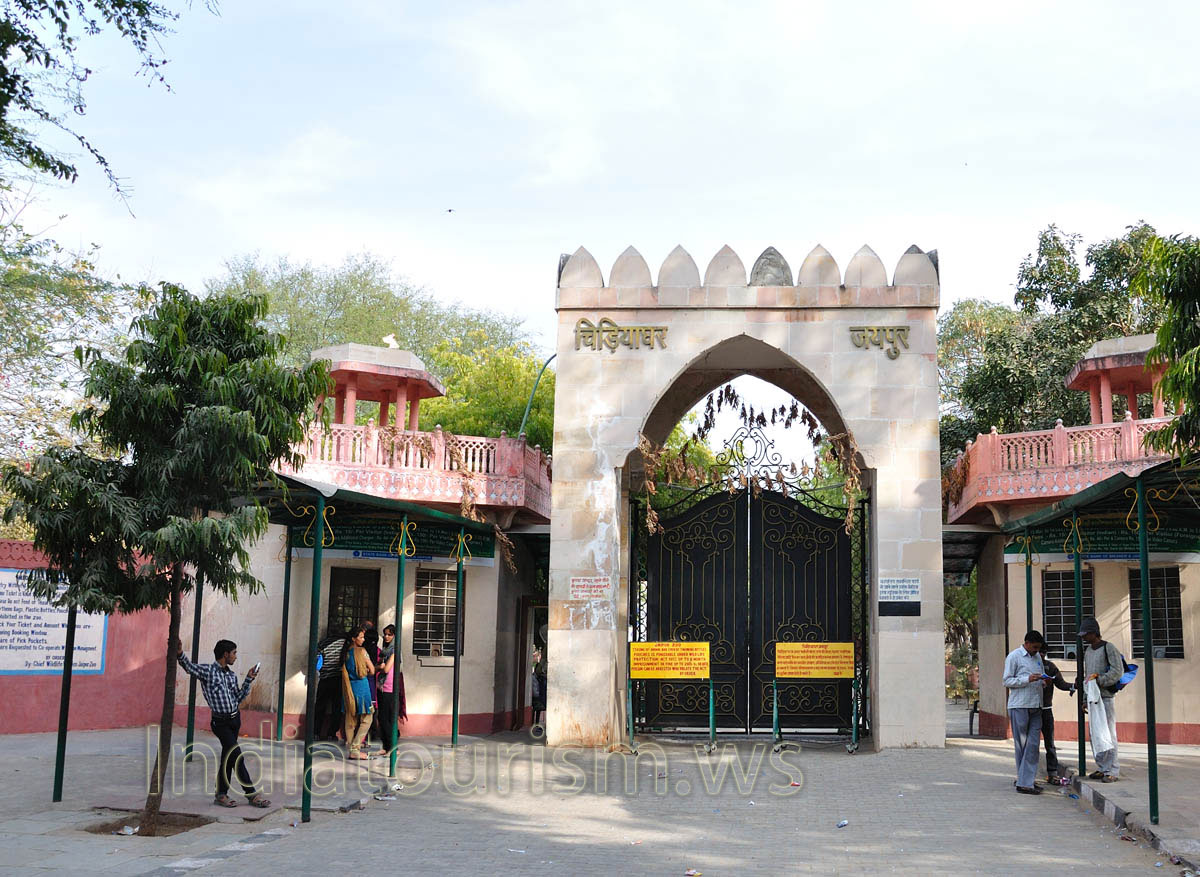
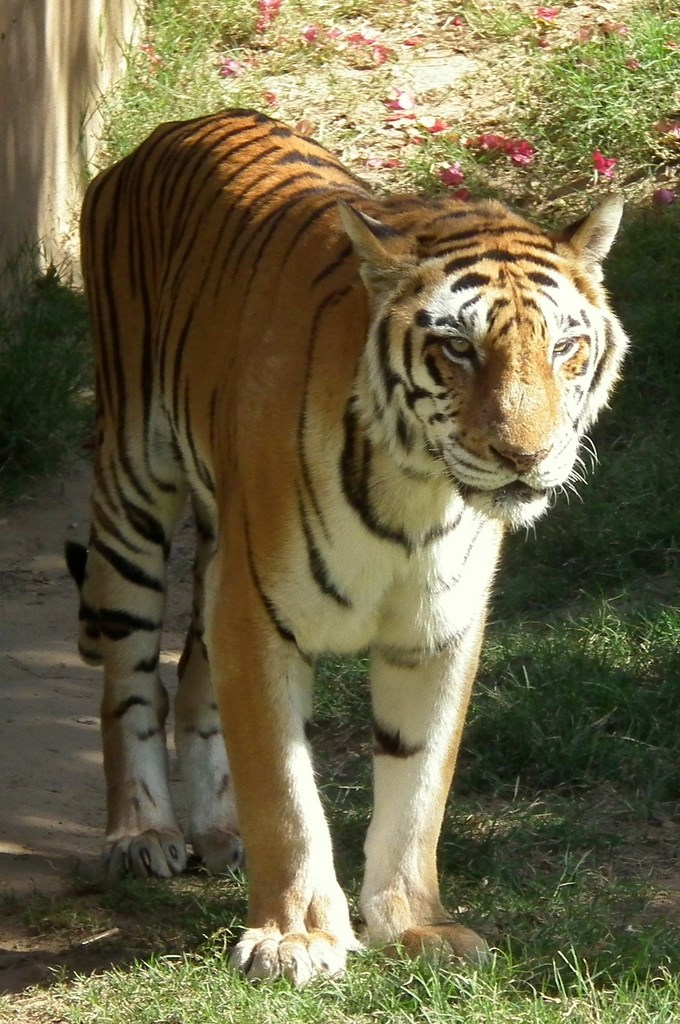
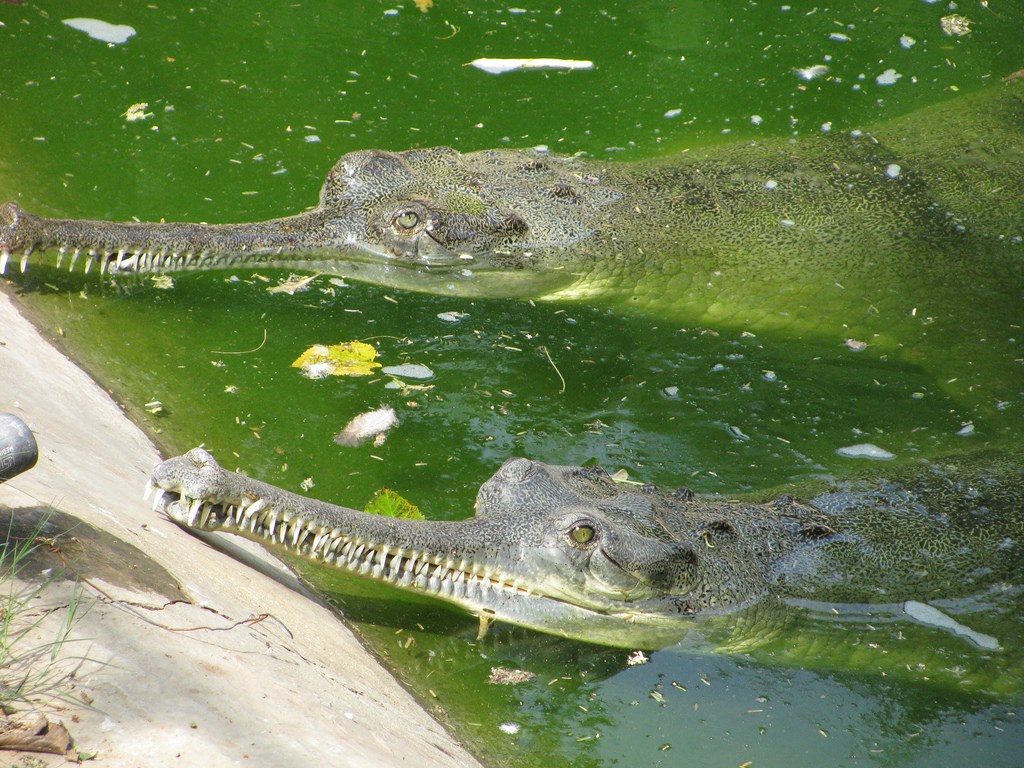
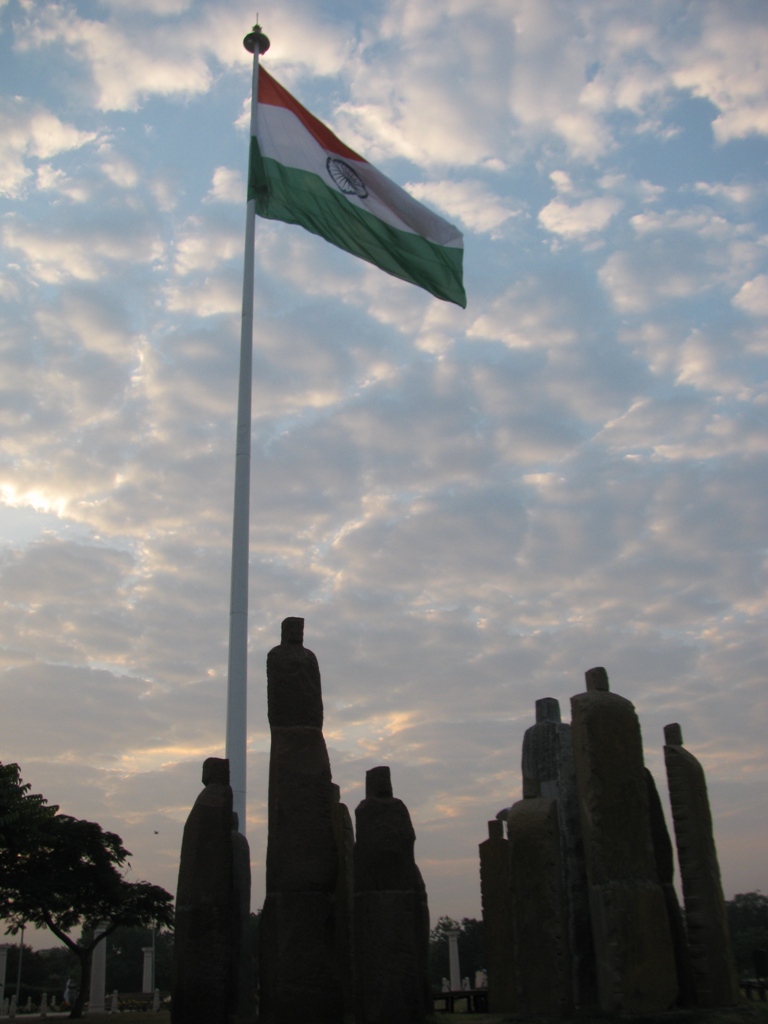
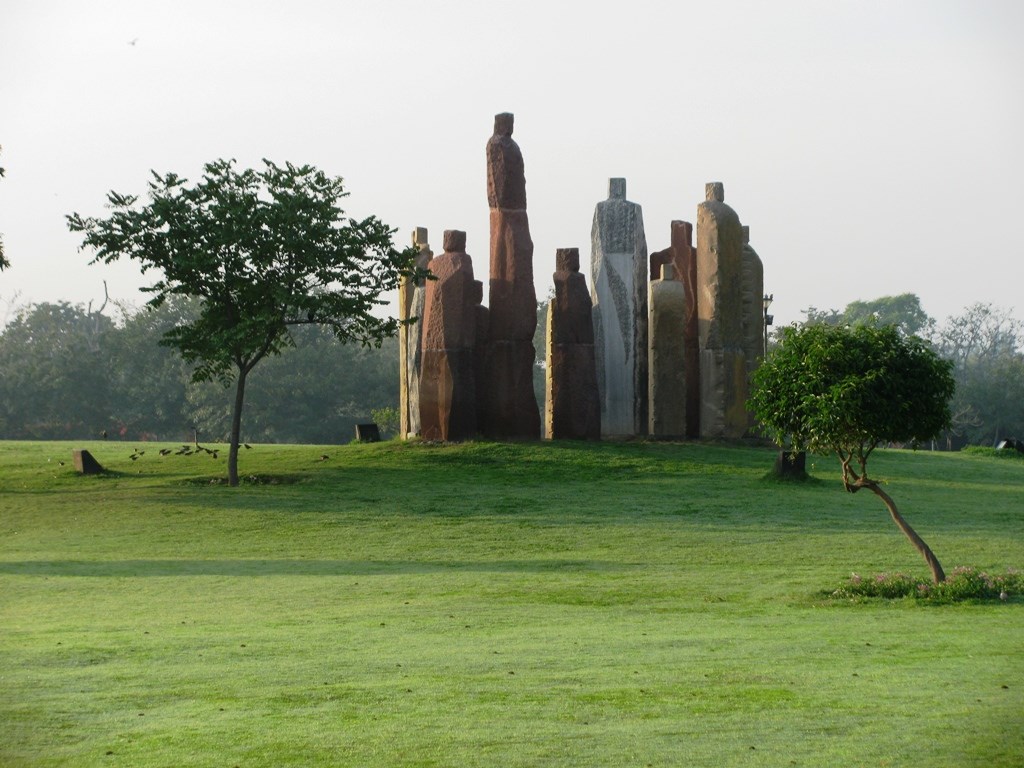
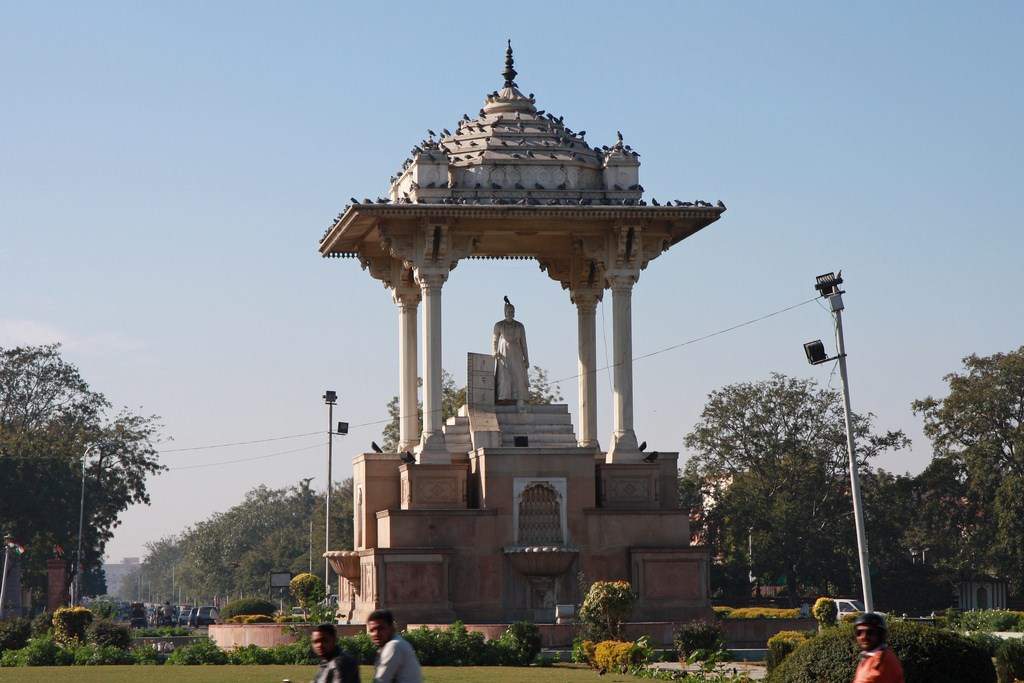
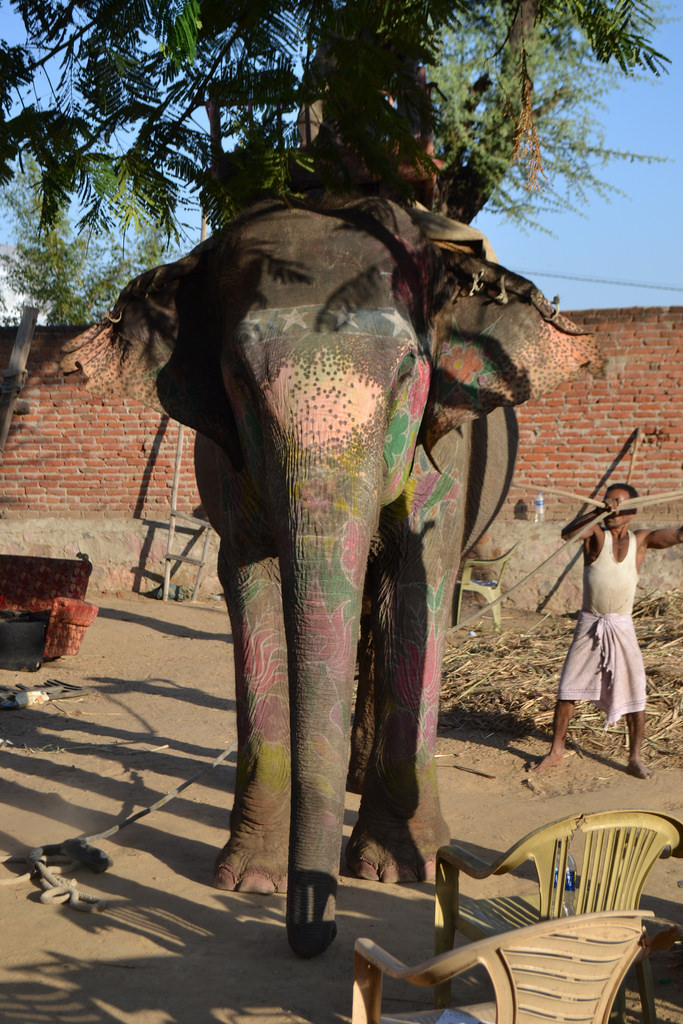
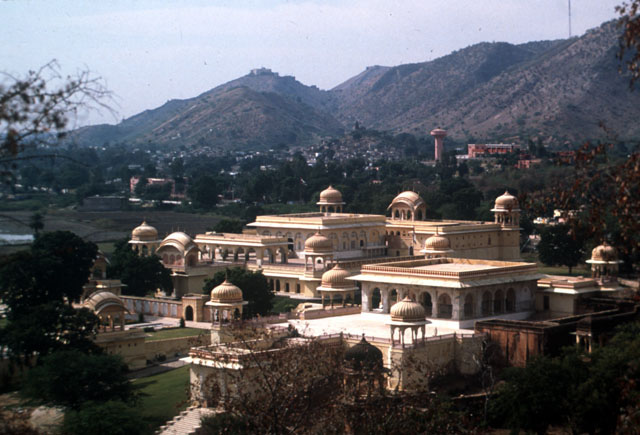
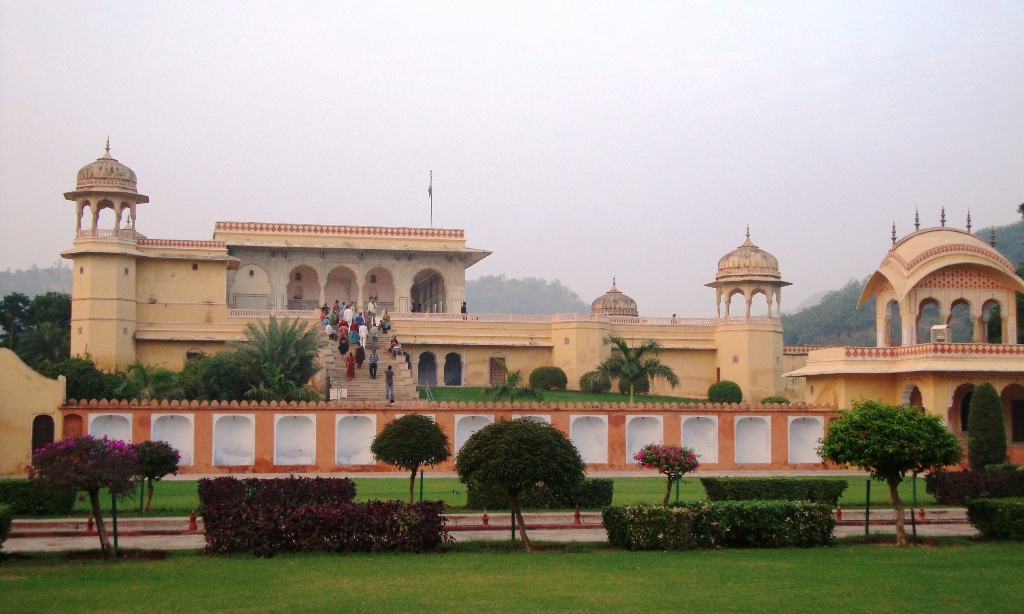
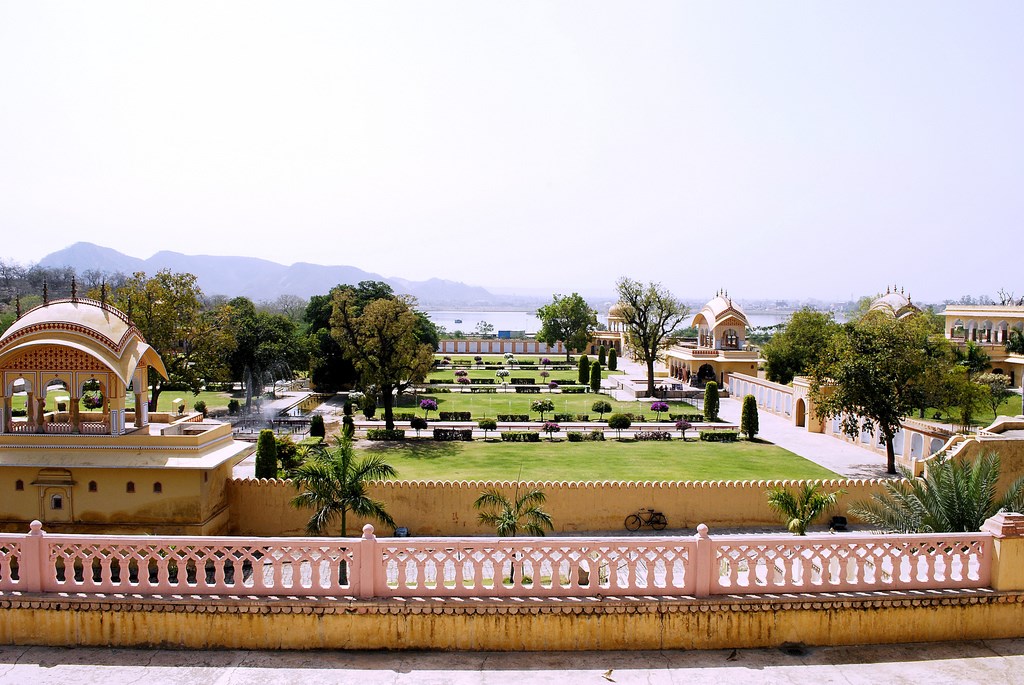
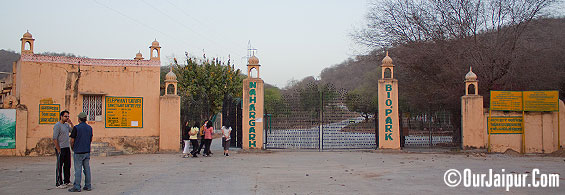
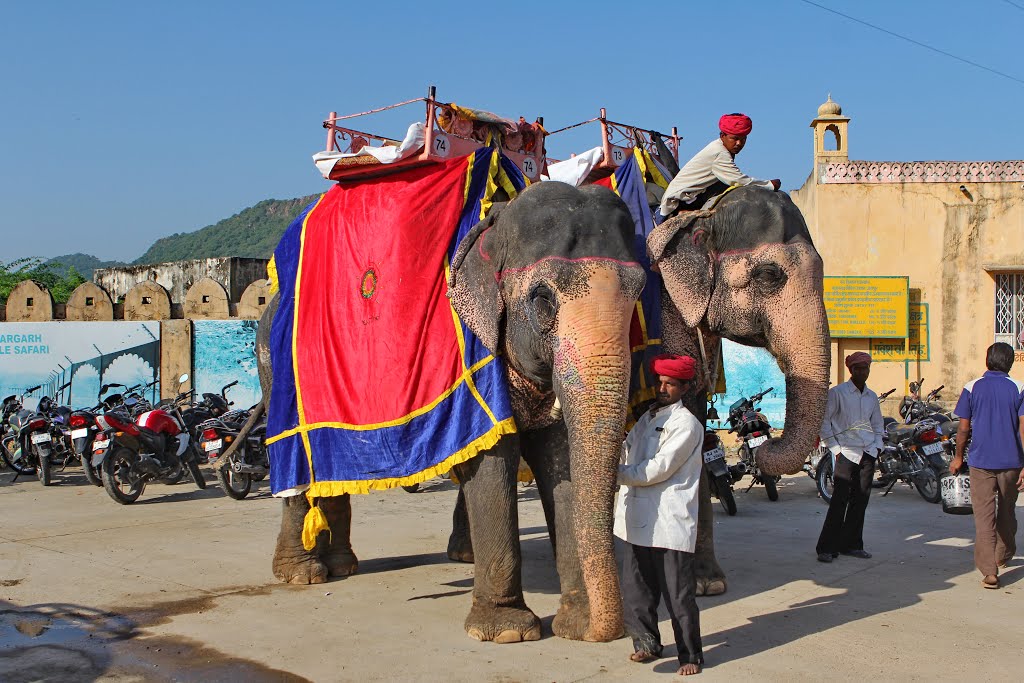
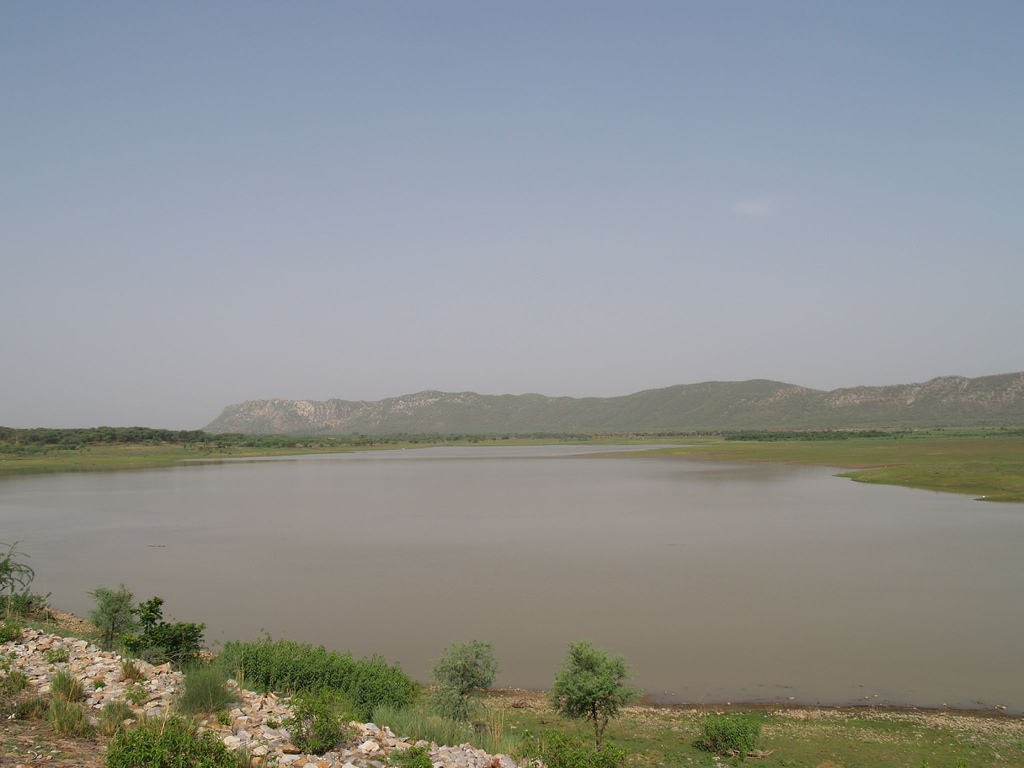
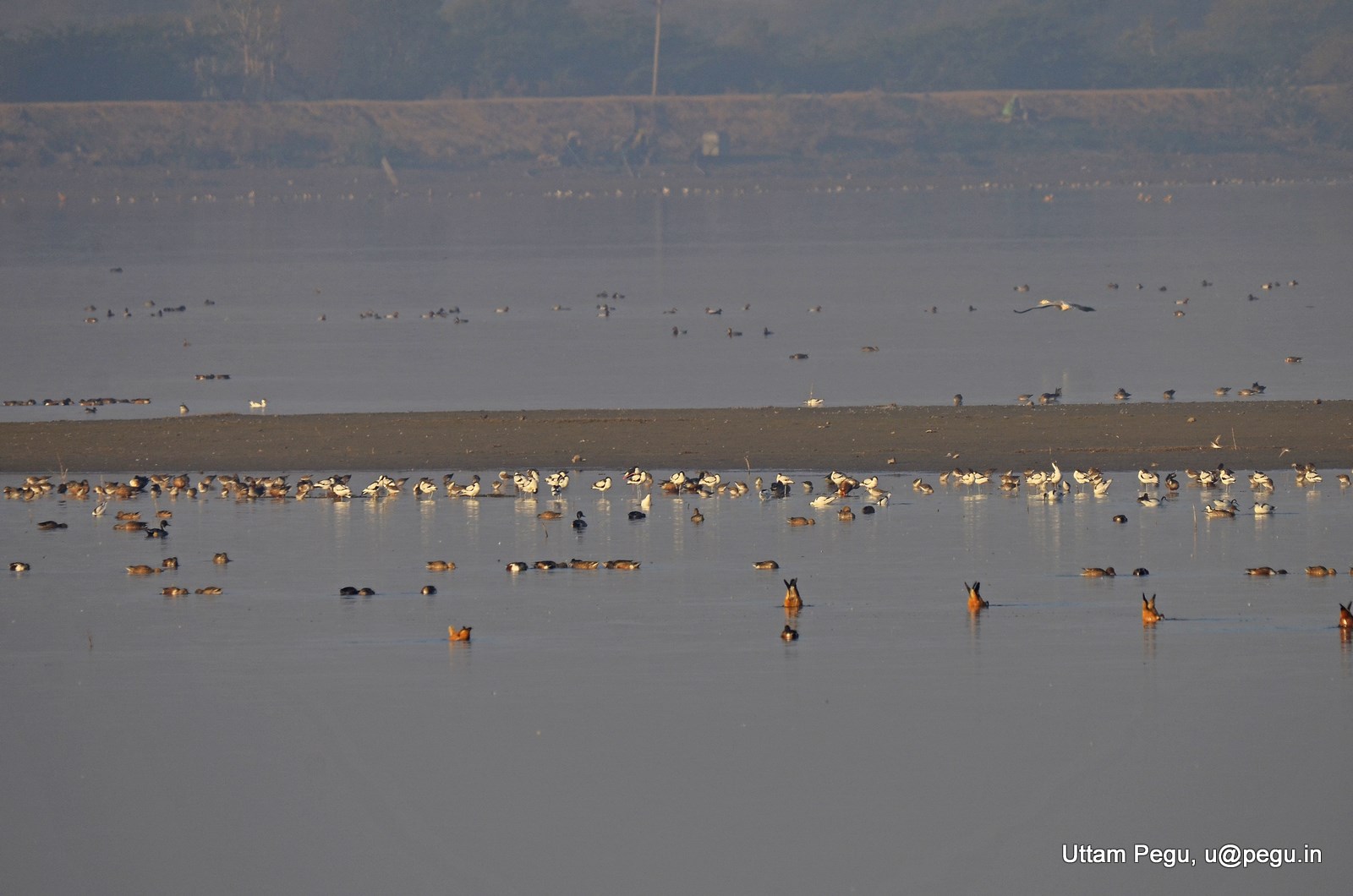
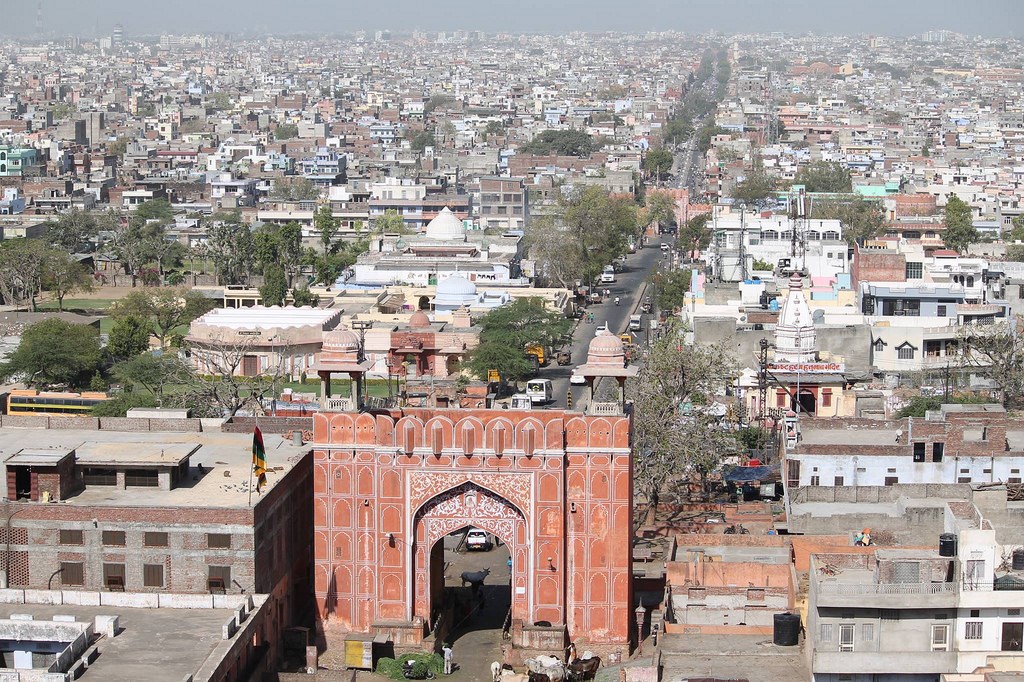
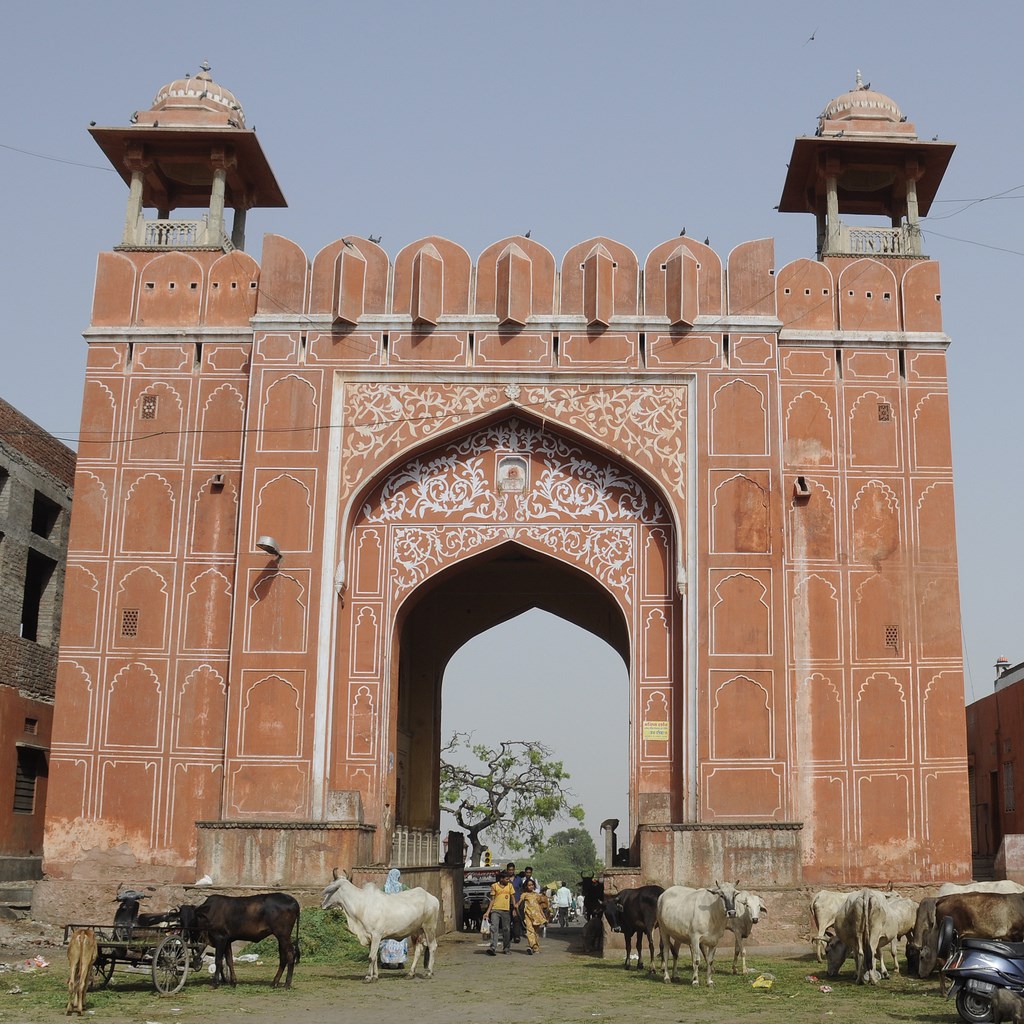
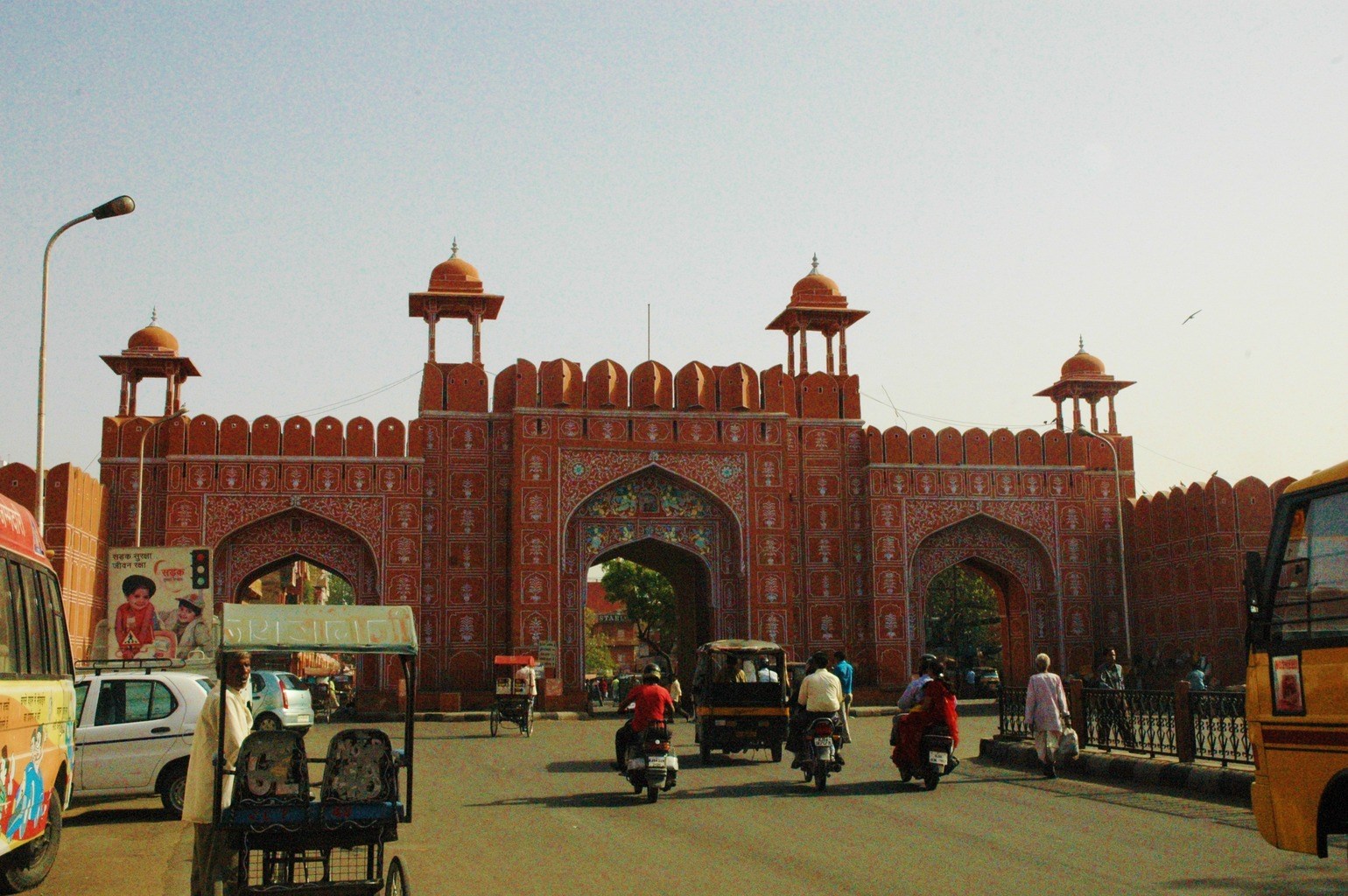
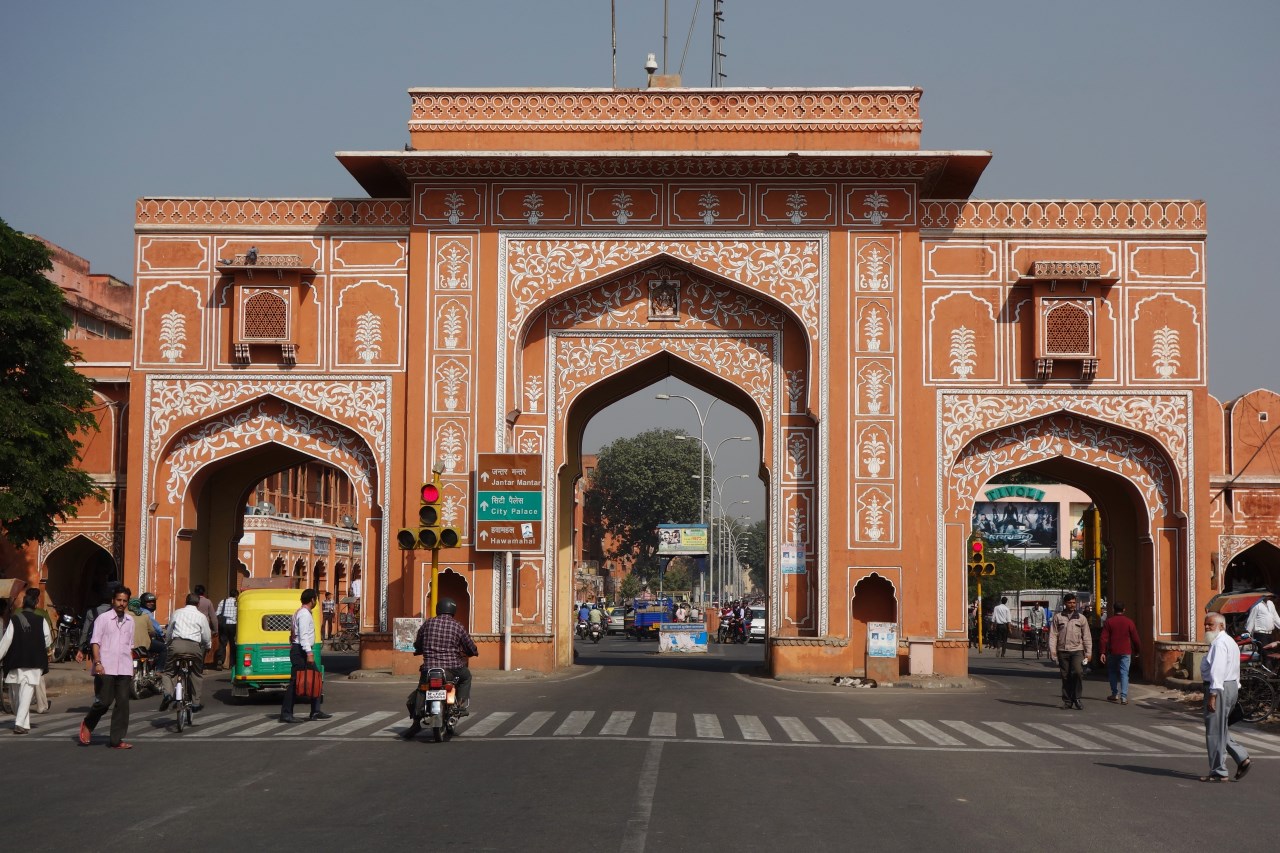
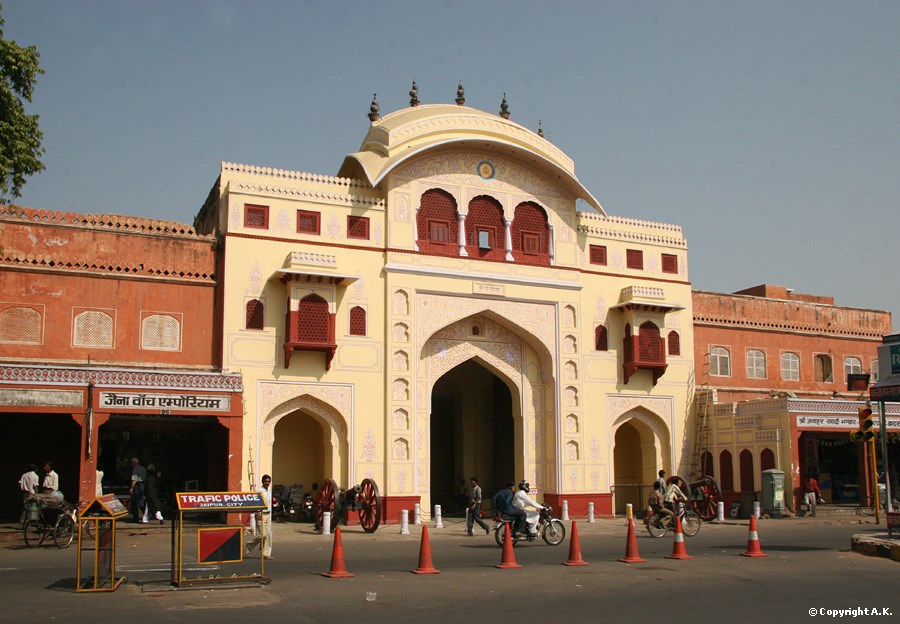
Weekend Sightseeing Tour’s
Volunteering With India arrange Sightseeing Tour’s on Weekend’s in Jaipur for Volunteers. On Our Weekend Sightseeing Tour’s you will visit Wind Palace, City Palace, Amber Fort, Nahargarh Fort, Jaigarh Fort & Water Palace, Birla Temple, Monkey Temple, Monkey Palace, Albert Museum, Bollywood Movie Show at Rajmandir Cinema, Amber Sound & Light Show and Chokhi Dhani Resort. The Sightseeing Tours are arranged according to the duration of your volunteering program. Rajasthan attracts the largest number of tourists every year; 650,000 national and 175,000 international tourists are said to visit the state every year. Tourism in the state of Rajasthan is generally monument-oriented, particularly in Jaipur.
Wind Palace
Wind Palace was built in 1799 by Maharaja Sawai Pratap Singh, and designed by Lal Chand in the form of the crown of Krishna, the Hindu god. Built of red and pink sandstone, the palace issituated on the main thoroughfare in the heart of Jaipur business centre. Hawa Mahal has 953 small windows called jharokhas. The original intention of the lattice was to allow royal ladies to observe everyday life in the street below without being seen, since they have to be in strict purdah (face cover).
Lal Chand was the architect of this unique structure; he also designed the plans for the city of Jaipur, who, at that time, was considered to be one of the best-organized cities in India. Built in red and pink colored sand stone, in keeping with the decor of the other monuments in the city, its color is a full testimony to the epithet of Pink City given to Jaipur.
The entry to the Hawa Mahal from the city palace side is through an imperial door. It opens into a large courtyard, which has double store eyed buildings on three sides, with the Hawa Mahal enclosing it on the east side. An archaeological museum is also housed in this courtyard.
Hawa Mahal was also known as the chief d curve of Maharaja Jai Singh as it was his favorite resort because of the elegance and built-in interior of the Mahal. The cooling effect in the chambers, provided by the breeze passing through the small windows of the facade, was enhanced by the fountains provided at the center of each of the chambers. The top two floors of the Hawa Mahal are accessed only through ramps. The Mahal is maintained by the archaeological department of the Government of Rajasthan.
City Palace
City Palace is one the greatest museums in the world. After the city was built, the emperor ordered the building of the City Palace and he used it throughout his rule. Sawai Maharaja Jai Singh, who founded Jaipur and foundation of the City Palace, set apart two out of nine segments in which the city was divided, for the purpose of constructing this beautiful palace. The surface covered by the City Palace is around one seventh of total area of Jaipur.
The palace, which was originally used for official purposes, serves today as a museum. The museum was established in the year 1959 by Sawai Man Singh II who wished to safeguard the cultural property he had acquired from his ancestors. Initially, the museum was known as the Maharaja of Jaipur Museum, and it was only in 1970 that it was renamed as Maharaja Sawai Man Singh II Museum. The museum, today attracts a lot of tourists from all over the world. The City Palace is a splendid blend of the Rajasthani and the Mughal styles of architecture. The entire complex is divided into numerous courtyards, gardens and buildings. The Hawa Mahal is also a part of the City Palace complex, though it stands apart from the main complex and has its own distinctive identity.
The history of the City Palace is closely linked to Jaipur’s history its rulers, starting with Maharaja Sawai Jai Singh II who ruled between 1699-1744. He is credited with initiating construction of the city complex by building the outer wall that spreads over many acres. Initially, he ruled from his capital at Amber, which is situated 11 kilometers (6.8 mi) away from Jaipur. He shifted the capital from Amber to Jaipur in 1727 because of an increase in population and because of the increasing water shortage. His original plan of Jaipur city consisted of six blocks separated by broad avenues, on the classical basis of principals of Vastushastra and other similar classical treatise under the architectural guidance of Vidyadar Bhattacharya, a man who was initially an accounts-clerk in the Amber treasury and who, later, was promoted as the Chief Architect by the King.
The City Palace is in the central-northeast part of Jaipur and is laid in a grid pattern with wide avenues. It actually is a unique and arresting complex of several palaces, pavilions, gardens and temples. The most prominent and most visited structures in the complex are the Chandra Mahal, Mubarak Mahal, Mukut Mahal, Maharani’s Palace, Shri Govind Dev Temple and the City Palace Museum.
Amber Fort
Amber Fort is located in Amber, 11 km from Jaipur, in Rajasthan state, India. Amber Fort is known for its unique artistic style, blending both Hindu and Muslim elements; it has a truly breathtaking artistic mastery. The fort borders the Maota Lake, and is a major tourist attraction in Rajasthan . [3] Amber was modified by successive rulers over the course of 150 years, until the Kachwahas shifted their capital to Jaipur during the rule of Sawai Jai Singh II.
An interior view of a room in the palace covered in thousands of tiny mirrors. Like the entire fort complex, Amber Fort were also constructed in a unique way. The walls of the fort’s interior are covered with murals, frescoes, and paintings depicting various scenes from daily life. Other walls are covered with intricate carvings, mosaic, and minute mirror work. The pathways are currently used to transport tourists via an elephant ride. Today, tourists can ride elephants to the fort from the base of the hill. On the ride, one can see the skyline of Jaipur, Maotha lake, and the original city walls. The fort can be toured with a guide or on one’s own. You also have audio guides available in various languages. The sound and light show in the evening is worth the view.
One of the most striking parts of the fort is the Sheesh Mahal (Hall of Mirrors). Tour guides tell visitors that when the palace was occupied by royalty, the hall could be lit at night by a single candle because of all the tiny, intricate mirrors.
Jaigarh Fort
Jaigarh Fort, located around 15 km away from Jaipur, is one of the most spectacular forts in India, with almost all its original facilities intact. While Jaigarh Fort is on the top of the hill, Amber Fort is at the bottom. The forts are connected through well-guarded passages. Many consider the two together as one complex.
Jaigarh Fort was a center of artillery production for the Rajputs and it is home to the world’s largest cannon on wheels, the Jaivana. The foundries provide fascinating information for visitors. The manner in which they drew in blasts of air from the desert is very intriguing. A 5km long canal can be seen entering the fort complex to bring in water from the high hills; it was used to store in water for the military guarding it. A huge water tank is centrally located and is connected to the canal. It is assumed that the kings of Amber/Jaipur used the compartments below the water tank to store the gold and jewelery of the royal family. It is said that this tank was opened during the Emergency declared by the Indian Prime Minister Indira Gandhi during 1975-1977. Views of the barren Aravalli Hills gradually disappearing into the desert haze can keep one engrossed for hours.
Nahargarh Fort
Nahargarh Fort is a major tourist attraction in Jaipur. The word Nahargarh means the place oftigers. Legends say that it was named after Prince Nahar whose spirit haunted the place and obstructed construction of the fort. It was built by Maharaja Sawai Jai Singh II; it is now partially in ruins. There are nine apartments for the nine queens the Maharaja had and all are well planned and nicely decorated. Nahargarh is also known as the hunting residence of Maharajas.
Water Palace
Jal Mahal (Water Palace) is a palace located in the middle of the Man Sagar Lake in Jaipur city, the capital of the state of Rajasthan, India. The palace and the lake around it were renovated and enlarged in the 18th century by Maharaja Jai Singh II of Amber. The urban lake gets filled up during the rainy season; over the years, after the reservoir became full during the rainy seasons, it got covered with Hyacinth. During this period the red stoned palace became approachable only by boat and through a causeway, and presented a spectacle on the way to Jaipur city from Delhi . The lake was created by constructing a dam across the Darbhawati River, betweenKhilagarh hills and the hilly areas of Nahargarh, in the 16th century. The drainage area of the lake is 23.5 square kilometres (9.1 sq mi) contributed by an urban area accounting for 50%, hilly terrain accounting for the balance area comprising the degraded Aravalli hills, which have added to the lake’s problems. Rain fall of an average of 657.4 millimetres (25.88 in) per year (90% of this rainfall occurs during the months of June to September) in the catchment contributes to the storage in the reservoir.The forest reserve area of the lake catchment has several wild life species such as the deer, jungle cat, striped hyena, Indian fox, Indian wild boar and leopards .
Monkey Palace
The place is known as Galta Ji & it also knows as Monkey temple in travel literature, due to the large tribe of monkeys who live here. Galtaji is an ancient Hindu pilgrimage site in the town of Khaniya Balaji Indian state of Rajasthan. The site consists of several temples and sacredkunds (water tanks) in which pilgrims bathe. It is believed that Saint Galav spent his life at Galtaji, practiced meditation, and did penance (tapasya).Galtaji has been a retreat for Hindu ascetics since the early 1500s; its present temple was built by Diwan Rao Kriparam, a courtier of Sawai Jai Singh II, in the 18th Century. The main temple is the Temple of Galtaji, built in pink stone. The temple features a number of pavilions with rounded roofs, carved pillars, and painted walls.There is another temple in the complex, the temple of Balaji. Yet another notable temple at Galta is Surya Temple; Surya is dedicated to the Sun God and was built in the 18th century.
Raj Mandir Bollywood Theater
The number-one Hindi cinema in India, Raj Mandir is an icon of Jaipur. Opened in 1976, this creamy meringue construction looks good enough to eat. It’s usually full, despite its immense size, but bookings can be made one hour to seven days in advance at Windows 7 and 8. Alternatively, sharpen your elbows and join the queue when the current booking office opens 45 minutes before the curtain goes up. Over the years it has shown many movie premieres of Hindi Films, and has become a popular symbol of Jaipur, it is often referred as the Pride of Asia. It also known for its large size as well as opulent and meringue interiors, Raj Mandir remains an important part of the tourist circuit, and thus usually remains full despite its size.
Chokhi Dhani Resort
Chokhi Dhani is a village resort which has spread in 10 acres of beautifully landscaped area for a rustic look, it is dotted with machaans & platforms where different folk artists perform concurrently. A village fair is created every evening as an ongoing celebration of the rich & vibrant cultural heritage of Rajasthan. Live dance and music performance all through the evenings is one of the major attractions at Chokhi Dhani Village. The exposure that the local folk artistes have received has revived many of the arts and crafts that were getting all but forgotten in these modern times. Few visitors can resist the temptation to join the artistes and dance with the music. The magic show, the puppet show, acrobatics on a bamboo without the protection of a safety net beneath, the astrologer, the fortune teller parrot all made the visitors spellbound. The Chokhi Dhani Village also has a photo studio with traditional look, a national art and craft market, a museum and many more places showing rajasthani village culture , villagers’ lifestyle with a dining hall, renowned for the mouth watering and typical Rajasthani food. A place where you will enjoy to come and forget to leave… where you will get rid off your worries and you will drown with Rajasthani art, culture and respect for the guest.
http://www.volunteeringwithindia.org/visit-historical-places-2
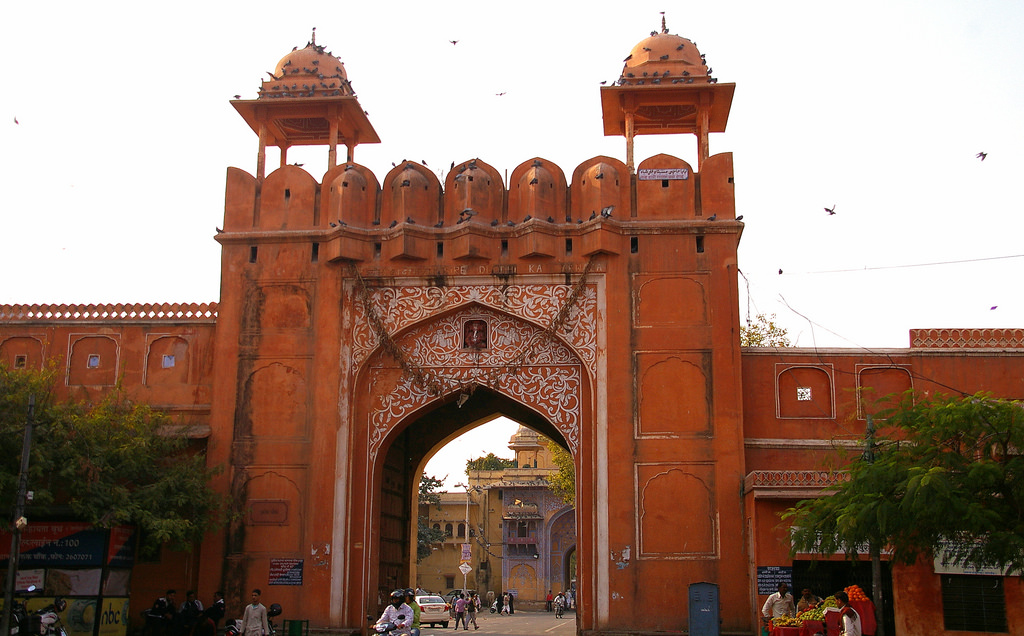
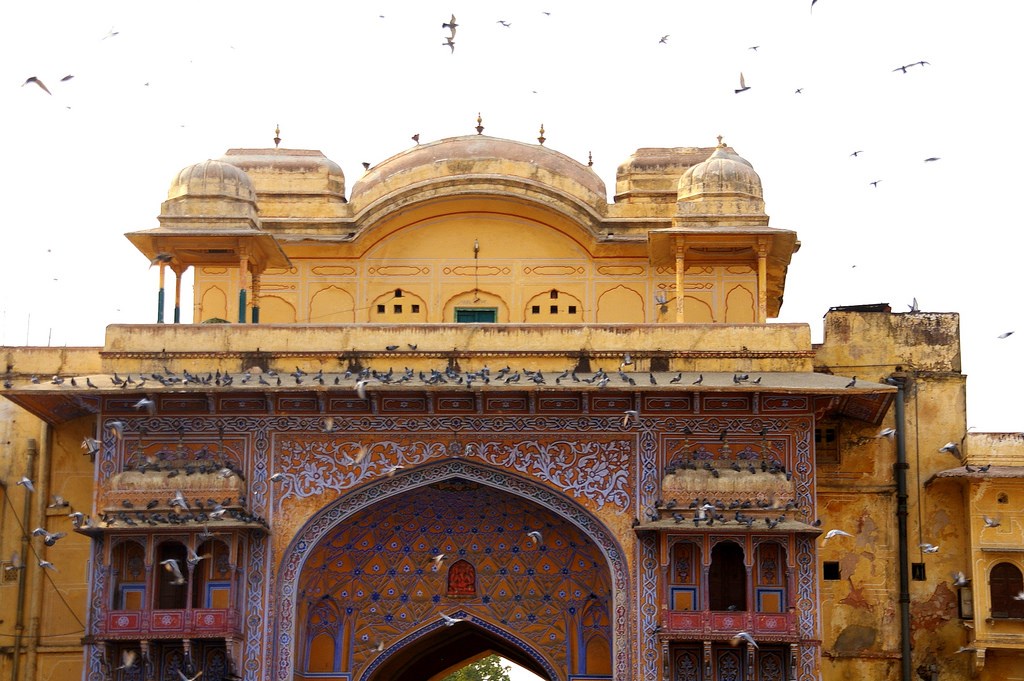
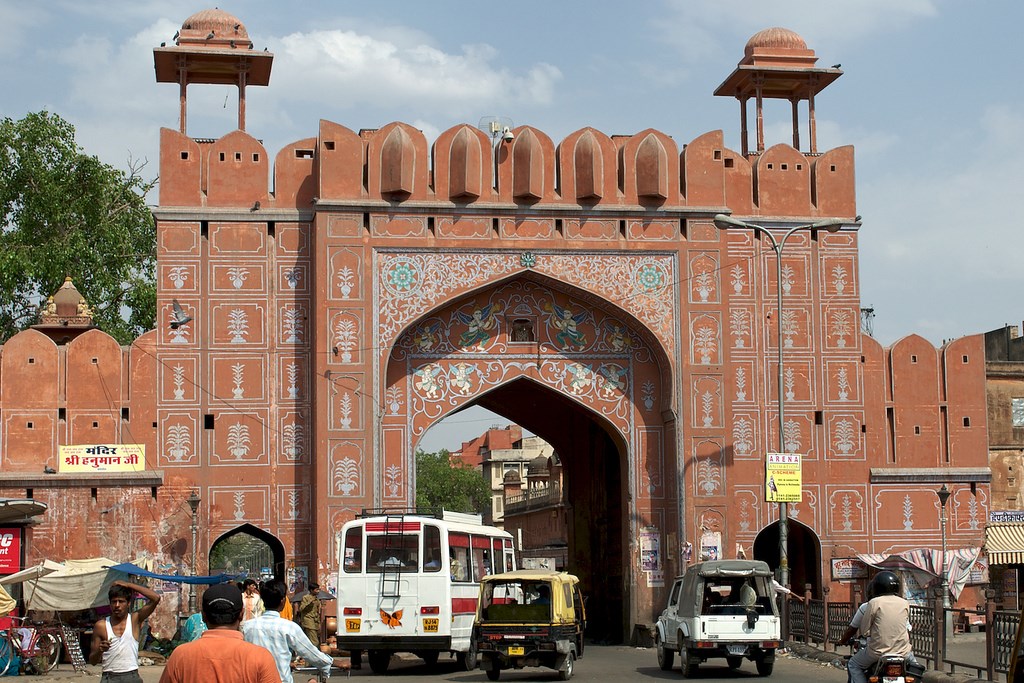
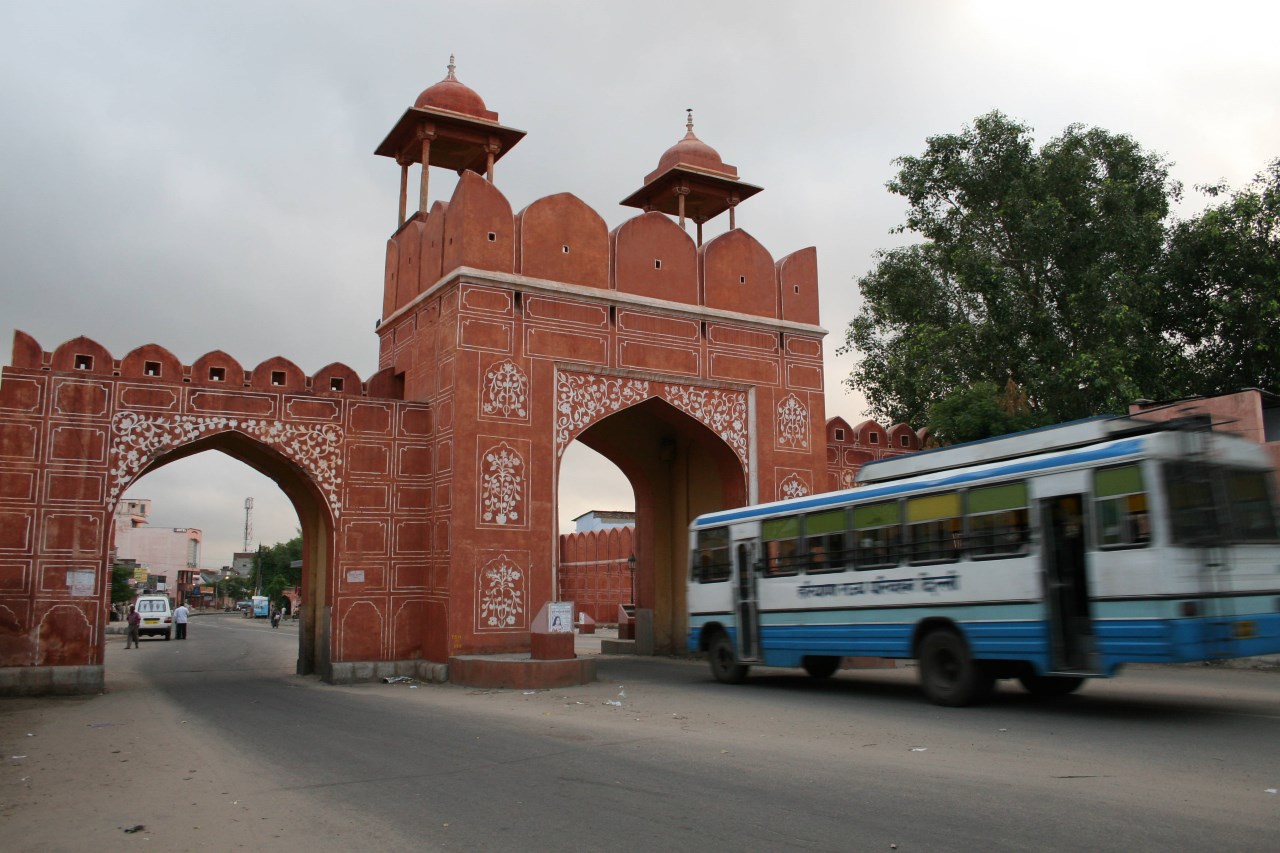
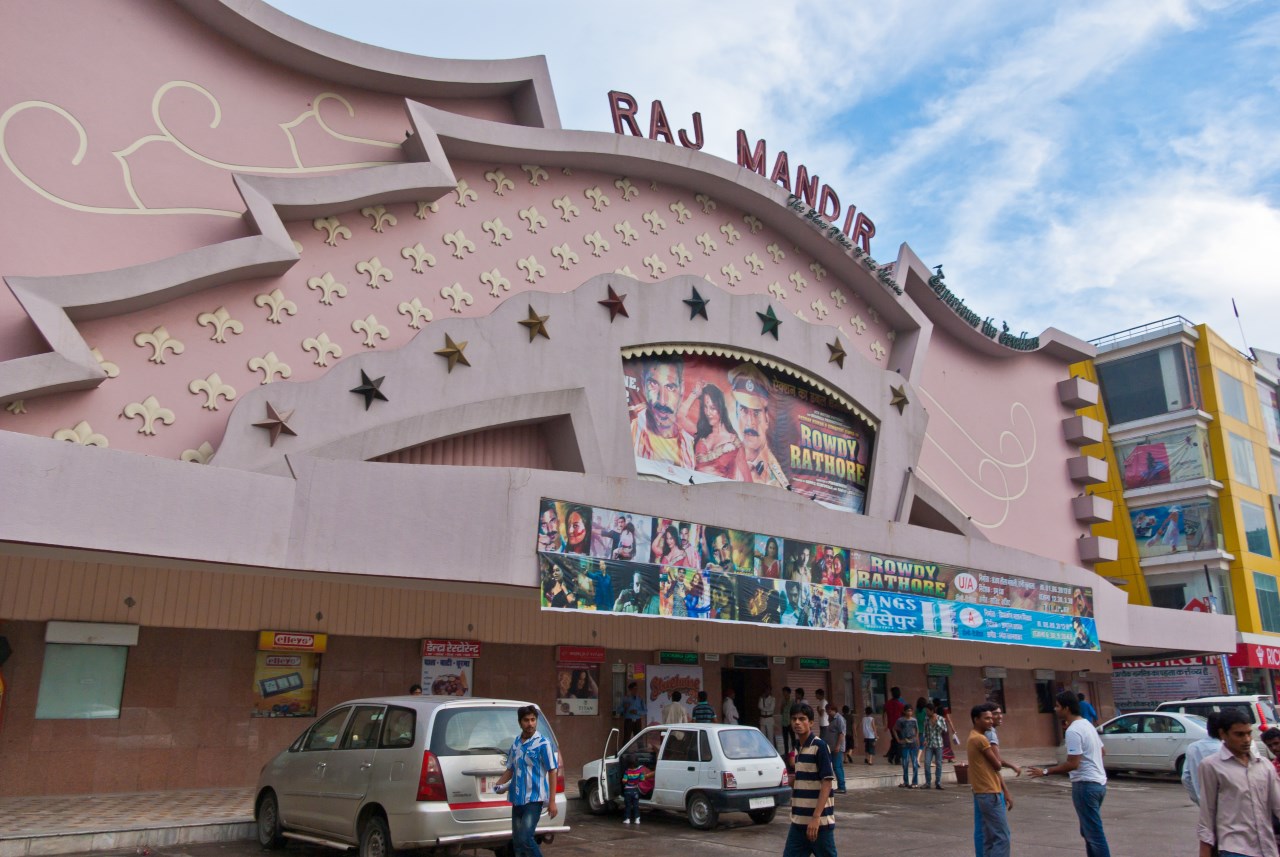
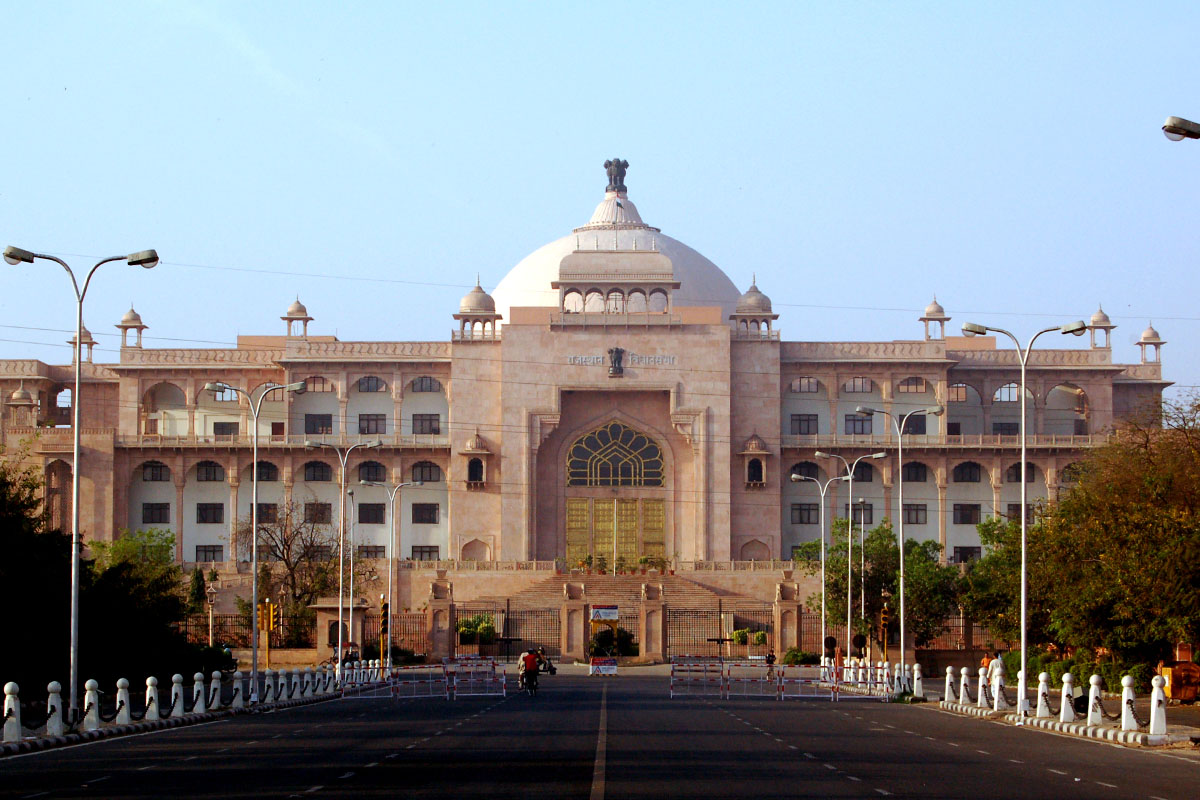
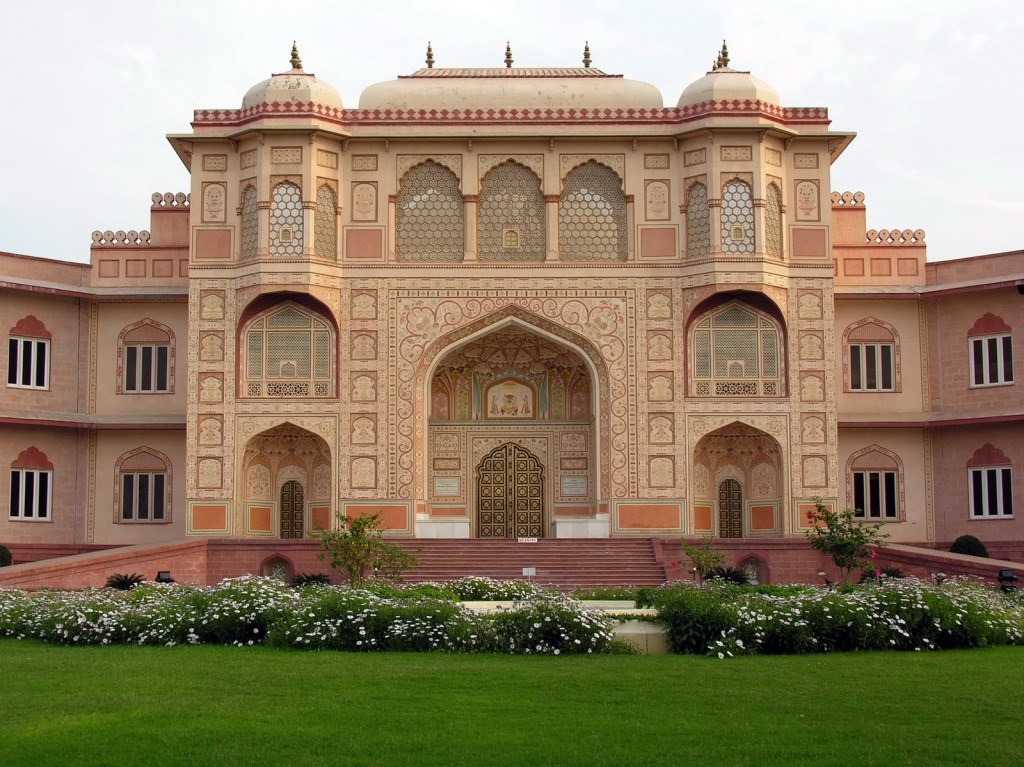
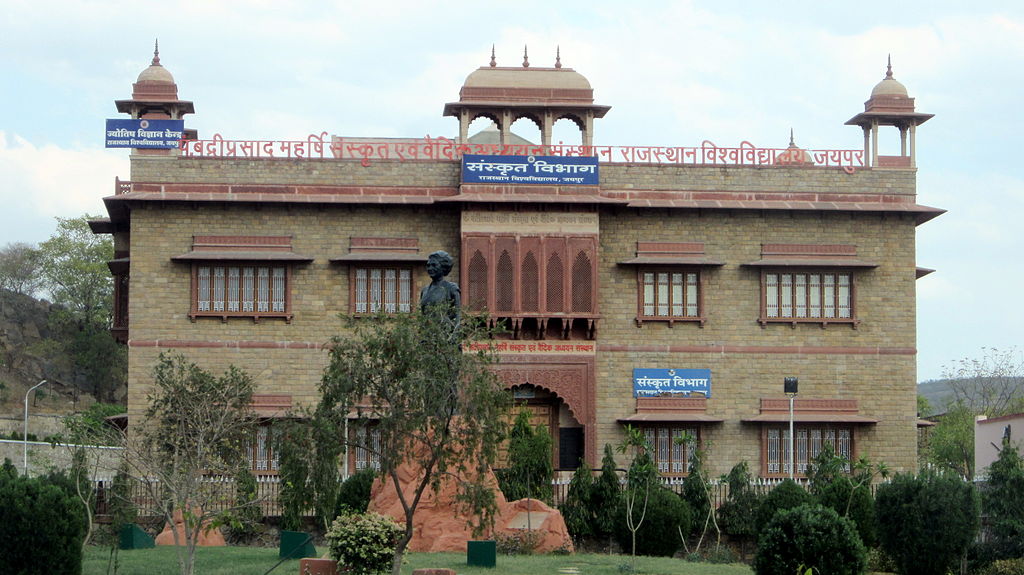
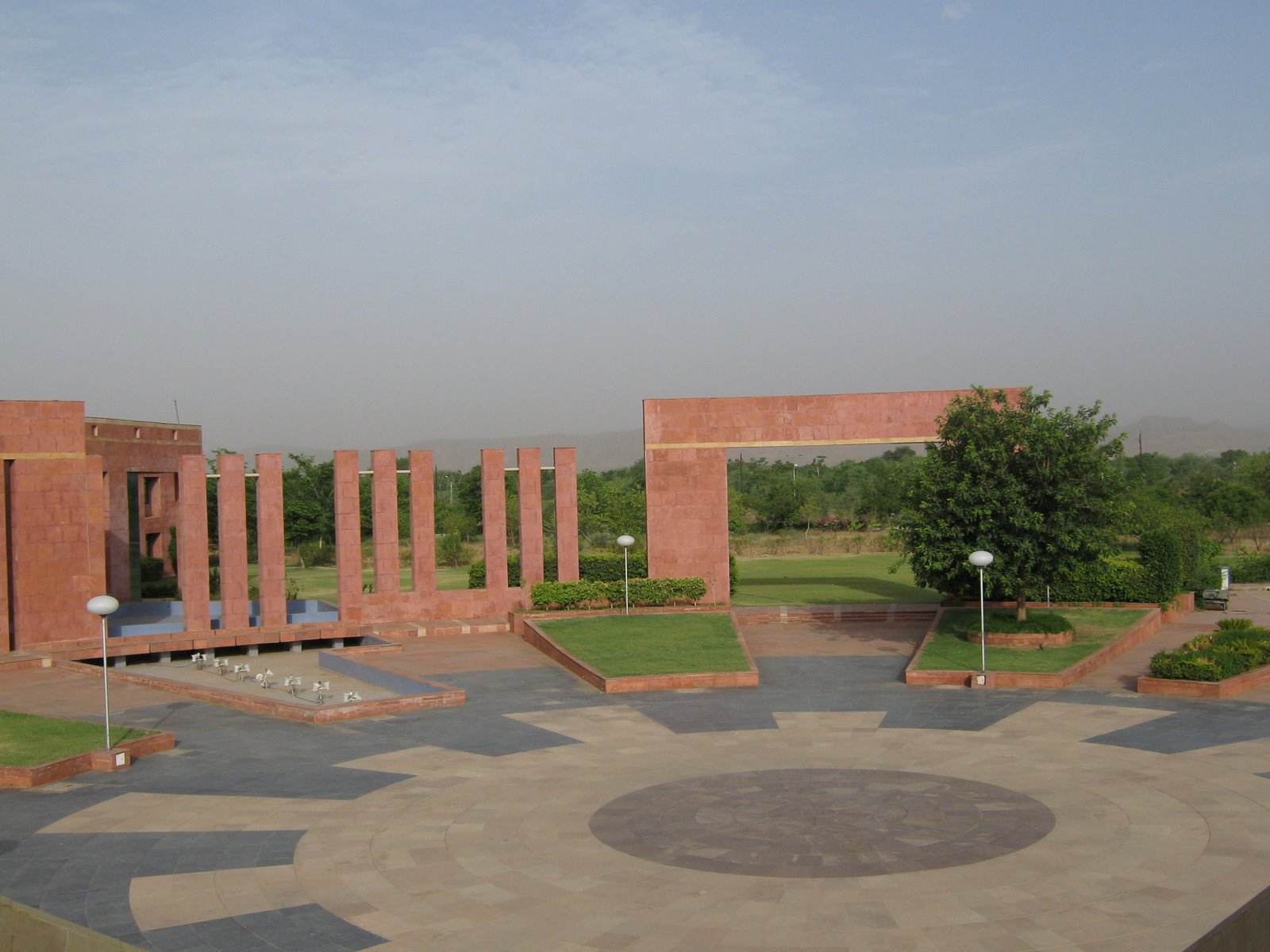
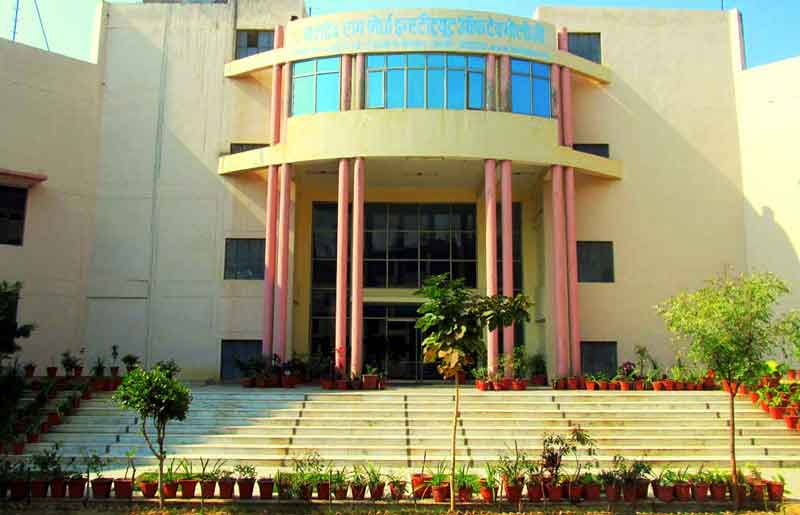
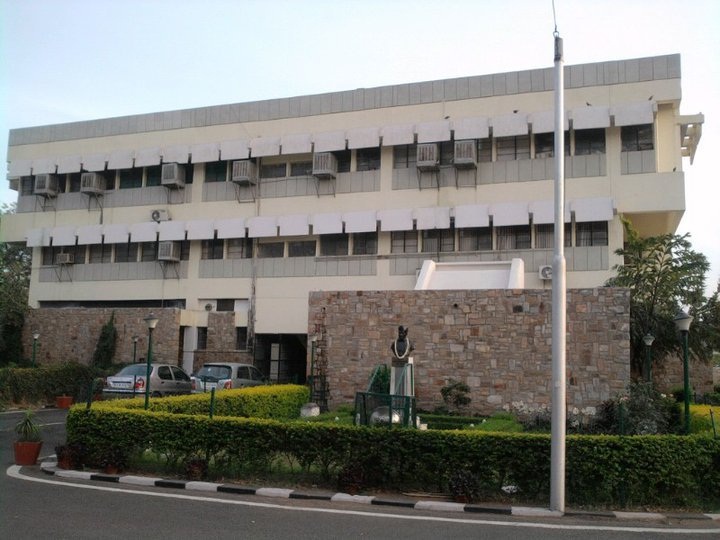

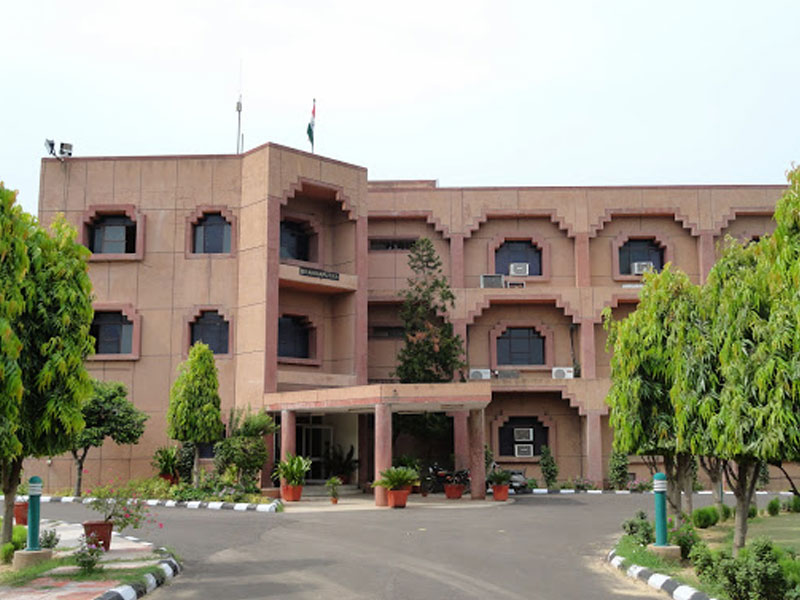
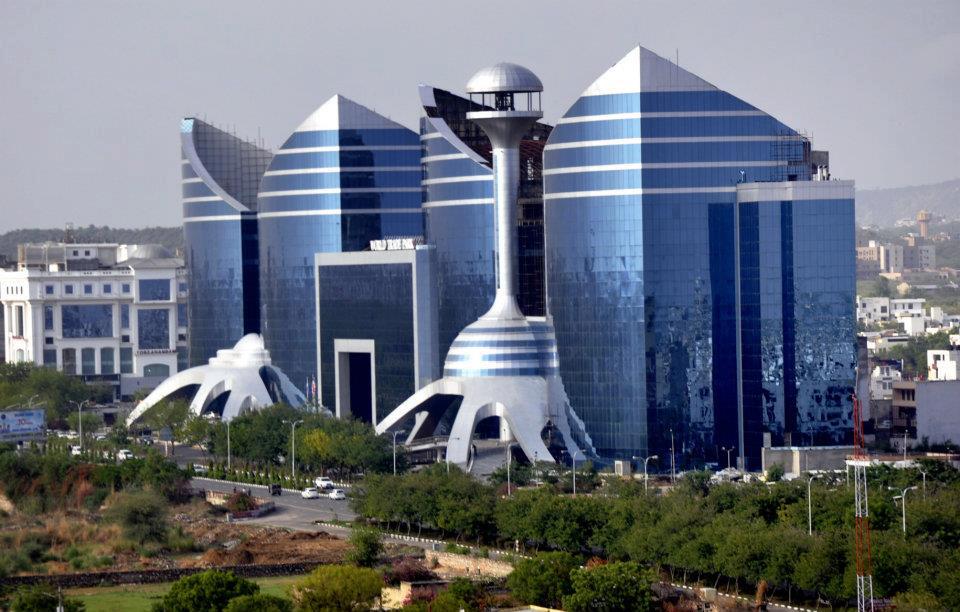
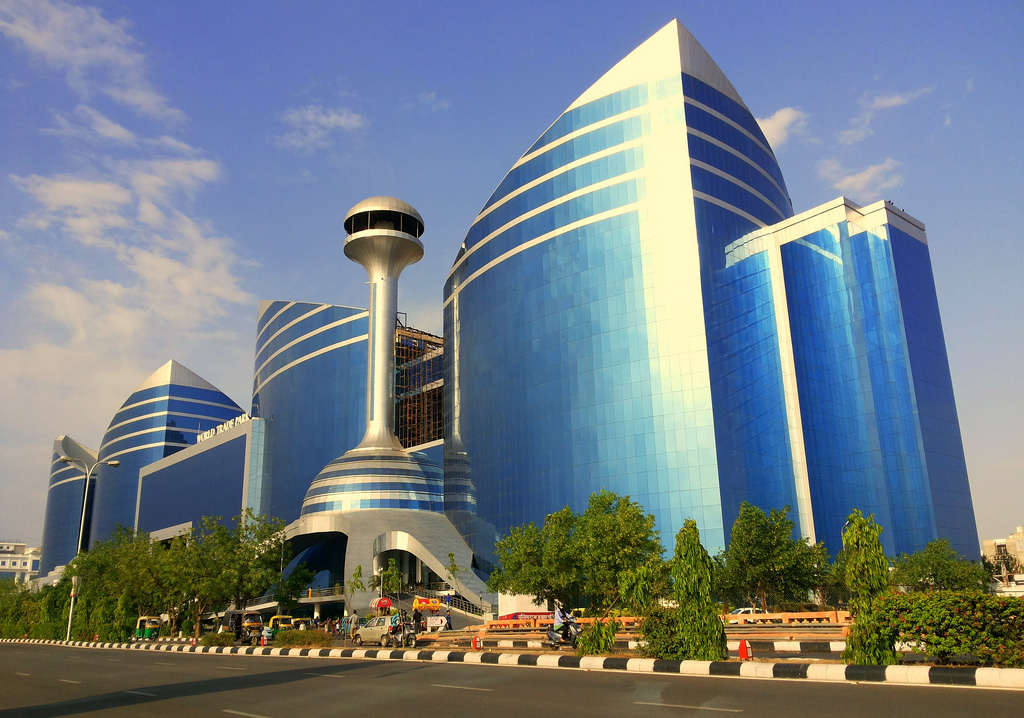
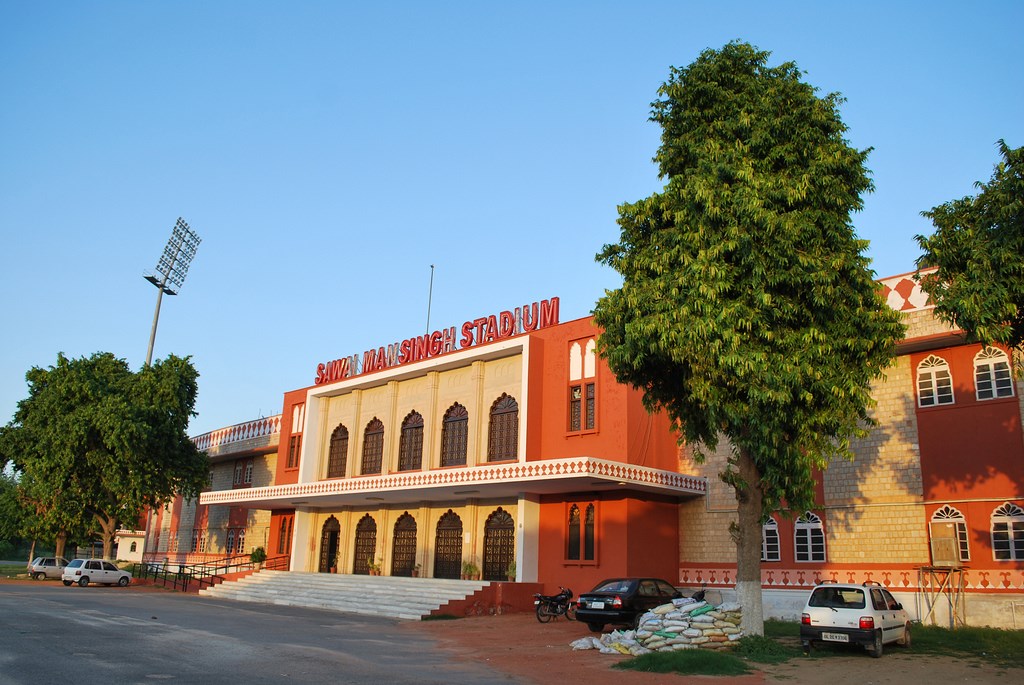
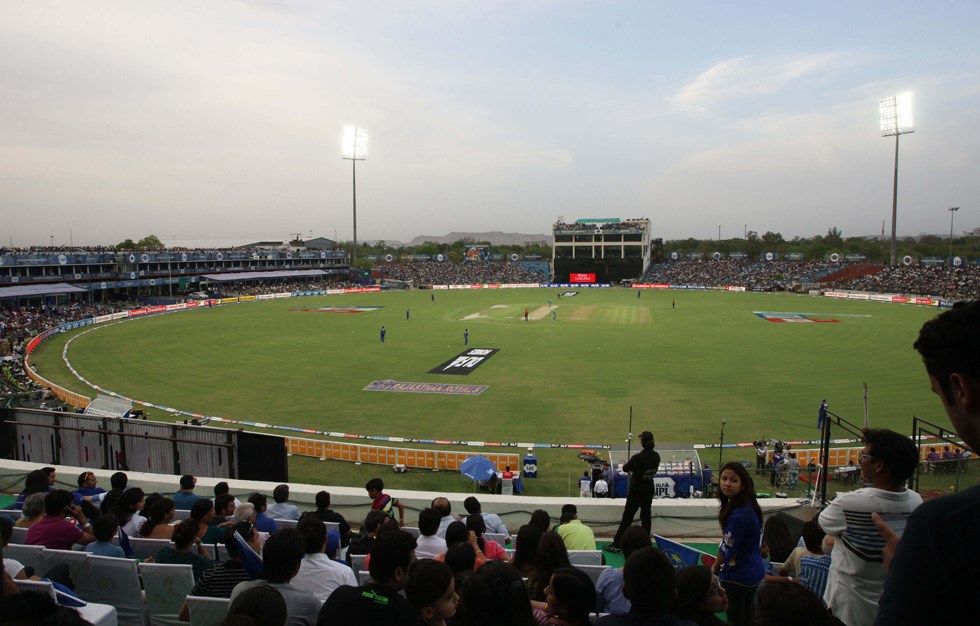
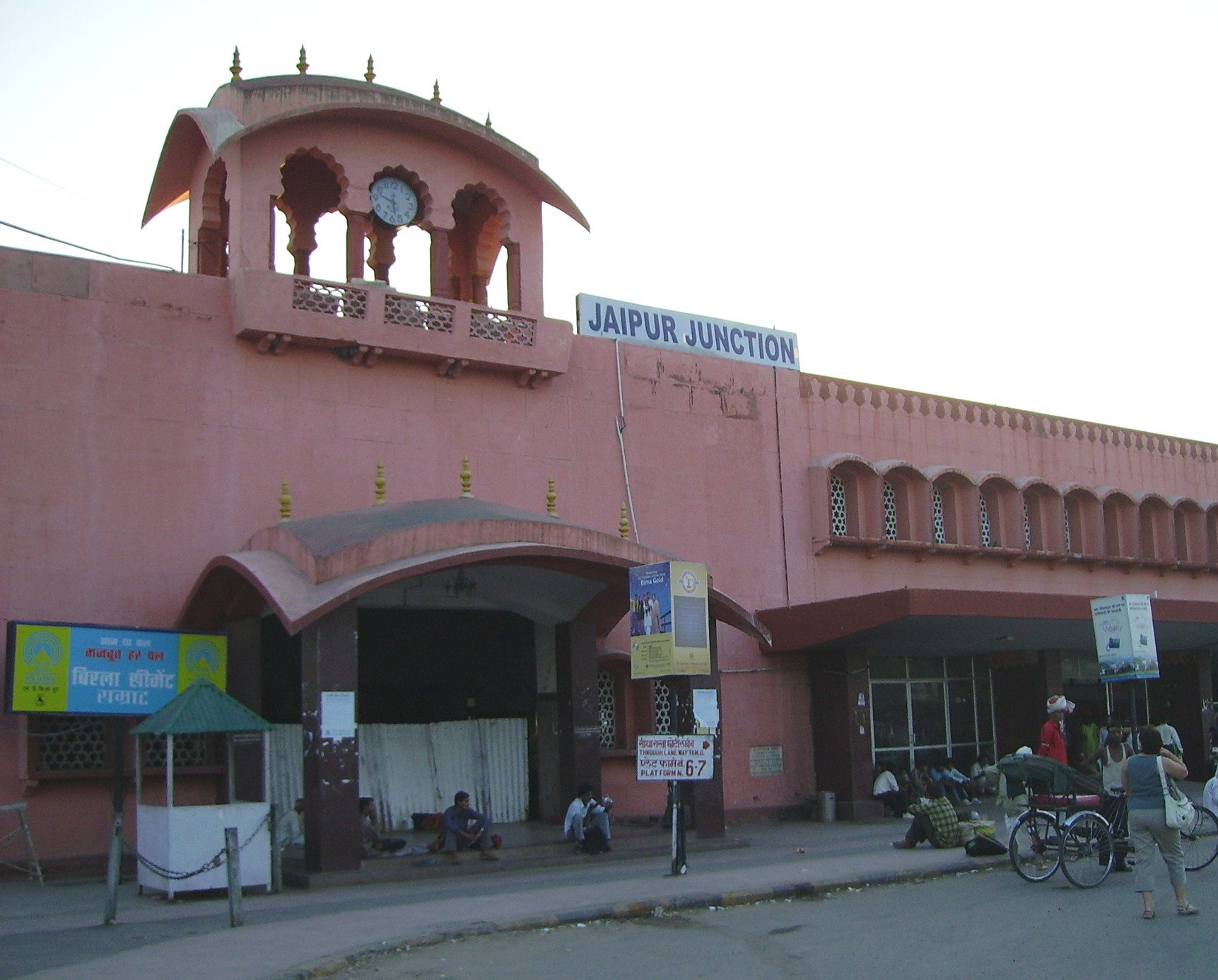

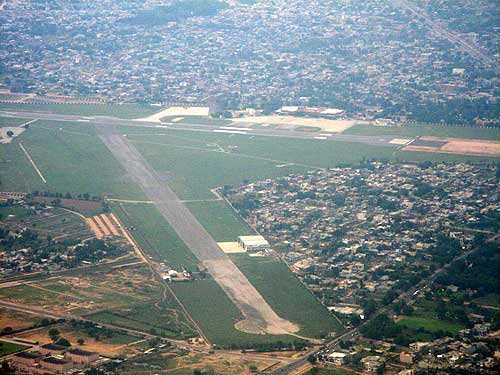
Jaipur (en hindi जयपुर), conocida también como la ciudad rosa, es la capital del estado de Rajastán en la India. Su población en el año 2003 era de 2,7 millones de habitantes.
La ciudad fue construida en estuco rosado para imitar la arenisca. En 1905 el príncipe de Gales visitó Jaipur. Para darle una bienvenida correcta se decidió volver a pintar los edificios de la ciudad de color rosa. Desde entonces, este color se considera un símbolo de la hospitalidad de Jaipur.
Es un modelo como ciudad pre-moderna en cuanto a la regulación de sus calles. La ciudad está dividida en seis barrios, separados por avenidas de unos 34 metros de ancho. Estos barrios están subdivididos por calles enrejadas. Cinco barrios se extienden por el este, el sur y el oeste del barrio correspondiente al Palacio. Este último barrio incluía el complejo del palacio (el Hawa Mahal o Palacio de los vientos), jardines y un pequeño lago. Jaipur es una de las ciudades con más historia de la India.
Estado principesco
La ciudad de Jaipur fue fundada en 1728 por el maharajá Sawai Jai Singh, gobernante de Amber y gran aficionado a la astronomía. Jai Singh II fue un gobernante diplomático y sus múltiples alianzas le permitieron abandonar la fortificada Amber y trasladar la capital a la nueva ciudad de Jaipur.
Durante el periodo del Raj Británico, la ciudad fue la capital del estado principesco del mismo nombre. Los maharajás de Jaipur pertenecían al clan de los Kachwaha, un clan que reclamaba ser descendiente de Rāma, rey de Ayodhya. Se cree que el estado fue fundado en 1128 por Dhula Rai y que su primera capital fue Amber. Los gobernantes de Jaipur proporcionaron al imperio mogol algunos de sus generales más destacados. Entre ellos estaba Man Singh que luchó en Orissa y Assam; Jai Singh que luchó con Aurangzeb; y Jai Singh II, fundador de la ciudad. El belicismo natural de los Kachwaha les obligó a fortificar la mayoría de sus ciudades y palacios.
A finales del siglo XVIII, los Jats de Bharatpur y el jefe de Alwar se anexionaron una parte de Jaipur. En esa época, el Estado estaba sumido en la confusión y en los conflictos internos. Las peleas entre los jefes de Jaipur y de Jodhpur llevaron a ambos Estados al borde de la ruina y Amir Khan, un aventurero afgano, se dedicó a saquear el país. Mediante un tratado firmado en 1818, la protección británica se extendió hasta Jaipur y se fijó un tributo anual. En 1835 se produjeron una serie de revueltas en la ciudad en las que tuvo que intervenir el gobernador británico. Durante la revuelta de 1857 el maharajá ayudó a los británicos. Tras la abolición del principado por Indira Gandhi, el maharajá conservó únicamente funciones honoríficas. El actual maharajá de Jaipur, Bhawani Singh, ejerce un papel fundamentalmente cultural y mantiene su residencia en un pabellón privado del palacio real de Jaipur, aunque reside habitualmente en Londres.
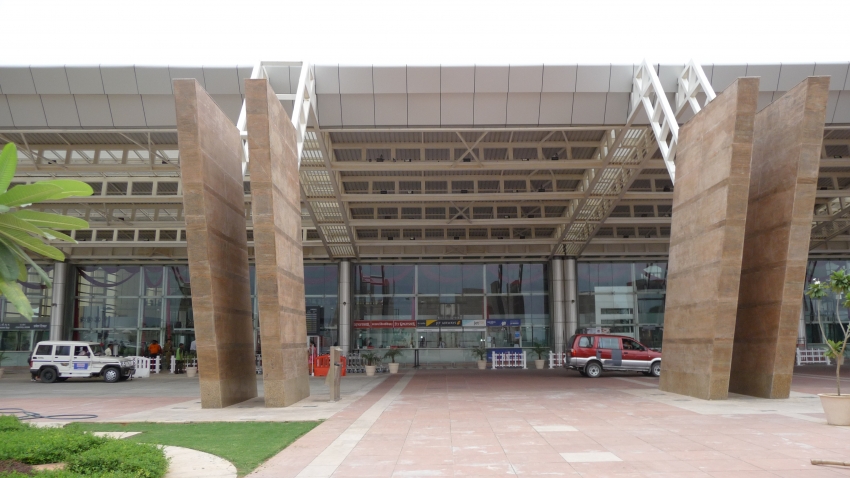
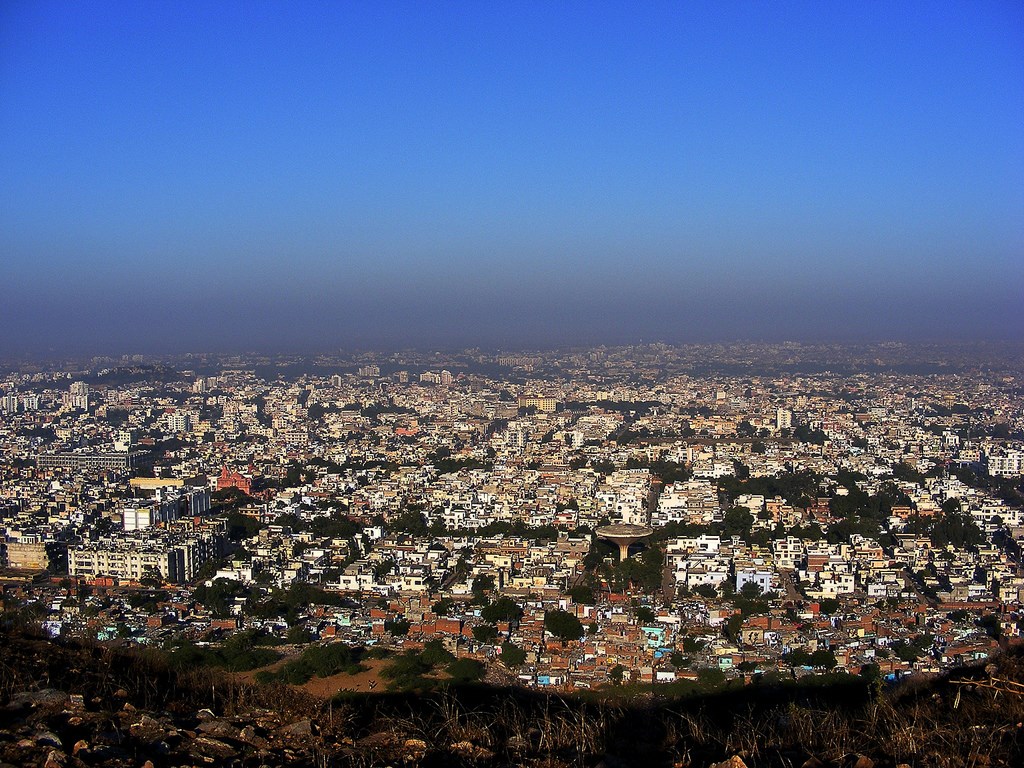
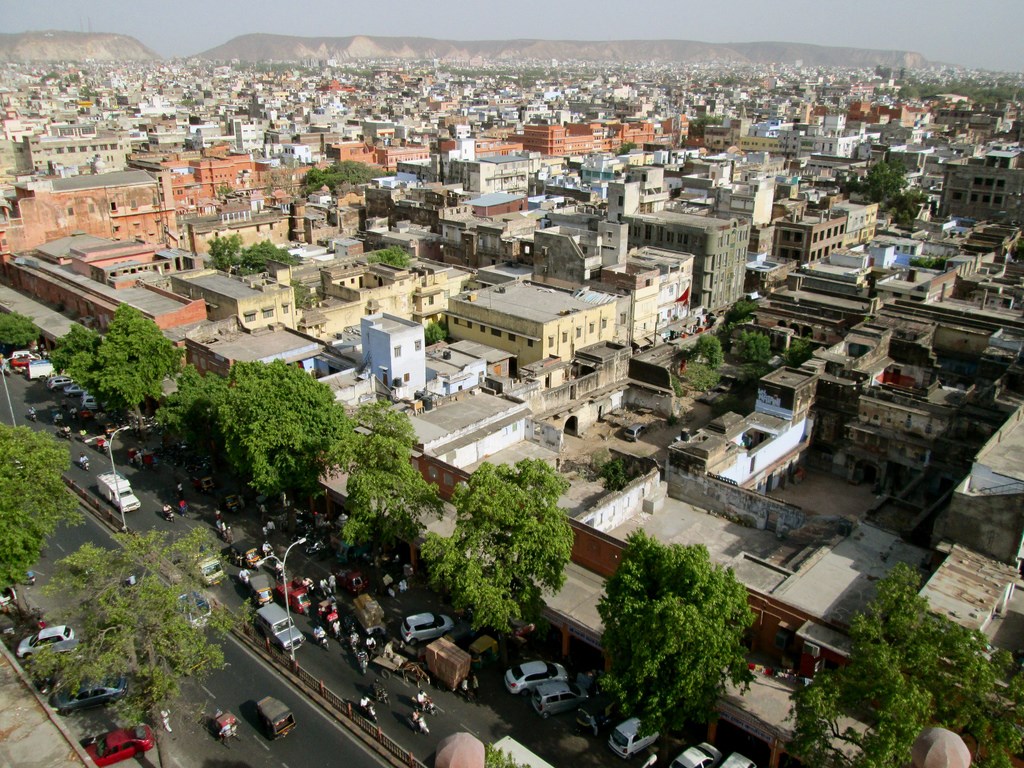
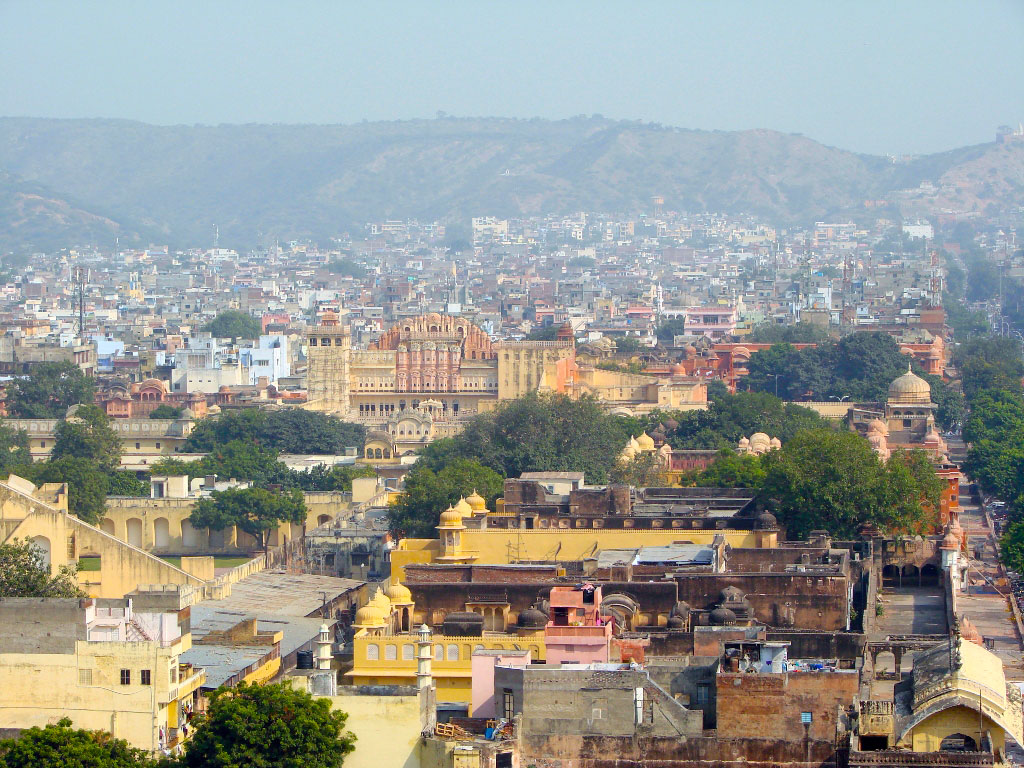

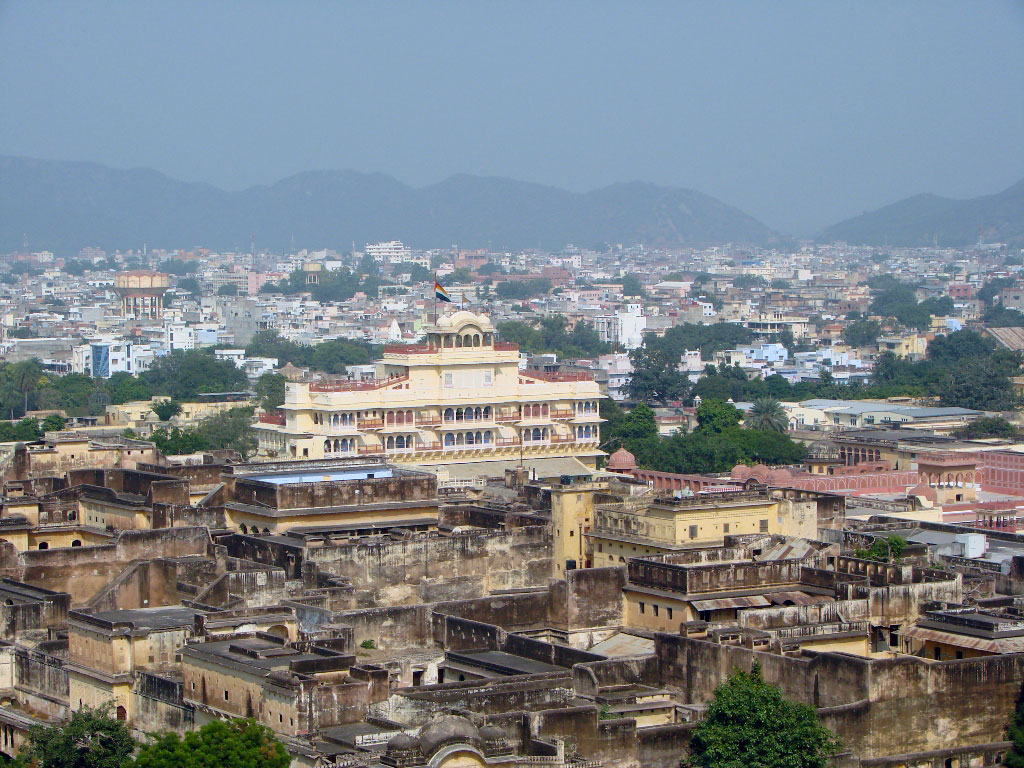
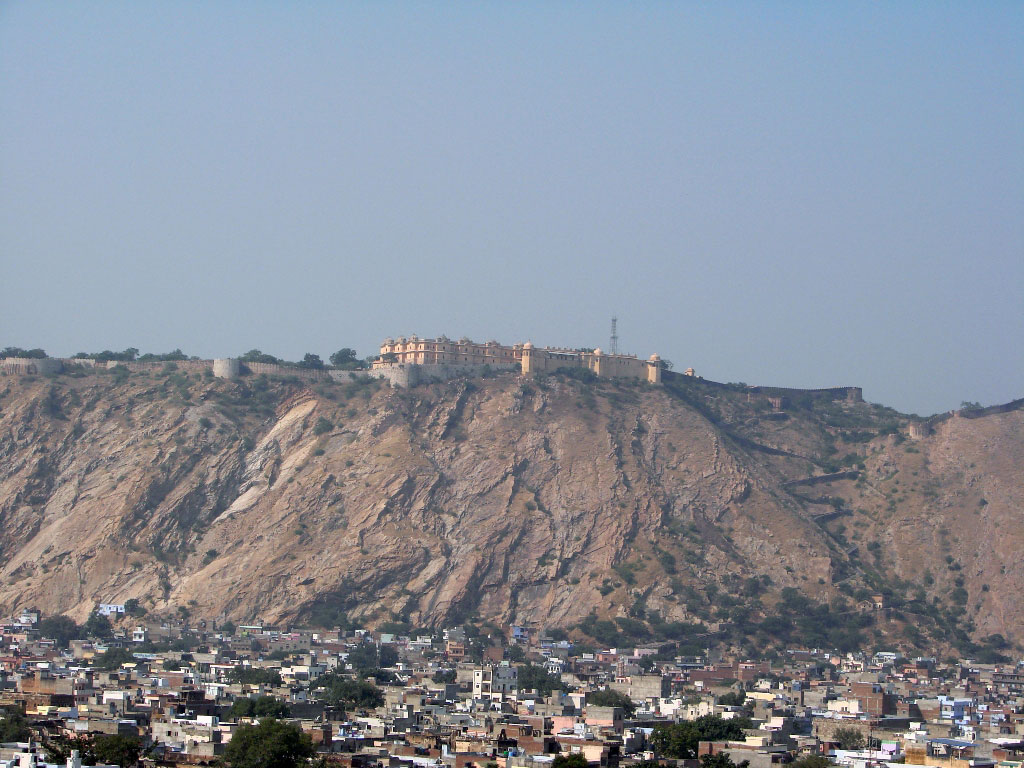
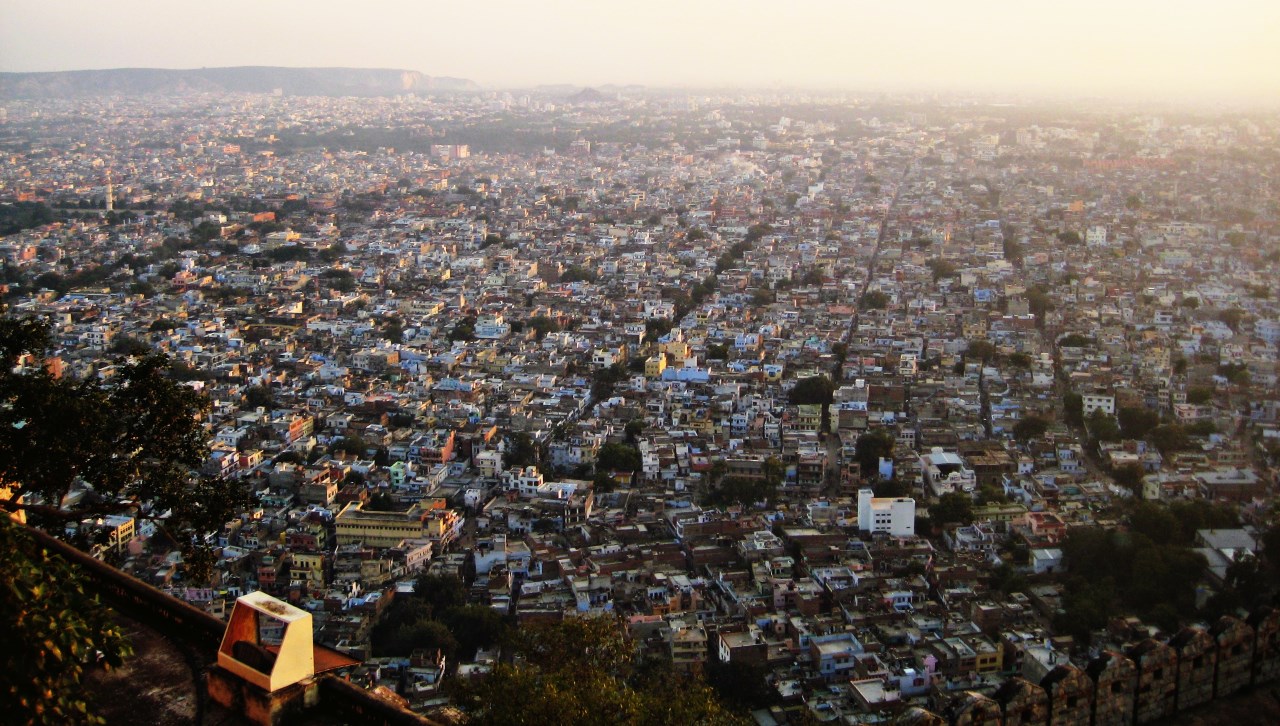
La ciudad rosa
Llaman así al casco antiguo mandado construir por Jai Singh II. Todos los edificios históricos están pintados de un color rosa salmón que en Rajastán equivale al color de la suerte. Su fundador, gran aficionado a las ciencias y sobre todo a la astronomía, mandó construir un gran observatorio en la ciudad.
La ciudad es simétrica, con trazado geométrico muy racional. Está rodeada de una muralla almenada que tiene diez puertas. Está diseñada según el Shilpa Sastra (un tratado antiguo de arquitectura), dividida en nueve cuadrantes con calles anchas de más de 30 m; de esos nueve cuadrantes dos están dedicados al complejo palaciego con el Chandra Mahal o Palacio de la ciudad, el Hava Mahal o Palacio de los Vientos y el Jantar Mantar u observatorio de Jai Singh; los otros siete están ocupados por el pueblo.
En el siglo XXI su economía se basa en el comercio, sección de servicios y turismo.
Lugares de interés
El Hawa Mahal o Palacio de los vientos.
El Jantar Mantar
El Palacio de la Ciudad, residencia histórica de los maharajas.
El Jal Mahal, palacio situado en el centro de un lago.
El Observatorio de Jai Singh
El Museo Albert Hall, localizado en el centro de la ciudad, contiene diversas colecciones de esculturas y pinturas. Se construyó en 1876 y se inauguró como museo en 1887
El Fuerte Amber
A 95 km de Jaipur se encuentra la localidad de Abhaneri, conocida por poseer uno de los primeros baoris o pozos construidos en Rajastán para recoger el agua en la estación de las lluvias, el llamado Chand Baori, realzizado por el legendario rey Chandra.
http://es.wikipedia.org/wiki/Jaipur
Pinche para ver las Fuentes seleccionadas
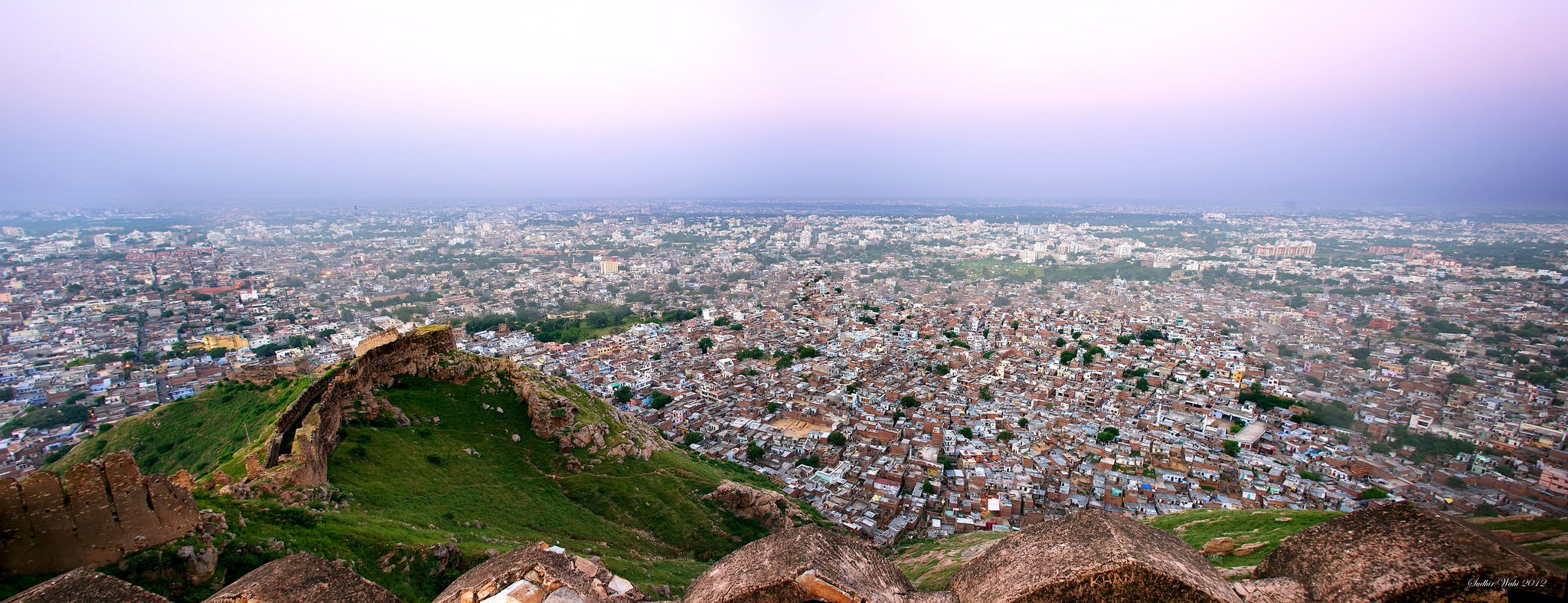


Vídeo:
Web recomendada: http://www.jaipur.rajasthan.gov.in/content/raj/jaipur/en/home.html
Contador: 5867
Inserción: 2015-04-26 19:17:43
Lugares a visitar en un radio de 100 km (en línea recta)
Mapa de los lugares a 100 km (en línea recta)
Mostrando Registros desde el 1 hasta el 0 de un total de 0
Visitas |
Más visitados Basílica de San Marcos 148995 Catedral de Notre Dame (París) 137609 Torre de Pisa 128167 Monte Saint-Michel 97282 Presa de las Tres Gargantas 73618 |
Incorporaciones |
Comentarios hazola Cúpula de la Roca gracias me... gera Buenos Aires las mejores fotos de la mejor ciudad del... Daniel M. - BRASIL San Francisco ... PEQUE Presa Chicoasén SERA QUE ALGUIEN ME PUEDE DAR MAS INFORMACIÓN DE ESTE PROYECTO ESTUDIO EN LA UNACH Y ES PARA UN... Mery Huaca Pucllana Muy interesante, muy buena la información y... |
 Tweet
Tweet


